
Justraveling
Travel as It Should Be

Post-Tourism: Traveling Without the Hassle
In the field of Alternative Tourism, Post-Tourism is quite possibly the most controversial concept. Failing to find an entirely satisfactory definition, we decided to modestly suggest our own, in order to unite and give a shape to what’s already available in the literature.
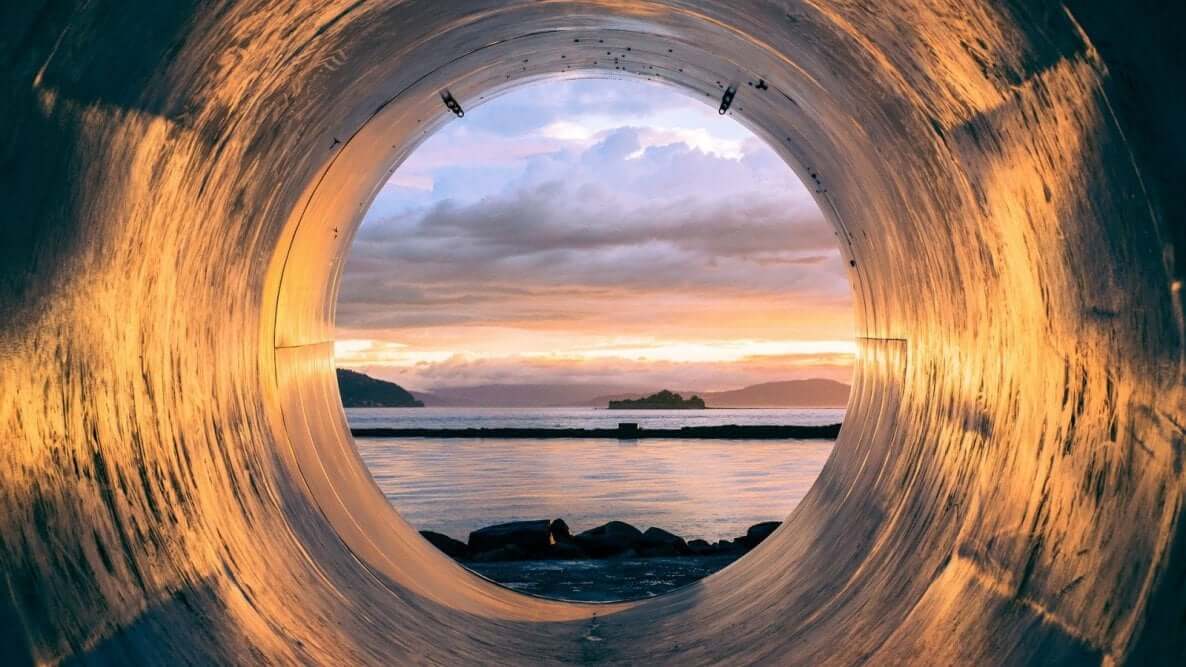
S o, for us, Post-Tourism simply refers to all those types of travel that encourage the overcoming of tourism, in all its forms. That may mean a complete rejection ( Anti-Tourism ), the choice to break the boundaries between everyday, ordinary life and travel ( Global Nomadism ), and the virtualization of the whole tourist experience ( Virtual Tourism ) or, alternatively, its gamification (Experimental Travel). Now, let’s have a brief look at the latter three types.
Global nomadism is a relatively new phenomenon that is involving a growing number of individuals, especially millennials, who can easily combine work or study with pleasure wherever they are, thanks to the extraordinary possibilities offered by the Internet, wireless communication, and the sharing economy.
Global nomads have no boundaries and don’t cope very well with the limitations imposed by the bourgeois society. Being able to adapt to any environment, they use Airbnb or Couchsurfing to find a place to stay, although most of the times that’s not even necessary, since they can rely on a vast network of contacts.
Virtual Tourism instead, is the attempt to replace or enhance tourism, which is seen as boring and tiresome, preferring to virtually explore places directly from home. If Second Life initially made it possible, virtual reality headsets, IMAX screens, and 3D technology now could make it even more “enjoyable”.
Think of Oculus , for example, which is already tempting us with messages like: “Let your mind explore… Time travel, space travel, or hang out with friends in VR.” Doesn’t this sound like a practical new way to travel? We tried to find an answer to this question by investigating how virtual tourism may look like .
Finally, Post-Tourism can also have a playful and humorous variation with the so-called Experimental Travel . According to French journalist Joël Henry , “it’s a new way to travel based on scientific or pseudo scientific rules.” Clearly inspired by Debord’s drifts , his LATOUREX offers many ideas to choose from, some just funny, others more doable. Anyhow, it seems an invitation to reinvent tourism.
Related Content: Anti-Tourism , Global Nomadism , Virtual Tourism , An Ode to Peripheral Tourism , Berlin Trails , Visual Rambling in the Republic of Catalonia , Activism & Street Art in Barcelona , (re)Wandering: Urban Exploration Gets Real .
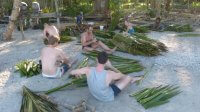
Share this page:
- Click to share on Twitter (Opens in new window)
- Click to share on Facebook (Opens in new window)
- Click to email this to a friend (Opens in new window)
Privacy Overview
This website uses cookies to improve your experience while you navigate through the website. Out of these cookies, the cookies that are categorized as necessary are stored on your browser as they are essential for the working of basic functionalities of the website. We also use third-party cookies that help us analyze and understand how you use this website. These cookies will be stored in your browser only with your consent. You also have the option to opt-out of these cookies. But opting out of some of these cookies may have an effect on your browsing experience.
Necessary cookies are absolutely essential for the website to function properly. This category only includes cookies that ensures basic functionalities and security features of the website. These cookies do not store any personal information.
Any cookies that may not be particularly necessary for the website to function and is used specifically to collect user personal data via analytics, ads, other embedded contents are termed as non-necessary cookies. It is mandatory to procure user consent prior to running these cookies on your website.
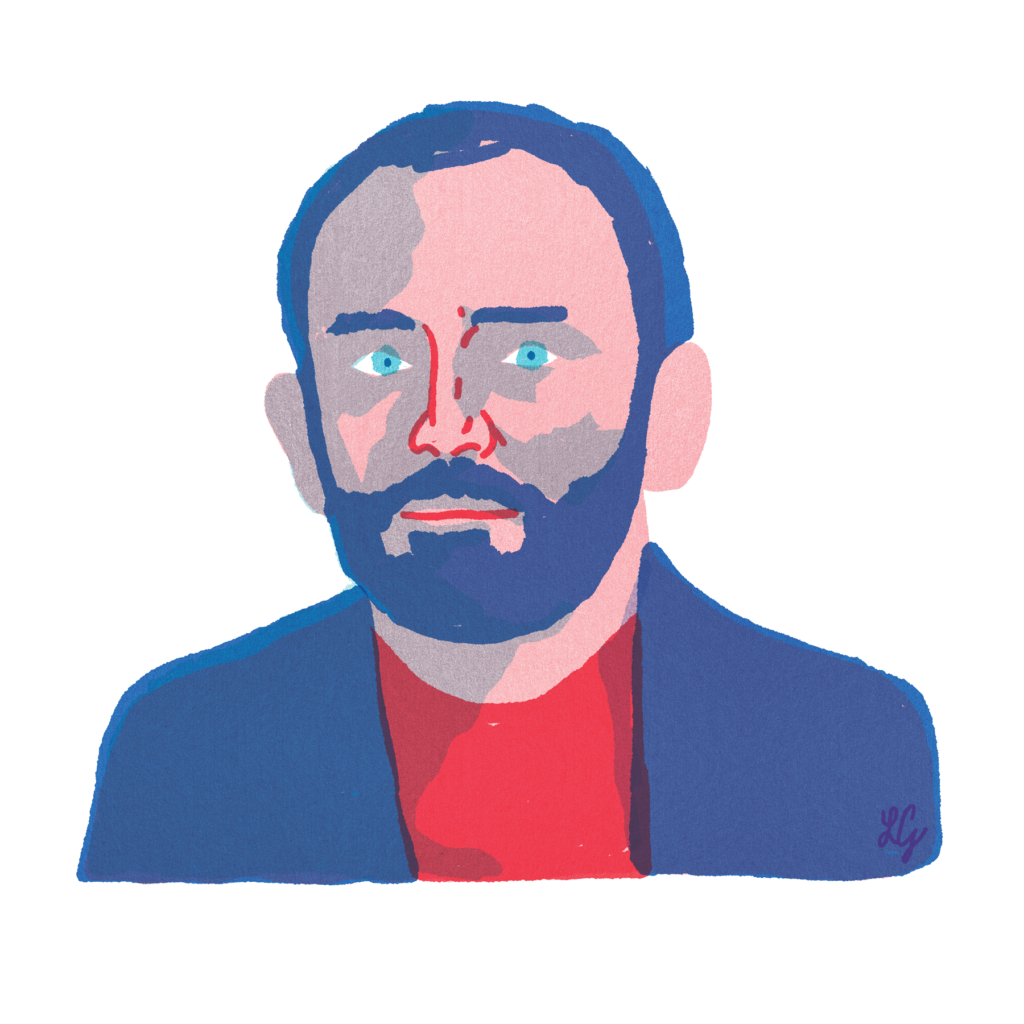
“If places in the world are becoming more and more alike, what's the point of tourism?”
George Ritzer is the American sociologist and father of the theories of McDisneyization and post-tourism. His book McDonaldization of Society is one of the pillars of sociology.Supported by ELISAVA Barcelona School of Design and Engineering
Everything that happens in an amusement park like Disney World is designed to be efficient, predictable, calculable, and controlled. Visitors are given exactly what they expected and benefits are maximised. As mass tourism grows worldwide, these principles are applied to cities like Barcelona, Venice, and Amsterdam. Isn’t that a good thing? Not really. This process is what American sociologist George Rizter refers to as McDisneyization: the culture and true character of a destination are rationalised into an idealized, safe, and easy-to-consume vacation package. A conversation about post-tourism, the luxury of authenticity, and the future of our cities.
- McDisneyization today
- What can governments do?
- The case of Barcelona
- Creating quality tourism
- Travelling while working
- The luxury of authenticity
- Who are the post-tourists?
- From package tours to package experiences
- Do we really want unique experiences?
- Performance vs identity
You said in 1992, that tourism was undergoing a dramatic transformation. What’s the status of the industry now, in your vision?
I think on the one hand, tourism has been highly McDonaldized in various ways. And on the other hand, tourist locations like Barcelona, or Venice, have become McDisneyized. They have become largely —or at least to some degree— rationalized simulations. They’ve been turned into sort of natural theme parks.
What can we do about this as citizens?
There isn’t much that you can do. The paradox is that you have to avoid the most popular tourist sites in the world , because they’ve been rationalized by the cities in which they exist. So you have to, on your own, hunt for those non-rationalized experiences. You can find them . But I compare it to the past, it used to be pretty easy to find a non-rationalized experience. For me, it’s harder and harder now to find something in Europe that is unfamiliar and non-rationalized.
And do you know any case of a city council or government that is really addressing the problem and doing it well?
I don’t know any examples, because I think both local and national governments want to maximize the income from tourism, and I don’t think they’re interested in authenticity. I think authenticity is just going to be harder and harder to come by.
But the paradox is that, if places in the world are becoming more and more alike, what’s the point of tourism ? What’s the point of going to Paris and eating in McDonald’s for an American?
“Gaudi hates you” “Tourism is killing neighborhoods” “This is an invasion” “Tourists go home” These are just a few messages from people in Barcelona, delivered through graffiti, banners, street protests and demonstrations. The citizens of the capital of Catalonia, like many others across Europe, are sick of Tourism. What went wrong?
Mass tourism. More and more people want to go to the major tourist spots across the world. And those spots are seeking to accommodate them in order to make the most money from them. And in order to do that, they rationalize themselves in various ways, and eventually lose their authenticity.
Do you think tourists are looking for authenticity?
No, they travel to see the McDonaldized forms of (in)authenticity. I mean, you have to look very hard in order to find authentic tourism. But the term, authenticity, is in itself difficult to define. It’s hard to know authenticity when you see it. I once had a French graduate student who came to my university for a year to work with me on the question of authenticity. And in the end, we were very frustrated by our difficulty in defining authenticity, because after all, you can have fake authenticity, right? You can make something that is fake seem authentic. It’s a conceptual issue.
Over the 25 years since the Olympics, we’ve seen a huge growth in tourism. Barcelona’s cruise port is the busiest in Europe. Its Airport is the second-fastest growing. Airbnb is taking over the city centre. It has become the poster city for how a place can groan under the weight of its popularity. What can the city do to revert the process?
Organizations are interested in making profit. The more people you can bring to Barcelona, or Venice, or Paris, the better from a profit-making point of view. But in order to accommodate all those tourists, you have to create rationalized structures that move people through the system in an effective way. Basically, t ourism becomes a kind of assembly line where people want to move through each of the major attractions in Europe as quickly and rapidly as possible . Get a few photographs, see a few sights, visit the Gaudi spots in Barcelona, and then, move on. I don’t think tourists want or get an authentic experience. You’re herded through these locations as quickly as possible.
And don’t you think there’s a way to bring back quality tourism, if it ever existed?
One of the dimensions of McDonald’s is quantity not quality: the emphasis is not on the quality of the hamburgers. And I think the same applies to tourism. You have cruise ships docking in Venice, bringing thousands of passengers in at a time, and they’ve got 12 hours to see Venice. Get off the boat, see Venice, and get back onboard.
And if tourism is operated in that way, it is very difficult to have any kind of authentic experience . It’s really all about just a brief stop at the major tourist attractions, and then, off you go. And people who travel that way don’t want or don’t even know what an authentic experience would be . Those who run these kinds of things, like the cruise liners or the tourist centers in Venice, aren’t really interested in offering that.
Most of the time when I’ve traveled around the world and visited Europe, academics have taken me to see Barcelona, Venice, or Paris, and I get a much more authentic experience than the mass tourism that most people encounter. The problem is those profit-making organizations which want to maximize the experience and minimize the authenticity for people, because I think to really authentically experience a place requires time . Most often tourists don’t have that time.
If you work all year round and you can spend just a few days of holidays in Paris, of course you will go to see the Eiffel Tower. If everybody goes for a couple of days, then the Trocadero will be crowded all the time, and a theme park will start to build up around the crowd. Can this be avoided?
I used to write about what I call the escape routes from McDonaldization. Some people looked for and found ways of escaping rationalization. As soon as a large number of people do that, along come organizations, especially profit-making organizations, that McDonaldized those sites. So I’ve got a kind of pessimistic view about that.
It’s all about a work/life balance. Most people travel when they aren’t working. Do you think something would change if private companies and city councils could create spaces that would allow people to travel while working?
You could create spaces outside of Barcelona, outside of the main tourist attractions, but my perspective is as soon as you are able to attract large numbers of people, those who run and own these kinds of areas are going to McDonaldize them. The other problem is that most people want to see the world’s major sites: they want to see Gaudí in Barcelona, walk down the Ramblas, and things like that. Most people would not be interested in travel outside of rationalized cities.
Everything that is rationalised is produced in great mass and therefore costs much less to the final buyer. McDonaldized experiences are much cheaper than visiting “real” places. Off the beaten track tends to be more expensive than visiting inauthentic locales. Will authentic experiences —if any exist— become the new luxury?
I think the truth is that authenticity is going to be increasingly only available to wealthy people . They certainly still want it. But most of the people in the world are going to have to be satisfied with simulated experiences of one kind or another. So they’re going to go to Disney World to experience a submarine ride, rather than actually experiencing a real submarine ride themselves.
Besides all the latest talk about the identity of Catalonia, Barcelona has for years been seen as an outpost for Hispanicism. People would walk down the Ramblas wearing a Mexican sombrero or drinking at inappropriate times. This is an issue of ignorance that creates damage on a greater scale than perhaps expected: basically it generates hatred among locals. Why do you think this conflict has become such a growing concern?
My view is that people, particularly Americans, have been increasingly accustomed to McDonaldized experiences, and when they go elsewhere in the world, they want those experiences. It’s hard to sell American tourists experiences that are outside the main tourist sites and are not McDonaldized. So McDonaldization breeds a kind of person who wants more and more McDonaldized experiences. If you know Max Weber’s work, this is his ‘ iron cage ’ image . I once joked that we ought to have a global tour of the great McDonald’s restaurants. I think people would probably be interested in doing that, but it’s basically going to the same place in Paris, and Barcelona, and Beijing, etc.
I even remember years ago being in Ireland, and being told by four American graduate students that whenever they went to Europe, they got to the hotel, threw their bags on the bed, and went to McDonald’s. That was one of the worst things I ever heard from the point of view of tourism. I mean, McDonald’s is devoid of place. It’s got no authenticity.
And it’s one thing for Americans to go to Paris and run to McDonald’s, but it’s quite another thing for people from Ireland or Poland (or wherever) to want to go to McDonald’s.
Do you think alternative tourism is being McDonaldized, or is there a part of this particular type of tourist that is really looking for pure experiences?
I read that statement by the guy from Patagonia (our latest interview) and I think there are organizations that are trying to support authentic tourism . But as soon as they find or create it other people find it too and the pressure rises to McDonaldize it. The example I like is in the book Into Thin Air, the book about climbing Everest by Krakauer. Climbing Mt. Everest should be and was one of the most non-McDonaldized experiences that one could have . But in a variety of ways, outdoor sports organizations have created the technology and have sought to McDonaldize even the climbing of Everest. It could never be totally McDonaldized, but there have certainly been efforts to do that.
The result is that those who climb for the thrill of climbing don’t like the experience. It’s no longer as authentic as it used to be. And I think that kind of dynamic occurs in many different settings where people discover something and try, initially, to enjoy an authentic experience; efforts are then made to accommodate a large number of people; and eventually you need to rationalize it in order to allow even larger numbers of people to experience it.
Would you call this kind of tourist a post-tourist?
Post-tourism theoretically indicates the kinds of people looking for an experience and an environment other than the typical modern rationalized kinds of tourist experience. And there’s certainly space in the world for people to move in this direction: they’re in the great minority. Post-tourists are not sources of great profit to the corporations and organizations that are involved. It’s mass tourism that’s the source of great profit. So you’ve got that constant tension.
But it’s always an unfair struggle. You’ve got individuals, small organizations, that are pushing for post-tourist experiences , but then, you’ve got enormous organizations like Disney, for example, that are pushing for more modern forms of tourism: rationalized, highly profitable forms of tourism. So that struggle goes on. But from my point of view, the power in that struggle lies with Disney, and McDonalds, and those kinds of organizations. It’s hard to fight them.
And there’s another organization that comes to mind that’s leading this change in a new way: Airbnb. In a sense, it seemed great at the beginning, because you could live in someone’s home, and experience the city in an authentic way. But I feel like now it’s going through the same kind of rationalization, and it’s even worse somehow. What are your thoughts on this?
Organizations like Airbnb did promise a kind of alternative to rationalized hotels. But over time, Airbnb has come under pressure to rationalize more and more. And so, Airbnb homes have come to resemble rationalized hotel experiences more closely, rather than distinctive local experiences.
Many years ago, we rented an Airbnb in Chile on the basis of comments and pictures online, but when we got there, the place was nothing like the way it was pictured. They had brought in nice furniture for the pictures, but then they had taken them out, and there was shabby furniture and all kinds of problems in the place. And we paid a lot of money to rent that house. So I was very disappointed because the experience was not what it was portrayed to be.
The thing with McDisneyized operations is that they always pretty much are what they’re pictured to be . They may not be anything beyond a rationalized setting, but you don’t have the unpredictabilities that were previously associated with Airbnb.
Airbnb offered an alternative, but I think overtime it has moved to being more and more like the rationalized hotel chain, trying to exert more control over the places that are on offer and preventing the kind of negative experiences that I had.
Standardised tours have evolved into Airbnb experiences: they offer the chance to feel like a local for a certain amount of time, for a certain amount of money, led by a certain person, offered by a worldwide corporation. Efficient, predictable, calculable, controlled. In a more sophisticated and less-intelligible way. If this represents the global trend, which is a bit scary, we’re moving towards mimicking real experiences.
We live in an experience economy. The argument is that a lot of people are interested in having experiences. The question is, do you want to have an authentic experience at the top of Mt. Everest or in the center of Disneyworld ? They’re both experiences, but one is highly McDonaldized one, and the other is, for now, much less McDonaldized. It’s harder and harder to find non-McDonaldized experiences in the cultural world, you have to work hard to find them.
We can actually tour places without going there. We have so many tools now to experience things instead living them. Without going too far into VR, with Google Images we can scroll thousands of pictures of a place while we are on the metro. So what’s the point of travelling? What’s that unique thing that can’t be replaced?
It’s ultimately the experience itself. That’s the unique thing that cannot be replaced. The problem is that most places in the world are not well oriented toward offering unique experiences. Many tourists don’t want unique experiences. Unique experiences are scary.
A couple of decades ago, the way to see the world for many people was the Package Tour. Where you went on a tour like a kind of robot, on a bus or a plane to this location, that location, another location. And it was a pre-packaged tour by, let’s say, Thomas Cook. What I argue now is that you don’t have to do that. Package tours are not as popular as they used to be because much of the world is McDonaldized: there’s not that much that is unique.
Places in the world grow more and more alike, so the result is that people are comfortable there . People probably don’t want anything exciting. They want to experience the same, not necessarily anything different. Now, of course, that’s not true of all people, but I think it is true of the bulk of people who are involved in mass tourism.
The more we have access to information, the more we learn about the world, and, as a result, the more scared we become it seems.
I would say the more we know, the more similar things become. I first went to Europe in 1975: it was exciting because it was different. Since then, Europe has become more and more like the United States. There’s not nearly as much that is unique because corporations have brought these cultures more and more in line with one another.
In Europe, this is happening in cities like Venice, Rome, Florence, Dubrovnik, San Sebastian. In his book Mediterraneo, Fernand Braudel talks about the concept of Theatricalization, especially in the case of Southern Europeans. So who is really to blame? Tourists that seek inauthenticity or locals that (on a bigger scale) stress an easy-to-digest homogeneous image of themselves?
It’s true, we play our own character. The character is not authentic, it’s a performance. There’s also maybe a psychological trait developed from these rationalizations. Some people have written about McIdentities, so that just as we have McDonaldization of society, we get the McDonaldization of identity , or of identities. And basically, what that means is just as we live in and inauthentic world, we see a lot of inauthentic identities being presented.
Rate this interview How would you describe this conversation?
- Informative ( 10 )
- Fascinating ( 12 )
- Clever ( 12 )
- Inspiring ( 8 )
- Brilliant ( 1 )
- Visionary ( 22 )
- Innovative ( 0 )
Interview by Vincenzo Angileri Artwork by Javier Jaén Editor in Chief: Rafa Martínez
George Ritzer is an American sociologist, professor, and author who studies globalization, metatheory, patterns of consumption, and modern and postmodern social theory. His most notable contribution to date is his concept of McDonaldization, which draws upon Max Weber’s idea of rationalization through the lens of the fast food industry. Bio George Ritzer is Distinguished University Professor at the University of Maryland. His books have been translated into over twenty languages, with over a dozen translations of The McDonaldization of Society alone.
Insight is the understanding of a specific cause and effect in a specific context. Depending more on interplay than invention, insights illuminate but they don't have to be deep. An insight casts a light on the genesis and the consequences of a named process, giving tools to understanding an ever-changing world. An insight is a organic thought that can generate an epiphany and it can foster innovation.
McDisneyization
The term Disneyization describes the transformation of a society to resemble the theme parks of The Walt Disney Company. The term implies homogenization of consumption, merchandising, and emotional labor. The process of Disneyization changes or simplifies the culture and true character of a destination into an idealized vacation package. The objective is to “clean-up” and remove any misunderstood cultural characteristics and simplify it for easy consumption by tourists. Aspects of Disneyfication include theming (infusing a place or object with a particular idea), and hybrid-consumption (a collection of multiple consumption opportunities in a particular location.

La Mirada Imperfecta
- Graphic Design
McDonaldization
McDonaldization is a term used by sociologist George Ritzer in his book The McDonaldization of Society (1993). He explains that it becomes manifested when a society adopts the characteristics of a fast-food restaurant. The process of McDonaldization can be summarized as the way in which "the principles of the fast-food restaurant are coming to dominate more and more sectors of American society as well as of the rest of the world.” Ritzer highlighted five primary components of McDonaldization: the irrationality of rationality, Efficiency, Calculability, Predictability and Control.
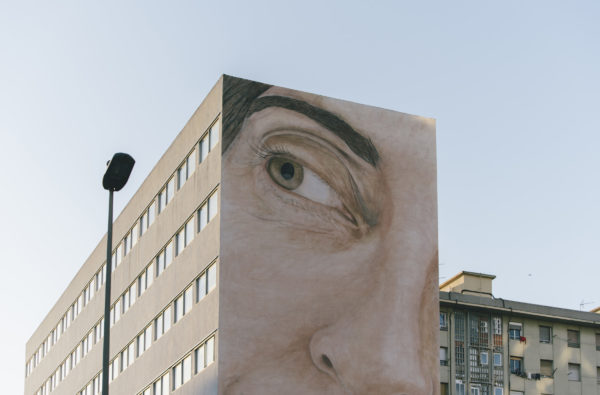
Post-tourism
The term “post-tourist” is commonly used to refer to a new breed of travellers, those who eschew common tourist “hotspots” and opt for a more unconventional experience, immersing themselves in “local culture” for an extended period of time. The concept of the post-tourist has developed in response to consumer attitudes and preferences in the post-modern era. Avoiding the massification of tourism, post-tourists seek real and authentic experiences, spending longer times, understanding the habits, and respecting the culture and the environment.
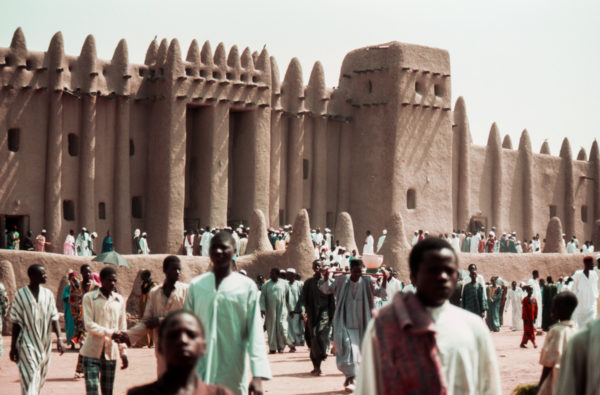
- Art Direction
- Editorial Design
- Self Publishing
Folch Insights is a place for discovering visions of the world that cast a light on contemporary ideas on communication and new disruptive business models, mapping those strategic territories which we daily explore with our work. In an era of unlimited free access to knowledge, we don’t take enough advantage of this unprecedented opportunity. What would change if certain content was not available forever? Likewise traditional printed publications, Insights will be available just for curious people, only for a limited amount of 5000 views.
Media partners

Supported by
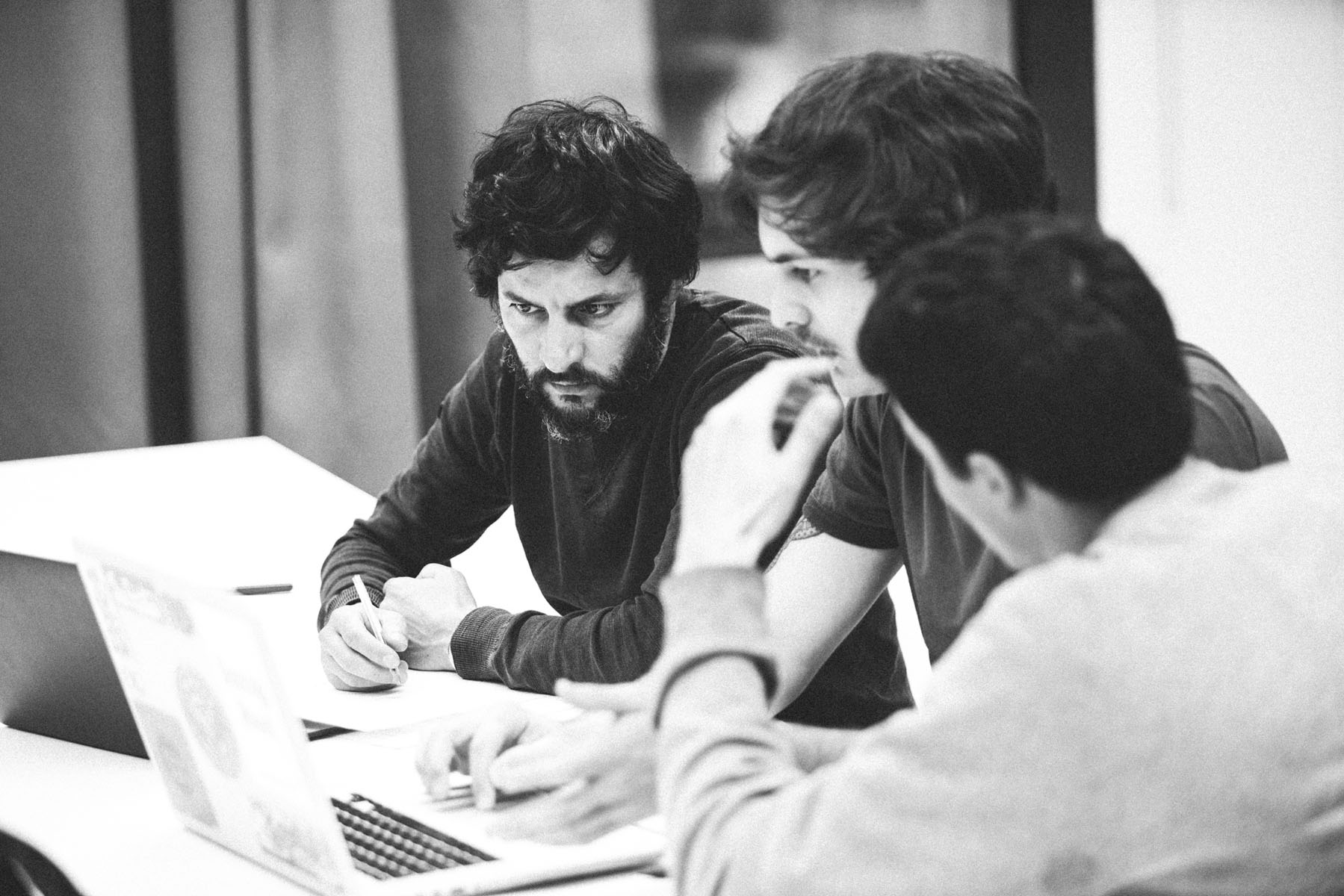
MDE17-18 Master in Editorial Design
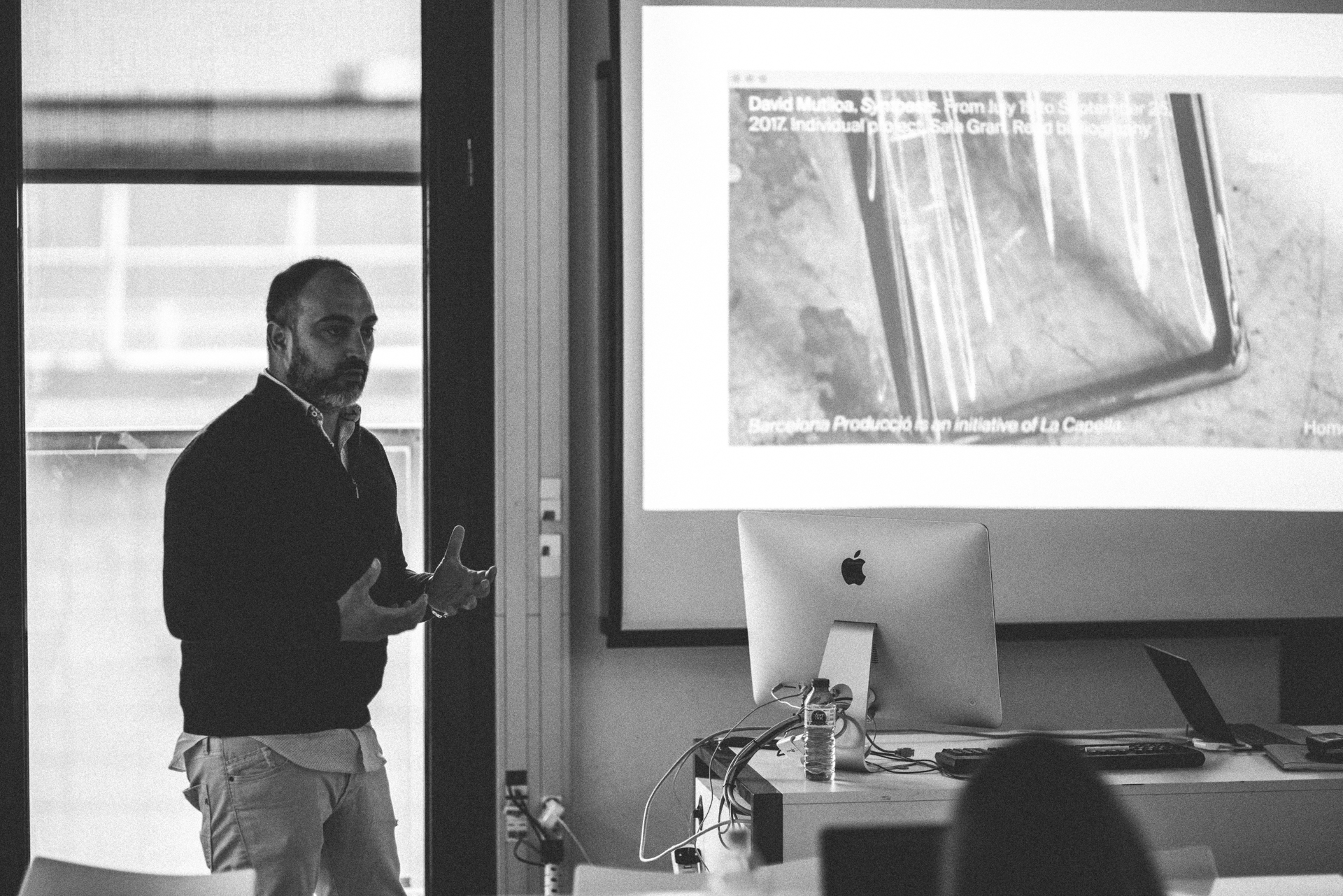
MDG17-18 Master in Graphic Design
Other initiatives
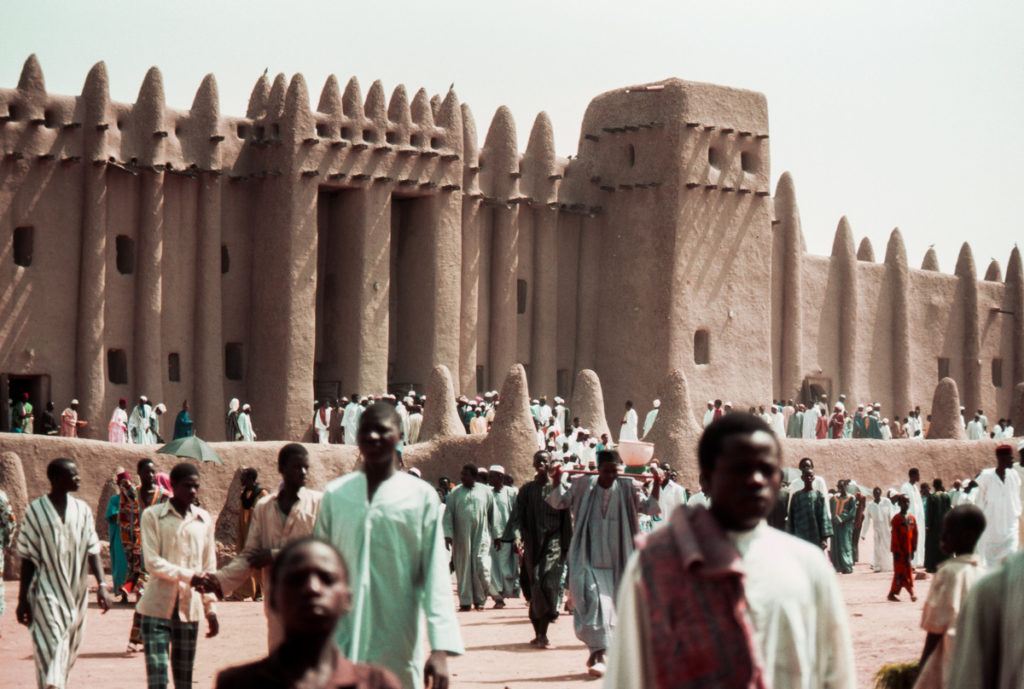
Digital narratives for place branding

It’s the age of the ‘post-tourist’
In the last decade, the tourism industry has been overtaken by a new kind of tourist: one who avoids popular sites and abandons their maps. Welcome to the age of the “post-tourist”.
A tourist photographs art on the Berlin Wall. Berlin is considered a 'post-tourism' hot spot.
The term “post-tourist” is commonly used to refer to a new breed of travellers, those who eschew common tourist “hotspots” and opt for a more unconventional experience, immersing themselves in “local culture” for an extended period of time.
As German broadcasting organisation Deutsche Welle put it in August:
Tourist attractions and hotels are boring, as far as the “post-tourists” are concerned. Instead, they want to get an authentic feel for the cities and places they visit.
‘Tourist’, ‘resident’ or somewhere in-between?
Writing in 2010, urban planner Johannes Novy described a blurring of the prior divisions between tourism and everyday life, but conceded that post-tourism, as we now think of it, is not especially new:
It’s rather that these different forms of tourism have become more prevalent in the city as tourism has grown and diversified. The niche has become mainstream, so to speak. But it has been happening for a long time. The slumming and flaneurism of the late 19th and early 20th century in Weimar-era Berlin essentially involved the activities we now call “new tourism”.
Seeking ‘real’ and ‘authentic’ experiences
With the rise of this supposedly “ new breed of traveller ”, more and more people are hoping to immerse themselves – with the help of technology and organisations such as Airbnb – in local culture and environments.
The concept of post-tourism has already gained much traction among travellers questioning the authenticity of merely sightseeing, who seek out so-called “real” places. But the concept of “authenticity” is where post-tourism, and tourism in general, runs into trouble.
Sociologist John Urry, author of The Tourist Gaze (1990), argues that “there is no authentic tourist experience”.
In their 2010 book Key Concepts in Tourist Studies , Melanie Smith, Nicola Macleod and Margaret Robertson argued that the post-tourist:
embraces openly, but with some irony, the increasingly inauthentic, commercialised and simulated experiences offered by the tourism industry.
So perhaps post-tourism isn’t all that different from ordinary, run-of-the-mill tourism. Visitors still take guided tours by locals, have no need to learn the language thanks to translator technologies, and endlessly seek “authentic” experiences.
There is also much work dedicated to debunking the myth of the “real” in tourism. Debbie Lisle, writing in Tourism and Politics (2007), posited that:
The myth of modern tourism is centred on the possibility of encountering authentic difference – seeing the “real” Bali, engaging with the “real” Spaniards, having “real” adventures by getting off the beaten track […] But as tourism became a truly global industry in the 1990s, that myth of authenticity became more difficult to maintain.
Indeed, the only “real” places in the world, according to Lisle, are conflict areas and war zones affiliated with death and violence.
“Post-tourism” is an ambiguous term, certainly, but it invariably suggests something of a departure from everyday “boring” tourism. The rise of the post-tourist – as an offshoot of the dreaded hipster and their avoidance of tourist hotspots and maps – is symptomatic of this “tourism-as-performance” phenomenon.
The pitfalls
Yet post-tourism is changing – even adversely reshaping – the very culture of cities in a way that echoes the many issues surrounding gentrification.
Sociologist Japonica Brown-Saracino’s 2010 study, The Gentrification Debates , emphasised the global and local basis of “tourism gentrification” in the context of modern urbanisation – a gentrification which, as argued by Michelle Metro-Roland of Western Michigan University in Tourists, Signs and the City (2011), could lead to making city environments more “sterile”.
Berlin is now considered by many to be the post-tourism capital of the world. Referring to that city, Thomas Rogers argued in his 2015 New York Magazine article , that post-tourism and gentrification together can render “formerly sleepy neighbourhoods” instantly “more upscale and exciting”. But when established residents and businesses are forced out due to tourist expectations, other issues emerge:
(This) taps into a host of other resentments – about American entitlement, about being required to speak English, about a calm neighbourhood being hijacked for the sake of someone else’s cliché idea of Berlin hedonism.
The resultant “blurring between the local and non-local” will continue not only to shape Berlin, but “the future of tourism itself”. Visitors immerse themselves in the culture before taking off for another city, but the residents remain.
Still just tourists after all
Post-tourism abides by narratives of self-righteous struggle, “tourist-shaming” those who continue to visit predictable tourist spots such as the Berlin Wall or the Eiffel Tower. Hence, post-tourism is partly defined by an underlying sense of posturing where travelling is concerned.
In essence, post-tourists remain tourists despite their perceived differences from ordinary tourists. As Lisle noted:
It is not the case that only intrepid travellers can access the “real” while passive tourists are content with the “fake” – in the global theme park, there is no difference between the real and the fake, between the authentic and the staged, and indeed, between the tourist and the traveller.
After all, the post-tourist shares all the same attributes and insecurities as the ordinary tourist.
Their desire for “reality” is all the more troubling considering the limits to which any expat can realistically immerse themselves completely in “real” culture. Any traveller or tourist in another country inevitably remains an outsider.
Siobhan Lyons is a tutor in Media and Cultural Studies at Macquarie University. This article was first published on The Conversation .

Inside The Circle: Meet three local First Nations trailblazers making their mark on SA
First home buyers, rejoice – hope is here, what’s happening in sa: september edition, new plastic bans: what you need to know.
We strive to deliver the best local independent coverage of the issues that matter to South Australians.
- Food & Wine
- Arts & Culture
- About InDaily
- Support Independent Journalism
- Advertising & Sponsorship
- Terms & Conditions
- Back Issues
You are using an outdated browser. Upgrade your browser today or install Google Chrome Frame to better experience this site.
After Travel Tips

You may get infected during travel but not have symptoms until you get home. If you recently traveled and feel sick, particularly if you have a fever, talk to your healthcare provider, and tell them about your travel.
Contact your healthcare provider if you feel sick
Contact your healthcare provider if you feel sick after your trip. Sharing the following information may help your healthcare provider identify possible diseases or infections:
- Your vaccination history.
- Where you traveled.
- Your reasons for traveling.
- Your travel activities, including swimming, hiking, etc.
- The timeframe of your vacation.
- Where you stayed, such as hotels, family or friends’ homes, hostels, or tents.
- What you ate and drank.
- Animals you had close contact with or touched.
- If you have any injuries, scratches, or bug bites.
- Health care or medications you received during your trip.
- Close contact with other people, including sexual encounters.
- If you got any tattoos or piercings.
If your healthcare provider has trouble determining why you are feeling sick, you may want to ask to speak with an infectious disease doctor or travel medicine specialist. Find a clinic for a travel medicine specialist.
Long-term Travelers
Long-term travelers, such as expatriate workers, Peace Corps volunteers, or missionaries, have a greater risk of getting infected, sometimes without symptoms, during travel. If you are a long-term traveler, consider having a thorough medical exam or interview with your healthcare provider after you return to the United States.
More Information:
- The Post Travel Evaluation in CDC Yellow Book
- Long-Term Travelers & Expatriates in CDC Yellow Book
- Screening Asymptomatic Returned Travelers in CDC Yellow Book
File Formats Help:
- Adobe PDF file
- Microsoft PowerPoint file
- Microsoft Word file
- Microsoft Excel file
- Audio/Video file
- Apple Quicktime file
- RealPlayer file
- Zip Archive file
Postmodernism, tourism
- Living reference work entry
- Later version available View entry history
- First Online: 01 January 2015
- Cite this living reference work entry

- Richard Sharpley 3
382 Accesses
1 Citations
The term postmodernism first emerged in the early twentieth century to refer to new forms of art and music. By the 1970s, however, it was used specifically to describe a new approach to architecture which, rejecting the perceived blandness and functionality of the modernist movement, reintroduced historical styles, often in combination or collage, to building design and ornament. Subsequently, the term was applied more generally to describe the alleged condition of contemporary culture: the condition of postmodernity. Though widely contested, it is broadly considered to signify the replacement of scientific rationality or certainty underpinning a universal belief in progress or the end of “meta-narratives” (Lyotard 1984 ) with a multiplicity of ideas and realities and an emphasis on image , choice, the ephemeral, and, most significantly, the borrowing and merging of previously distinctive cultural forms and practices. In other words, whereas modernity could be identified by the...
This is a preview of subscription content, log in via an institution to check access.
Access this chapter
Institutional subscriptions
Eco, U. 1995 Faith in Fakes. London: Minerva.
Google Scholar
Feifer, M. 1985 Going Places. London: Macmillan.
Harvey, D. 1990 The Condition of Postmodernity . Oxford: Blackwell.
Lash, S. 1990 Sociology of Postmodernism. London: Routledge.
Lyotard, J-F. 1984 The Postmodern Condition: A Report on Knowledge. Minneapolis: University of Minnesota Press.
Urry, J. 1990 The Tourist Gaze. London: Sage.
Walsh, K. 1992 The Representation of the Past: Museums and Heritage in the Post-Modern World. London: Routledge.
Download references
Author information
Authors and affiliations.
School of Management, University of Central Lancashire, Fylde Rd, PR1 2HE, Preston, Lancashire, UK
Richard Sharpley
You can also search for this author in PubMed Google Scholar
Corresponding author
Correspondence to Richard Sharpley .
Editor information
Editors and affiliations.
School of Hospitality Leadership, University of Wisconsin-Stout, Menomonie, Wisconsin, USA
Jafar Jafari
School of Hotel and Tourism Management, The Hong Kong Polytechnic University, Hong Kong, Hong Kong SAR
Honggen Xiao
Rights and permissions
Reprints and permissions
Copyright information
© 2014 Springer International Publishing Switzerland
About this entry
Cite this entry.
Sharpley, R. (2014). Postmodernism, tourism. In: Jafari, J., Xiao, H. (eds) Encyclopedia of Tourism. Springer, Cham. https://doi.org/10.1007/978-3-319-01669-6_385-1
Download citation
DOI : https://doi.org/10.1007/978-3-319-01669-6_385-1
Received : 28 May 2014
Accepted : 28 May 2014
Published : 15 September 2015
Publisher Name : Springer, Cham
Online ISBN : 978-3-319-01669-6
eBook Packages : Springer Reference Business and Management Reference Module Humanities and Social Sciences Reference Module Business, Economics and Social Sciences
- Publish with us
Policies and ethics
Chapter history
DOI: https://doi.org/10.1007/978-3-319-01669-6_385-2
DOI: https://doi.org/10.1007/978-3-319-01669-6_385-1
- Find a journal
- Track your research
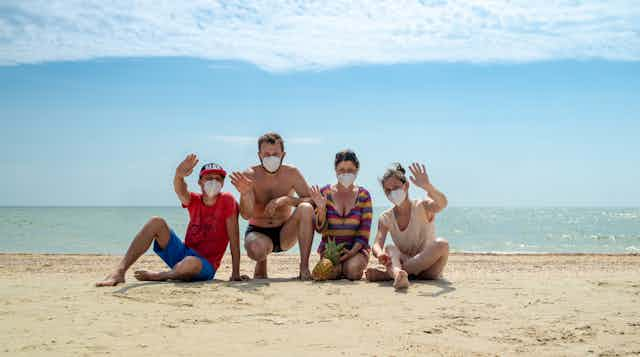
Post-pandemic travel: the trends we’ll see when the world opens up again
Lecturer in Tourism, University of Central Lancashire
Disclosure statement
Katerina Antoniou does not work for, consult, own shares in or receive funding from any company or organisation that would benefit from this article, and has disclosed no relevant affiliations beyond their academic appointment.
University of Central Lancashire provides funding as a member of The Conversation UK.
View all partners
It’s been a while since the question “where should I travel to next?” has felt within reach.
COVID-19 continues to affect travel by forcing governments to impose country-specific bans and restrictions . However, as vaccination programmes roll out, many of us hope to travel again at some point in the near future, even if not immediately. With that in mind, what are the factors that will shape our travel decisions in a post-pandemic era?
Post-COVID tourism
Although significant restrictions are still in place, travel agency adverts have become more frequent recently. According to reports , holiday bookings have once again begun to soar as people look beyond lockdowns.
COVID-19-related travel conditions will complicate holidays for the foreseeable future – including potential measures like requiring people to be vaccinated . The fear is that this will limit foreign travel options for those who haven’t received the vaccine. It may even affect people’s ability to travel domestically. Economic issues will also affect travel globally, since so many people have lost income during the pandemic.
These challenges will shape our decisions when it comes to choosing a holiday. By the time the pandemic ends, the days of choosing holidays based on destination or attractions will be over. Instead, the industry and travellers alike will be much more concerned with personal needs.

Faced with the desire to travel and practical obstacles against it, people are expected to make more considered travel choices. Tourists in the post-COVID era will be less willing to compromise on their next trip. They will have much higher expectations of hospitality service providers and be much more demanding. In order to keep up, the industry should prioritise offering services, facilities and experiences that cater to wellness, health, and overall wellbeing. They will need to focus on high hygiene standards, which tourists are expected to covet.
It won’t be surprising to see trends like health tourism, wellness tourism , spiritual and potentially religious tourism rising in popularity too. Thanks to the pandemic, tourists are paying more attention than ever to these needs whether they’re urgent health concerns, luxury treatments, or the pursuit of physical, intellectual and spiritual wellness after over a year of living with restrictions.
Human-oriented tourism
According to tourism academic Fabio Carbone, post-COVID tourism is also expected to focus more on people than destinations. Those eager to get away from measures like social distancing will likely use travel to embrace existing relationships with loved ones living abroad or seek new encounters. Carbone suggests that because of this, post-Covid tourism will pivot towards prioritising human development, dialogue, and peace.
Popular types of tourism are therefore likely to include: travel for visiting friends and relatives, volunteer tourism, and peace tourism.
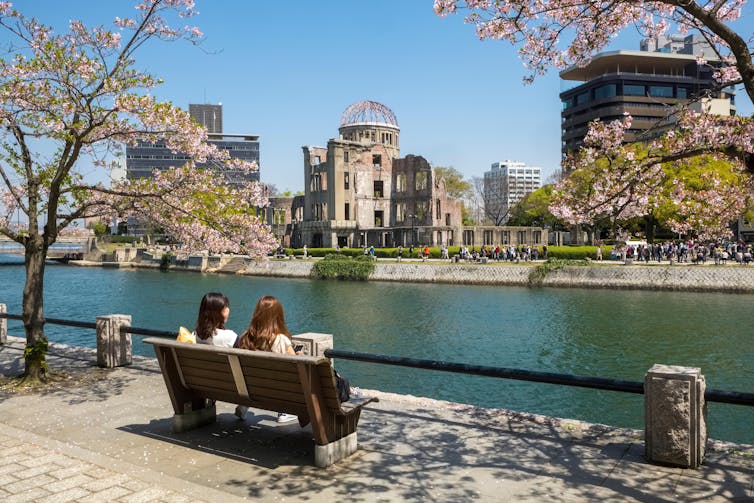
Volunteer tourism – or voluntourism – is a niche tourist activity which essentially means volunteering in a foreign destination. Although some question whether it positively contributes to developing countries and underprivileged communities, voluntourism has generated valuable humanitarian work. With economic fallout from the COVID-19 pandemic having hit developing countries more severely , effective voluntourism isn’t only desired, it’s necessary.
Read more: Dark tourism memorial sites will help us heal from the trauma of coronavirus
Peace tourism , on the other hand, refers to an interest in visiting specific destinations in order to either examine how peace is developed and celebrated there through research or studies, or contribute to a destination’s efforts to establish peace after conflict. Peace tourism typically involves visiting peace memorials or conflict zones with the aim of learning from the mistakes of past wars and helping to resolve or prevent existing conflict.
Examples of peace tourism activities include educational field trips to sites such as the Berlin Wall Memorial and the Hiroshima Peace Park . It might also take the form of attending workshops and conferences among conflict resolution professionals or going on guided peace walks that delve into histories of achieving or searching for peace. Visiting famous peace artworks and peace-themed exhibitions , as well as festivals and perfomances are also considered peace tourism activities.
The tourism industry has a unique opportunity to reflect on its future. If it wants to make an impact, it needs to prioritise providing quality, affordable experiences and putting customers first. Whenever travel resumes in the post-pandemic world, promoting specific destinations and landmarks will no longer make sense. It may be difficult in the face of restrictive and ever-changing travel corridors, but the travel industry has little choice but to remodel holidays around catering to our wants and desires.
- Vaccination
- Coronavirus insights

Admissions Officer

Director of STEM

Community member - Training Delivery and Development Committee (Volunteer part-time)

Chief Executive Officer

Head of Evidence to Action
The Post-Tourist: What do Modern Day Travelers and Reality TV Have In Common?
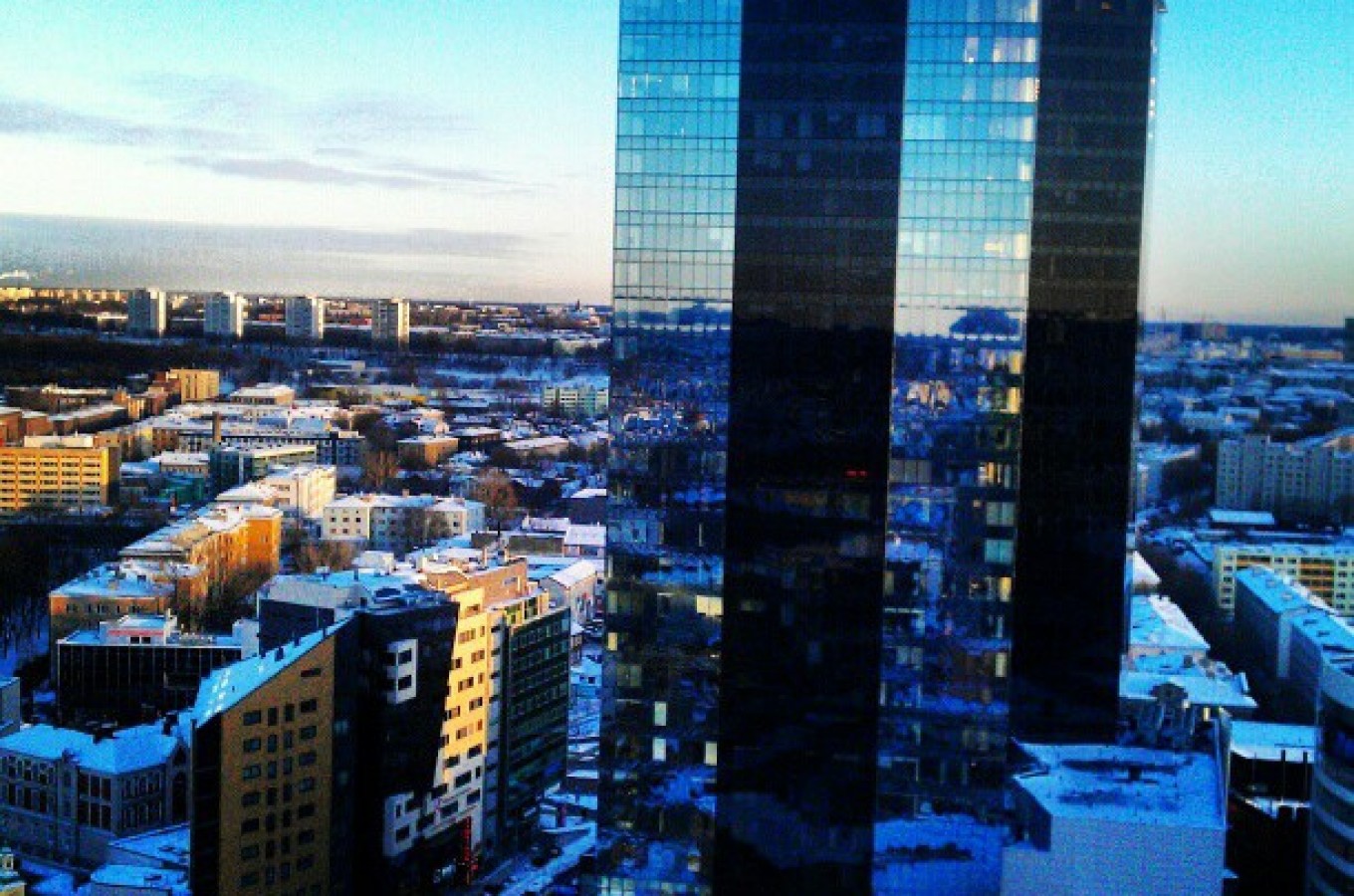
As an avid reality TV enthusiast as well as a travel-fan, I think it’s fair to compare the modern-day nomads that are post-tourists with the brilliance of TV that just doesn’t imitate reality, but lives through it. Jersey Shore was my ultimate guilty pleasure on TV for a long time and an accidental discovery of reality TV having common traits with my last travels and trips has made way for an interesting and fun exercise of thought. A little self-irony about travelling is always fun, so I’ve decided to introduce the idea of post-tourism through the prism of reality TV, if that makes sense… It will, later, trust me.
(And all photos will be Instagrams for the sake of an argument – you’ll understand later)
Observe vs participate
Photo credit: Juan Nosé
Have you seen television lately? Besides the usual comedy-tragedy-hospital series, the new medium caught attention in the last decade. And the reason why reality TV entails audiences, is that it doesn’t merely reflect an outer reality to passively watch and observe, but reality TV as a medium demands participation – your vote is what decides will America’s Got Talent be won by acrobats or singers, you’re urged to have an opinion on Honey Boo Boo Child’s dietary regulations or the ethics of children on television in general. And, its all real – it isn’t just acting, the people are real. They don’t change from an American Dr. House to an English Hugh Laurie, but they’re the same people on screen, in magazine-interviews and off screen.
The shift from observe to participate appears to be happening in tourism, as well. Imagine London. Two questions. How excited would you be to ride the London Eye? But how would you feel about taking bus, getting off at a random stop and jumping into the first small cafe and a conversation with a local? The first is predictable, yet safe, second one is uncertain and certainly very exciting. Surely, the former is valid – see what makes the city what it is, see history and find art, but more and more travelers opt for the latter, changing from tourism to post-tourism, from being just a visitor to becoming a part of the city for a little while.
Reality TV is accessible, easily produced and cheap, occasionally offering surprising facts and intricate details of the subjects’ lives (which you sometimes did not wish to know). Most of the qualities are occasionally not very appreciated in TV, but surely are useful when travelling.
The post-tourist and Jersey Shore
Photo credit: koalazymonkey
Jersey Shore is a cultural phenomenon – a gift to the world (and you don’t look a gift horse in the mouth!). The show consists of an odd sub-culture of people who are brought out of their local everyday life of parties, living off not-so-hard-earned-money and complicated relationships, thrown into a new environment and then, they are filmed. We cheer when Snooki gets a job and feel bad, when she runs out of bronzer, we feel happy the Situation is able to keep up with his workout schedule. Okay, I understand most of you might not be such huge fans of the show, but the point is: in the same way, we can rejoice along the post-tourist’s struggles exploring in a new city.
The post-tourist will throw themselves into a new city, trying to blend and take in the lifestyle. You can easily spot the post-tourist seeking through the mazes of dodgy districts carrying a huge back-pack, away from the touristy part of the city, trying to find the couch surfing address located away from central hotels with nothing but a piece of paper with a scribbled address, probably something difficult to pronounce. They will shun city center cafes and restaurants and opt for the odd corner-shops. They are reluctant to take out a map, preferring to get lost for a day and see where the city takes them.
Scripted vs Non-Scripted
Photo credit: [TakA]
A regular tourist’s planning period consists of buying tickets, booking hotels, finding sights and booking tours, as well as buying a guide book (if not three), having a daily planned schedule. This looks like the hospital show where the script is made months ago, actors just play them out, with an occasional improvisation, but not straying too much. Nobody is as clever as Dr. House in real life, even though we’d love to imagine we are. And Big Ben will always be there, with or without you taking a city-tour to see it. The results are predictable, and well, occasionally good (who doesn’t like Dr. House?), sometimes not filling expectations (How I Met Your Mother did get a bit boring after a few seasons).
Now, the post-tourist is a lot more loosely scripted. The plans are simple: getting tickets there and back, possibly making sleeping arrangements as well and usually a tiny bit of sights to seek out. The preparation could involve a guide-book (Lonely Planet is cool, that’s still pretty post-tourist), but is usually more focused on TripAdvisor, for example. Finding what others like as well as asking friends and locals for hints and tips. The most avid ones will spend an evening googling “weird bars in *insert location*” before their every journey. A modern traveler will also be likely to couch surf or get a hostel. A post-tourist will be very loosely scripted, leading to crazy adventures that would sound like over doing it, if they didn’t happen in real life.
Post-production and Instagrams
Photo credit: Intrepidteacher
A lot of Jersey Shore’s fascinatingness is due to the extensive post-production – the tension and the excitement comes from zooming in on Snooki’s face and adding dramatic music. Slow motion captions of Sammy and Ronnie’s last disagreement. Exciting! A good post-production entails audiences, makes them feel connected to the show. With the possibility of filming everything, the production crew face huge decisions of what the share with the world and what might seem too mundane or “old” and boring and needs leaving out.
The post-tourist doesn’t only travel for the experience. They also travel to share the experience. And only one weapon of post-production is needed for this – a smart-phone (with roaming, of course). How else do you take instagrams of pigeons in front of the Eiffel tower. Bear in mind, the tower itself is not an object of the post-tourist’s interest, it is just a reason to talk about the hoards of tourists queuing up, which they of course, will not take part of. The Mona Lisa seems too mundane, they’d rather hunt for the grave of Wilde.
Without the smart-phone, how can you Foursquare into small random neighborhood cafes of Berlin? The direct access to Facebook makes a trip instant and graspable. During the old times, people had to sit through odd slide-shows of travels, but we have developed enormously since then. Now, you are just see it in your live stream, the post-production is quick and made really easy with the wonders of technology.
Mapping the Hidden
Photo credit: Sami Keinänen
But not all reality TV is useless relationship drama that can go on for seasons. There are some really cool ones: Ice Road Truckers, Pawn Stars and American Pickers (I clearly just like the History channel, which clearly doesn’t focus on history anymore). Reality TV allows a peek into the hidden aspects of a trade you didn’t even expect to find interesting – I clearly had no idea huge trucks on an icy road would offer footage for a whole series.
Just as the cameras set up in work-shops and roads allow us to map and see hidden, the post-tourist will spend their time hunting for the craziest locales, shunning the touristy gathering places in the old town.
A great example from Tallinn would be about five Finnish guys who mapped 138 bars in Tallinn in a book “ Baarimehen Tallinna ” (or, a Bar Man’s Guide to Tallinn). This is something that takes skill: they just jumped on trams and buses and went for it. Our Northern neighbors ended with a conclusion of after all of this bar-crawling they stopped being Finnish. This also implies just as the post-tourist’s manifesto insists, becoming a part of the city for a while is fun.
Sum-up: the post-tourist’s checklist
Back-pack: make it easy to switch locations really quickly by just throwing everything into an oversized bag and walking away.
Ray-bans: hide your eyes that are secretly glimpsing at famous tourist attractions to not ruin your image or protect from sunlight after getting home around 5AM from the weird back-alley bars.
Smart-phone: it’s been said before –Foursquare & Instagrams! Also useful when getting really lost but feeling embarassed to take out a map. It’s easy to pretend you’re just sending messages.
Scribbled names of cafes and restaurants: preferably from TripAdvisor or Like a Local , but guide-books work as last resources, as well. The cafes have to, though, be at least one mile away from the biggest tourist attraction of the city. Also, plus points if the cafe is located inside an old power-plant or factory or hospital or anything typically not related to the food and restaurant industry.
Check-list of weird places to see: for example, in Tallinn, the Nevsky Cathedral is fun for a tourist, but a post-tourist would find the small Ukrainian Greek Catholic church . When looking for a park, leave out the Kadriorg area and head for the Kalamaja one (hey, both of them have beautiful things from the tsarist times close by: one has a palace , the other has.. a prison ).
Couch to surf or local buddy: not a definite must, one or both of these will surely boost your post-tourist meter. If lacking a local, you can just ask locals for recommendations randomly on streets.
A look for adventure: something to define a post-tourist is definitely the want to see and experience unexpected and unplanned. So an adventurous mind is definitely needed.
So, log into couchsurfing, pack a bag and don’t forget your phone-charger, you’re gonna need it. I agree, Big Ben is what makes London what it is – London. But there is so much more to it! (the same goes for Tallinn..) Be sure to discover the lifestyle and weirdness, too!
… And just to wrap it all up, here’s an instagram of a pigeon in Paris:
Ask a question or write a comment Cancel reply
Current ye@r *
Leave this field empty
Comments (1)
The pigeon is a nice touch.
Two mobile apps that help a tourist be a post-tourist, by providing a unique experience wherever they find themselves, are Kompl and Dérive app. They’re at http://komplapp.com and http://deriveapp.com .
Kandideerimiseks saada meile oma CV ja motivatsioonikiri siin või aadressile [email protected].
Sinu motivatsioonikiri*
Lisa oma CV
Academia.edu no longer supports Internet Explorer.
To browse Academia.edu and the wider internet faster and more securely, please take a few seconds to upgrade your browser .
Enter the email address you signed up with and we'll email you a reset link.
- We're Hiring!
- Help Center

Postmodern Tourism and Post-Tourist Behaviors

2019, Current Issues in Tourism and Hospitality Management
In this section, the concept of postmodernism, the phenomenon of postmodern consumption, the concept of postmodern consumer, postmodern tourism, and the concept of post-tourist are aimed to be informed and a general evaluation is made about these concepts.
Related Papers
J. of Tourism and Hospitality Management
Mauro Dujmovic
Journal of Policy & Governance
Alla Pecheniuk
This article examines contemporary scientific approaches to the issues of postmodern transformations of rural tourism development. The contradictions between the present postmodern society and the information-technological development of the rural areas in Ukraine are highlighted. Evidently, Ukraine does not fully use the new opportunities that emanate as a result of globalization of an economy. The main indicators of postmodern influences, such as informational and technological, political, social, socio-cultural, and personal (psychological), are earmarked featured. The characteristics of evolving social relations are also determined as premodern (archaic), modern and postmodern relations in the societies in particular context of tourism development. The factors influencing the postmodern tourism consumerism include the awareness of the social crisis, escape from reality, mundane avoidance, search for the self and self-realization, overcoming psychological trauma, the illusion of ...
Tm-technisches Messen
Milan Novovic
Turisticko poslovanje
Diana Alexandru
Laszlo Arva
Has our society already become postmodern or is it still modern? Has postmodernity replaced modernity in business sciences (as modernity replaced traditionality in the second half of the nineteenth century) or do both modernity and postmodernity exist and shape the practice and theory of the different disciplines together? These dilemmas represent a major concern for a small group of researchers not only in the fields of sociology and business but also in other sciences. The aim of the present paper is to evaluate the extent to which postmodernity can be identified in the field of tourism marketing as well as to see practical cases for its appearance in Hungary and its acceptance by local people.
Annals of Tourism Research
Natan Uriely
F. Xavier Medina
Tourism, as any other massive phenomenon has suffered a deep change tightly linked to social change, where internet and social media are playing an important role. Tourism has changed both in form and contents. While in the past tourism was some kind of elitist activity (high cost and culture) nowadays it has become a mass tourism/entertainment (low cost and culture) that, though fragmented, is presenting new trends within the tourism/travel industry and leisure activity all over the world where Europe is not an exception. From a quantitative perspective, an overview of the international new and traditional tourism trends are presented in this article. This new tourism is turning into a new social phenomenon in complete transformation, where outbound travel market is offering new possibilities for emergent countries, and where new forms of tourism are appearing, supported by a flourishing tourism/travel industry. From the qualitative point of view, this paper brings into considerati...
Sune Rasmussen
E-Journal of Cultural Studies
Derinta Entas
RELATED PAPERS
Archivo Papers: Journal of Photography and Visual Culture
Sara Callahan
ricardo tavera
Caio Alexander
Shasha Gobbi
Kyiv-Mohyla Humanities Journal
Olena Chemodanova
Viktor Klochko
Carlos Vidales
La Biblioteca Giuridica , Angelo Di Sapio , Rocco Favale
Allied health professionals/Nursing/Health scientists
Journal of engineering, design and technology
Chijioke Emere
American journal of human genetics
manal mohamed
1比1定做威尔士大学毕业证 威尔士大学文凭证书设计原版一模一样
Agricultural Journal
Hamadi Ghariani
Danilo Sinkiti Gastaldello
The Northern mariner/Northern mariner
Eric Wiberg
Gaceta UNAM (2000-2009)
Amada Rueda
Journal of Hypertension
Laura Brandani
RELATED TOPICS
- We're Hiring!
- Help Center
- Find new research papers in:
- Health Sciences
- Earth Sciences
- Cognitive Science
- Mathematics
- Computer Science
- Academia ©2024
- Weird But True
- Sex & Relationships
- Viral Trends
- Human Interest
- Fashion & Beauty
- Food & Drink
trending now in Lifestyle

I pay $2,100 a month in rent to live with 23 roommates and share...

Tourist spot is 'total chaos' with cars stuck in 4-hour traffic...

Impacted wisdom tooth led to deadly illness in 23-year-old -- and...

I signed up for a three-year, $90K cruise but never left dry land...

Beloved candy returning to market 14 years after being...

Beloved cat reunited with family after 2,000-mile journey across...

Do cellphones increase the risk of heart disease? Troubling...

World's most beautiful McDonald's that's like a '5-star hotel...
Breaking news, popular tourist spot is ‘total chaos’ with cars stuck in 4-hour traffic jam: ‘horrific experience’.
Think Burning Man gets bad traffic ? Scotland’s formerly secluded Fairy Pools have become marred by apocalyptic congestion, with tourists waiting in four-hour traffic jams to visit them, according to local tour companies.
“The people who work in the Fairy Pools car park have said visitors say it’s like a war zone driving there,” Gordon Pearson, who runs the tour company WOW Scotland, told South West News Service. “It’s absolutely horrendous, and I don’t think there’s enough attention to how bad the road really is.”
Located in Glen Brittle on the Isle of Skye, the attraction comprises a series of picturesque pools and waterfalls that look as if they’ve come straight out of a “Lord of the Rings” movie.

While the sapphire oasis was once a hidden gem, traffic has increased dramatically over the past decade, according to local sources, with congestion allegedly exacerbated by poor infrastructure.
Over the past few weeks, traveling there has become “total chaos” with as many as 400 vehicles stuck on the road, per Pearson.
While just 200,000 tourists visit the locale each year, the one-lane road out of Glen Brittle is poorly maintained, leading to scads of flat tires and to hourslong traffic jams like something out of a disaster thriller, reported SWNS.
“Some people can get stuck for about four hours just on that road,” lamented Pearson, who regularly has to jump out and help facilitate traffic.
Conditions at the now-literal tourist trap have been exacerbated by wet weather of late.

That has caused vehicles to get stranded on the shoulders, where rescue vehicles can’t reach them due to the bottlenecks.
“If one of my customers needed emergency help, there’s no way of getting help to them quickly,” said Pearson.
Conditions have gotten so “dangerous” that the guide is contemplating taking the resplendent mecca off his tour.
“We’ve always done Skye, since 2012,” he said. “It’s our unique selling point, and we always want people to get the most out of the place, but we can’t do that with the current situation.
“We might pull out of doing the Fairy Pools on our route, and maybe Skye altogether,” he added.
There’s a bureaucratic bottleneck as well.
The Outdoor Access Trust for Scotland charity, which set up a car park six years ago to relieve congestion along the route, has been blamed for the traffic by the local council.
OATS has also been told to cough up the money to repair the hazardous access road — something it cannot do by law, according to a rep for the organization.
“Council officers are working on potential visitor management solutions and exploring funding streams to help alleviate some of these pressures which are currently being experienced in the Skye area,” the Highland Council spokesperson said.

Advertisement
Authentic outsiders? Welcome to the age of the 'post-tourist'
With the rise of this supposedly “new breed of traveller”, more and more people are hoping to immerse themselves – with the help of technology and organisations such as airbnb – in local culture and environments..

Guess what: post-tourism isn't all that different from ordinary, run-of-the-mill tourism. (David Blackwell) Source: Supplied
Tourist attractions and hotels are boring, as far as the “post-tourists” are concerned. Instead, they want to get an authentic feel for the cities and places they visit.
‘Tourist’, ‘resident’ or somewhere in-between?

It’s rather that these different forms of tourism have become more prevalent in the city as tourism has grown and diversified. The niche has become mainstream, so to speak. But it has been happening for a long time. The slumming and flaneurism of the late 19th and early 20th century in Weimar-era Berlin essentially involved the activities we now call “new tourism”.
Seeking ‘real’ and ‘authentic’ experiences

The pitfalls

Still just tourists after all
Share this with family and friends
Recommended for you

The new amount Australians need each year to retire comfortably
Superannuation

Sticky beaks: Birds of prey defy strata company to raise family
Environment and nature

'Stolen years of my life': Roxanne Tickle speaks after landmark 'what is a woman' case win

'Let me out': Why Australians are falling victim to 'subscription traps'
Streaming media

Extremists volunteering in soup kitchens: How ideologies have evolved to attract Australians

Andrew suppressed the pain of racism for decades. Why can't we talk about the 'R' word?

Multiple Olympic athletes are sick after swimming in the Seine. Is water quality to blame?
Health and Wellbeing

Revealed: How fraudsters steal from Australians through a myGov 'side entrance'
Fraud and false statements
Get SBS News daily and direct to your Inbox
Sign up now for the latest news from australia and around the world direct to your inbox..
Morning (Mon–Fri)
Afternoon (Mon–Fri)
By subscribing, you agree to SBS’s terms of service and privacy policy including receiving email updates from SBS.
SBS World News
Towards resilience and sustainability: Travel and tourism development recovery

The travel and tourism sector is slowly beginning to recover. Image: Unsplash/Eva Darron
.chakra .wef-1c7l3mo{-webkit-transition:all 0.15s ease-out;transition:all 0.15s ease-out;cursor:pointer;-webkit-text-decoration:none;text-decoration:none;outline:none;color:inherit;}.chakra .wef-1c7l3mo:hover,.chakra .wef-1c7l3mo[data-hover]{-webkit-text-decoration:underline;text-decoration:underline;}.chakra .wef-1c7l3mo:focus,.chakra .wef-1c7l3mo[data-focus]{box-shadow:0 0 0 3px rgba(168,203,251,0.5);} Kate Whiting

.chakra .wef-9dduvl{margin-top:16px;margin-bottom:16px;line-height:1.388;font-size:1.25rem;}@media screen and (min-width:56.5rem){.chakra .wef-9dduvl{font-size:1.125rem;}} Explore and monitor how .chakra .wef-15eoq1r{margin-top:16px;margin-bottom:16px;line-height:1.388;font-size:1.25rem;color:#F7DB5E;}@media screen and (min-width:56.5rem){.chakra .wef-15eoq1r{font-size:1.125rem;}} Travel and Tourism is affecting economies, industries and global issues

.chakra .wef-1nk5u5d{margin-top:16px;margin-bottom:16px;line-height:1.388;color:#2846F8;font-size:1.25rem;}@media screen and (min-width:56.5rem){.chakra .wef-1nk5u5d{font-size:1.125rem;}} Get involved with our crowdsourced digital platform to deliver impact at scale
Stay up to date:, davos agenda.
Listen to the article
- The World Economic Forum has published its inaugural Travel and Tourism Development Index .
- It focuses on the growing role of sustainability and resilience in travel and tourism growth.
- Recovery for the sector is uneven and tourist arrivals in January 2022 were still 67% below 2019 levels, according to the World Tourism Organization.
- Here are some key findings from the index on how the sector can build back better.
In 2018, international tourism grew for the ninth consecutive year. Tourist arrivals reached 1.4 billion and generated $1.7 trillion in export earnings, according to the World Tourism Organization (UNWTO).
Travel and tourism: post-pandemic
The picture looked very different two years later, as COVID-19 lockdowns hit the travel and tourism (T&T) sector hard. In 2020 alone, it faced losses of $4.5 trillion and 62 million jobs , impacting the living standards and well-being of communities across the globe.
While the roll-out of COVID-19 vaccines and easing of restrictions means a recovery has now started, it’s proving gradual and uneven largely due to variations in vaccine distribution, and because of Omicron and its BA.2 subvariant. And customers are not only being more cautious when it comes to health, but also around the impact of travel on the environment and local communities.
International tourist arrivals rose by 18 million in January 2022 compared with a year earlier. This equals the increase for the whole of 2021 from 2020, but January’s numbers were still 67% below the same month in 2019, according to the UNWTO.
The war in Ukraine has added to instability and economic disruption for the sector. Against this backdrop, the World Economic Forum’s inaugural Travel and Tourism Development Index reflects the growing role of sustainability and resilience in T&T growth, as well as the sector’s role in economic and social development more broadly.
The TTDI benchmarks and measures “the set of factors and policies that enable the sustainable and resilient development of the T&T sector, which in turn contributes to the development of a country”. The TTDI is a direct evolution of the long-running Travel and Tourism Competitiveness Index (TTCI), with the change reflecting the index’s increased coverage of T&T development concepts, including sustainability and resilience impact on T&T growth and is designed to highlight the sector’s role in broader economic and social development as well as the need for T&T stakeholder collaboration to mitigate the impact of the pandemic, bolster the recovery and deal with future challenges and risks. Some of the most notable framework and methodology differences between the TTCI and TTDI include the additions of new pillars, including Non-Leisure Resources, Socioeconomic Resilience and Conditions, and T&T Demand Pressure and Impact. Please see the Technical notes and methodology. section to learn more about the index and the differences between the TTCI and TTDI.
The Travel and Tourism Development Index 2021
The index covers 117 economies, which accounted for around 96% of the world’s direct T&T GDP in 2020. It measures the factors and policies that will enable sustainable and resilient development of the sector.
These include everything from business, safety and health conditions, to infrastructure and natural resources, environmental, socioeconomic and demand pressures.
“As the sector slowly recovers, it will be crucial that lessons are learned from recent and current crises and that steps are taken to embed long-term inclusivity, sustainability and resilience into the travel and tourism sector as it faces evolving challenges and risks,” says the publication, a collaboration between many of the sector’s stakeholders.
The index consists of five subindexes, 17 pillars and 112 individual indicators, distributed among the different pillars, as shown below.

On average, scores increased by just 0.1% between 2019 and 2021, reflecting the difficult situation facing the sector. Only 39 out of 117 economies covered by the index improved by more than 1.0%, while 27 declined by over 1.0%.
Nine of the top 10 scoring countries are high-income economies in Europe or Asia-Pacific. Japan tops the ranking, with the United States in second, followed by Spain, France, Germany, Switzerland, Australia, the United Kingdom and Singapore. Italy completes the top 10, moving up from 12th in 2019.
Viet Nam experienced the greatest improvement in score, with a rise of 4.7% lifting it from 60th to 52nd on the overall index. Indonesia achieved the greatest improvement in rank, increasing its score by 3.4% to climb from 44th to 32nd, while Saudi Arabia achieved the second greatest improvement in rank, moving up to 33rd from 43rd as its score rose by 2.3%.
Rebuilding travel and tourism for a sustainable and resilient future
Here are some of the key findings from the publication:
1. The need for travel and tourism development has never been greater
The sector is a major driver of economic development, global connectivity and the livelihood of some of the populations and businesses most vulnerable to, and hard hit by, the pandemic. In 2019, T&T’s direct, indirect and induced GDP accounted for about 10% of global GDP . For many emerging economies, T&T is a major source of export revenue, foreign exchange earnings and investment. Research has shown that T&T growth can support social progress and create opportunities and well-being for communities, so supporting travel and tourism development and recovery will be critical.
2. Shifting demand dynamics have created opportunities and a need for adaptation
In the shorter term, challenges such as reduced capacity, geopolitical tensions and labour shortages are slowing recovery. However, opportunities have been created in markets such as domestic and nature-based tourism, the rise of digital nomads and “bleisure” travel – the addition of leisure activities to business travel. Many countries have provided incentives to boost domestic tourism. For example, Singapore, South Korea, Japan and Hong Kong SAR, China, have rolled out programmes that provide discounts, coupons and subsidies for domestic travel. The trends towards more rural and nature-based tourism offer an opportunity for less-developed economies to harness the benefits of travel and tourism given that the distribution and quality of natural assets are less tied to performance in economic development, with natural resources being one of the few pillars where non-high income economies typically outperform high-income countries. The travel and tourism sector stakeholders’ ability to adapt under these conditions highlights its capacity for adaptation and flexibility.
3. Development strategies can be employed to help the sector build back better
Amid the current challenges, shifting demand dynamics and future opportunities and risks, a more inclusive, sustainable and resilient travel and tourism sector can be – and needs to be – built, says the publication. But this calls for thoughtful and effective consideration. It also requires leveraging development drivers and strategies. This can be done by: restoring and accelerating international openness and consumer confidence through, for example, improved health and security; building favourable and inclusive labour, business and socioeconomic conditions; focusing more on environmental sustainability; strengthening the management of tourism demand and impact; and investing in digital technology.
A note on the methodology
Most of the dataset for the Travel & Tourism Development Index (TTDI) is statistical data from international organizations, with the remainder based on survey data from the World Economic Forum’s annual Executive Opinion Survey, which is used to measure concepts that are qualitative in nature or for which internationally comparable statistics are not available for enough countries. The index is an update of the Travel & Tourism Competitiveness Index (TTCI), but due to the altered methodology, framework and other differences, the 2021 TTDI should not be compared to the 2019 TTCI. To help address this, the 2019 results were recalculated using the new framework, methodology and indicators of the TTDI. Therefore, all comparisons in score and rank throughout this report are between the 2019 results and the 2021 results of the TTDI. Data for the TTDI 2021 was collected before the war in Ukraine.
Have you read?
How quickly is tourism recovering from covid-19, this is how the covid-19 crisis has affected international tourism, what covid-19 taught us about collaboration – 7 lessons from the frontline, don't miss any update on this topic.
Create a free account and access your personalized content collection with our latest publications and analyses.
License and Republishing
World Economic Forum articles may be republished in accordance with the Creative Commons Attribution-NonCommercial-NoDerivatives 4.0 International Public License, and in accordance with our Terms of Use.
The views expressed in this article are those of the author alone and not the World Economic Forum.
Related topics:
The agenda .chakra .wef-n7bacu{margin-top:16px;margin-bottom:16px;line-height:1.388;font-weight:400;} weekly.
A weekly update of the most important issues driving the global agenda
.chakra .wef-1dtnjt5{display:-webkit-box;display:-webkit-flex;display:-ms-flexbox;display:flex;-webkit-align-items:center;-webkit-box-align:center;-ms-flex-align:center;align-items:center;-webkit-flex-wrap:wrap;-ms-flex-wrap:wrap;flex-wrap:wrap;} More on Forum Institutional .chakra .wef-nr1rr4{display:-webkit-inline-box;display:-webkit-inline-flex;display:-ms-inline-flexbox;display:inline-flex;white-space:normal;vertical-align:middle;text-transform:uppercase;font-size:0.75rem;border-radius:0.25rem;font-weight:700;-webkit-align-items:center;-webkit-box-align:center;-ms-flex-align:center;align-items:center;line-height:1.2;-webkit-letter-spacing:1.25px;-moz-letter-spacing:1.25px;-ms-letter-spacing:1.25px;letter-spacing:1.25px;background:none;padding:0px;color:#B3B3B3;-webkit-box-decoration-break:clone;box-decoration-break:clone;-webkit-box-decoration-break:clone;}@media screen and (min-width:37.5rem){.chakra .wef-nr1rr4{font-size:0.875rem;}}@media screen and (min-width:56.5rem){.chakra .wef-nr1rr4{font-size:1rem;}} See all

Global Collaboration Village

How frontier technology is unlocking the potential of young leaders
Minwoong (Eric) Hwang
July 25, 2024

What is the UN's Summit of the Future in 2024 and why is it important?
Kate Whiting
July 23, 2024

AMNC24: Five things to know about the 'Summer Davos' in China
Gayle Markovitz
June 28, 2024

These 5 facts about climate change need more attention, say experts

AMNC 2024: What to know about Day 3
June 26, 2024

The 21 Different Types of Tourists
There are different types of tourists around the world. These tourists typically specialize in a single type of tourism such as cultural holidays so they can be easily categorized.
While many tourists are generally interested in multiple aspects of holidaying, some simply prefer to stay in line with very specific interests as follows.
Table of Contents
1. Adventure tourists
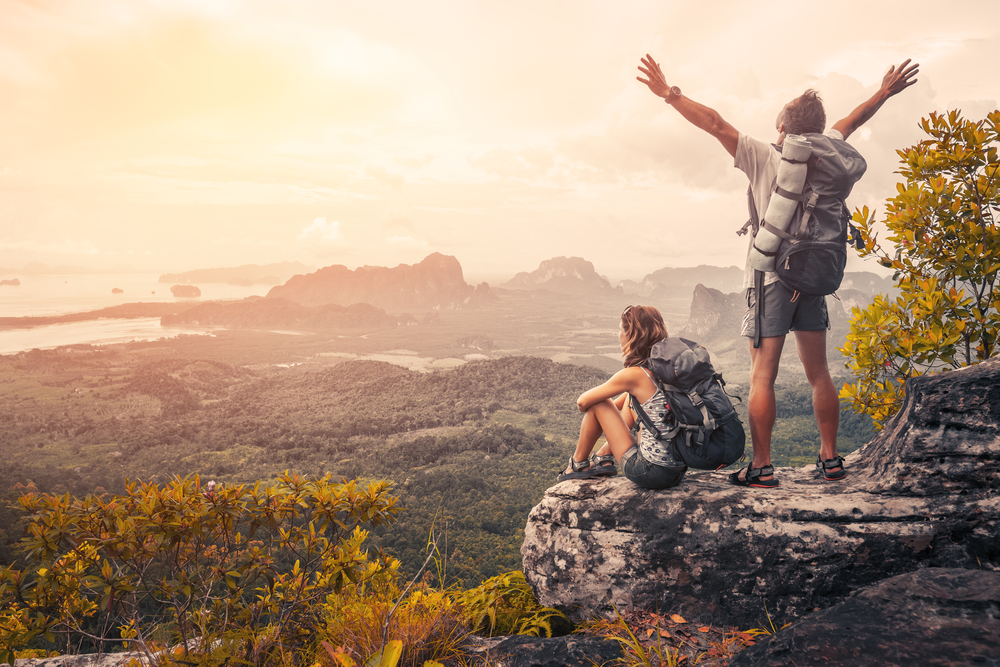
Adventure tourists are considered the most daring out there. These people are very active and they breathe experiences. Adventure tourists can be locked in a resort for a couple of weeks as this would simply ruin their vacation. They need action, change of scenery, meeting new people, and experiencing new things.
But what is adventure tourism? This style of tourism often involves outdoor adventures such as safari escapes, or desert dirt bike rides. It can involve any activity that is considered adventurous.
Adventure tourists are known for their high interest in getting into new experiences. If many tourists aren’t willing to travel far for their passions, this can be different for adventure tourists.
For example, some of the most unique swimming with the sharks’ experiences are very remote. Yet, adventure tourists always travel to these locations for the experience.
The most important word to describe these tourists is ‘experience’. All adventure seekers are normally interested in the experience more than being interested in simple everyday activities that are repetitive and monotone.
Adventure tourists aren’t afraid of looking beyond comfort as well. These holidaymakers aren’t always seeking to sleep in the most luxurious hotels. They might even sacrifice personal comfort for the awaiting experience.
2. Backpack tourists

Backpack tourists are typically frugal and interested in multiple aspects of tourism. As their category name suggests, these tourists are normally only traveling with a backpack. This is where they keep clothes, shoes, sunglasses, charges, and even food. Traveling with a backpack isn’t easy. You have to carry it around with you all day.
So why do backpack tourist numbers increase year by year if it’s so difficult to carry a backpack all day? The first reason has to do with economics. It’s simply more affordable to stay in backpack hostels and bed and breakfasts than to stay in typical hotels. It’s also less worrying as these tourists have all their belongings with them at all times.
Most importantly, backpack tourism is fun. Those into this type of holidaymaking aren’t afraid to put on sports shoes and comfortable clothing and get moving. They can see and experience multiple other aspects of their traveling location compared to other tourists.
Backpack tourists also differentiate themselves from adventure tourists as they can be into different aspects such as seeing cultural landmarks and even traveling for good restaurants. They can combine all aspects of tourism with an adventure into a unique budget-friendly type of holidaymaking.
Shortly called ‘backpackers’ these tourists are seen everywhere from busy city streets to remote mountain paths. They are generally highly self-driven and they require minimum guidance to get around as they like to plan.

3. Business tourists

Business tourists are a bit more difficult to stop compared to backpackers. Normally traveling for work purposes, business tourists are mostly interested in their work duties. Of course, things change during the day when these work duties are over.
Known for their tight schedule, business tourists are typically interested to discover the area where they need to work for a while. This means they can jump into the typical tourist attractions, check out local museums, restaurants, and parks.
Business tourists are normally blessed when it comes to expenses. Most business tourists have their transport and accommodation costs covered. This then means they might have money to get into shopping or to other activities that aren’t specifically free.
Those who travel for business are rarely called tourists, however. It’s only the group that has the time to become part-time tourists that are lucky enough to discover new places. There are plenty of professionals traveling for business with no time for holidaying.
New York is the number one business tourist destination. Known for its high number of business and economic development, the city also offers plenty of world-class landmarks to visit, making it the perfect stop for business tourists.
4. Cruise tourists
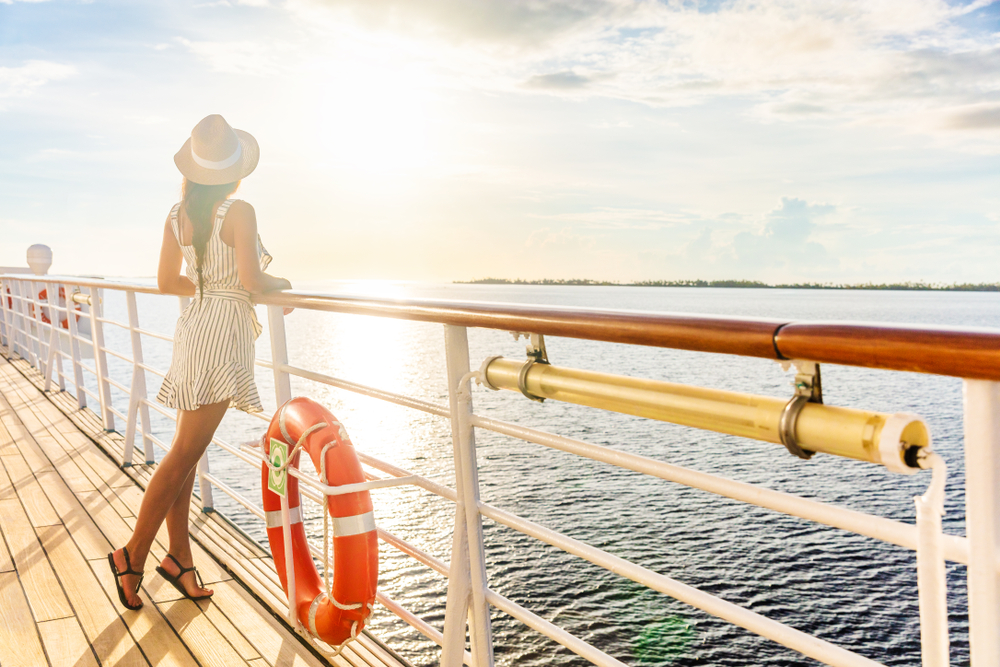
A special type of tourist is only interested in going on a cruise. Many cruise tourists are seniors and seeing the world from a cruise ship is often a yearly holiday for them. Carnival Cruises and other similar companies offer complete tourist packages for these seniors. Almost all of them have the freedom to choose which countries they want to visit as cruises take tourists on different types of tours.
Some cruises are only bound to the Gulf of Mexico. Others travel around Central and South America. There are also very popular Mediterranean cruises for those who want to travel along Southern Europe’s coast from Portugal to Greece with stops in Spain, France, and Italy.
The main benefit of these cruises is they allow their customers to see different countries as special port stops are planned along the route.
Cruise tourists have also been known to be among those who love long holidays the most. There are plenty of cruses that last more than a month and this type of adventure can certainly count as the summer holiday.
Cruise tourists generally travel in couples or small groups. It’s rare to find solo cruise tourists. Most cabins available on cruise ships are for couples. This is why they can be the ideal type of escape for tourists and couples who want to relax for a few weeks.
Most cruise tourists appreciate good food, drinks, and the ability to socialize on the ship. This is why all cruise ships offer one or multiple restaurants, a common socializing area, a sunbathing deck, music nights, and even casino nights. This is why some tourists even prefer not to step off the ship even when docked as all amenities are covered for them.
5. Cultural tourists
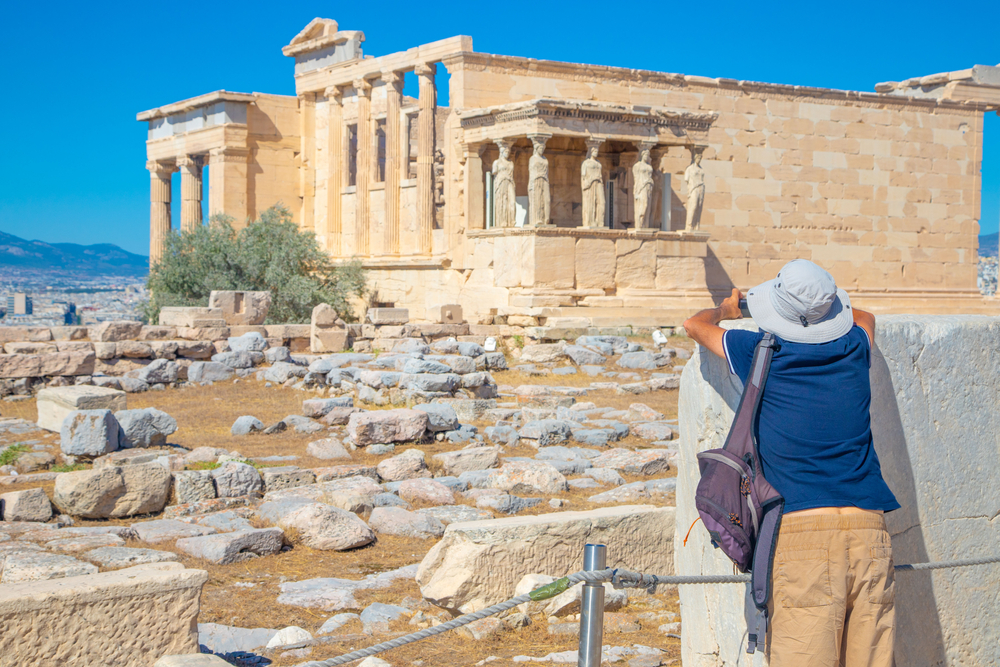
Culture is a sub-niche of traveling. Culture travelers differentiate themselves considerably from others as they choose different destinations to the typical beach resort escape. They might even travel to the same places as others but they visit different attractions.
As their name suggests, cultural tourists are into the culture. This vast area of interest typically covers, history with its museums, education with learning opportunities, ethnographies with its traditions, etc. Being a cultural tourist means you check out all of the cultural attractions of your destinations such as theatres, cinemas, and old cathedrals.
A cultural tourist is typically traveling at a slow pace so there’s sufficient time to admire and participate in different cultural events. Most cultural tourists can be seen in museums. Offering a glimpse into the history of an area, museums are ideal for cultural tourists as they often meet other tourists from around the world also interested in culture.
Cultural tourism flourishes in historically-rich cities and countries. Italy, France, and England are some of the most visited cultural hubs around the world. Italy’s renascence period with its painters, sculptors, and architects still attracts millions of tourists from around the world. These tourists are there to see these aspects that are unique to Italy as they can’t be reproduced anywhere else.
Being a cultural tourist also has its downsides. As every place is unique, cultural tourists typically want to visit more places that require a considerable budget. Visiting London is an experience that is certainly enriched by visiting other British cultural hubs such as Durham or Oxford. All of these cities can offer a combined cultural vacation of at least a week.
6. Domestic tourists
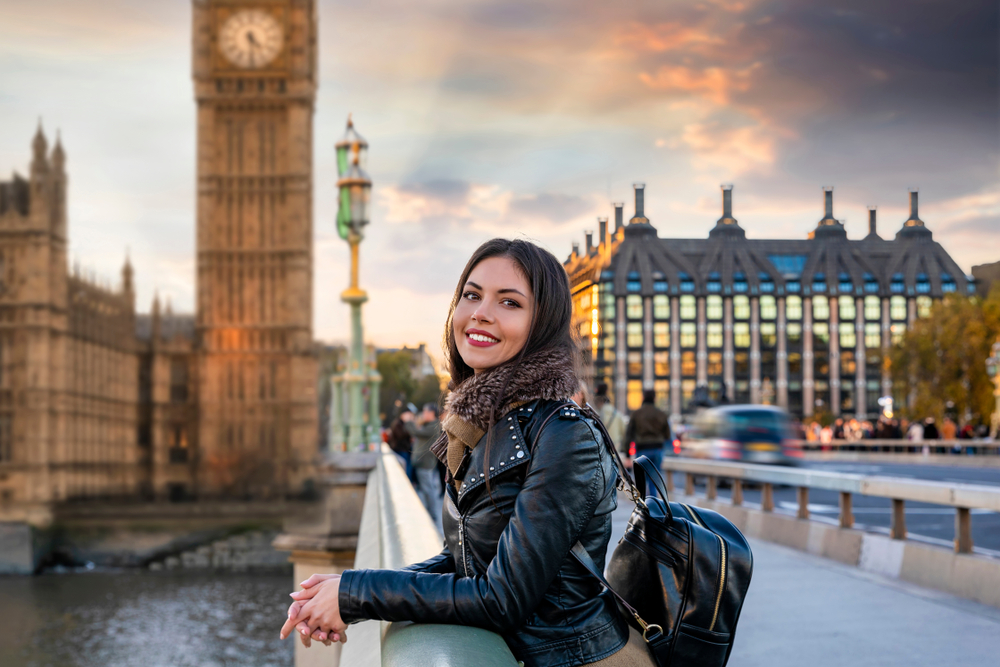
One of the main categories of holidaymakers is represented by domestic tourists. These travelers are typically interested in what their native countries have to offer. Domestic tourism means discovering locals places within the country.
Domestic tourists travel by airplane, car, bicycle, or they even hitchhike. This is one of the most important aspects when it comes to discovering and rediscovering your own country.
All domestic tourism is typically based on the same rules and international tourism, with a busy season where an influx of travelers is expected. For most tourists, it is also a good opportunity to look at what makes their country great.
Domestic tourism incorporates all other types of tourism. Its sub-niches include cultural domestic tourism, culinary domestic tourism, adventure domestic tourism, leisure domestic tourism, etc.
Domestic tourists are also typically interested in multiple aspects of their travels. Visiting a city or a region is typically accompanied by discovering its main touristic attractions and things to do.
7. Eco-tourists
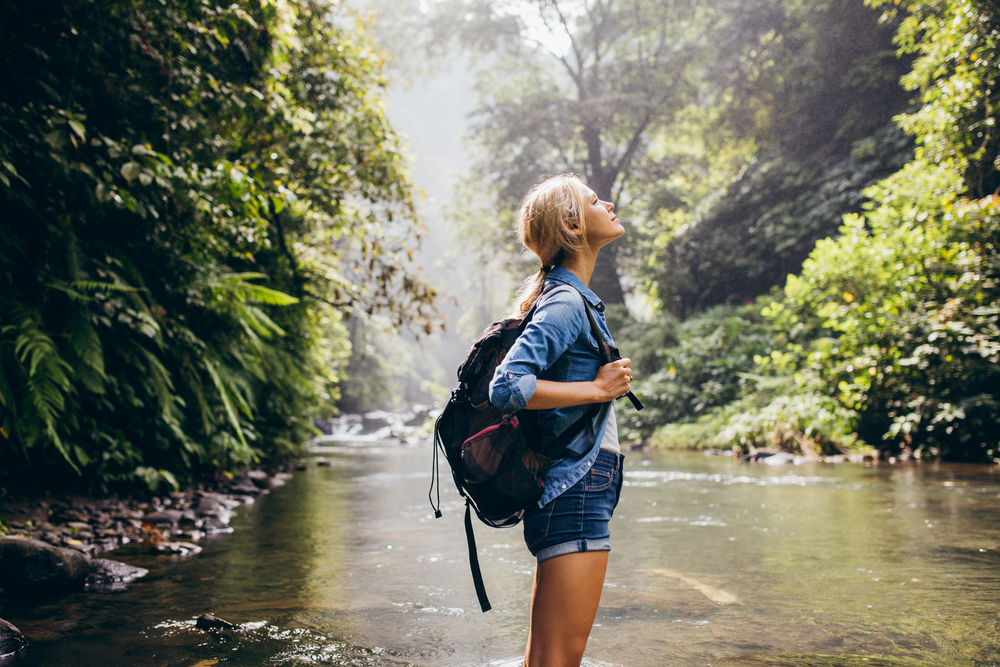
Eco tourists are a growing niche of travelers highly preoccupied with sustainability, ecology, and general nature care. This type of tourism is growing fast around the world and it has a minimalistic approach with a reduced impact on the environment.
Riding dirt bikes through green fields is not ecotourism. But cycling through rural areas is considered eco-tourism, with its care for nature.
Most eco-tourists travel by car or plane to a certain destination. But they can also travel by bike or even walk multiple days to reach a destination or to experience all that it has to offer.
Rural Italy offers great world-class eco-tourism destinations. Small family farms here show tourists how to live like a local, cook like a local, and even how to care for animals.
There’s a modern side to eco-tourism as well. All types of reduced environmental impact technologies such as e-bikes are included in guided eco-tourism tours.
Most eco-tourists appreciate a way of life that cares for nature and what it has to offer. This is why excessive waste isn’t characteristic to these types of tourists which tend to be the best when it comes to not leaving traces of their visit even when out in nature.
Eco tourists are also smart when it comes to limiting the resources they need on holiday. This is why this type of tourism is often characterized as affordable. But it can still be expensive with the exception that these types of eco-tourists know how to make the most from very few resources.
8. Food tourists
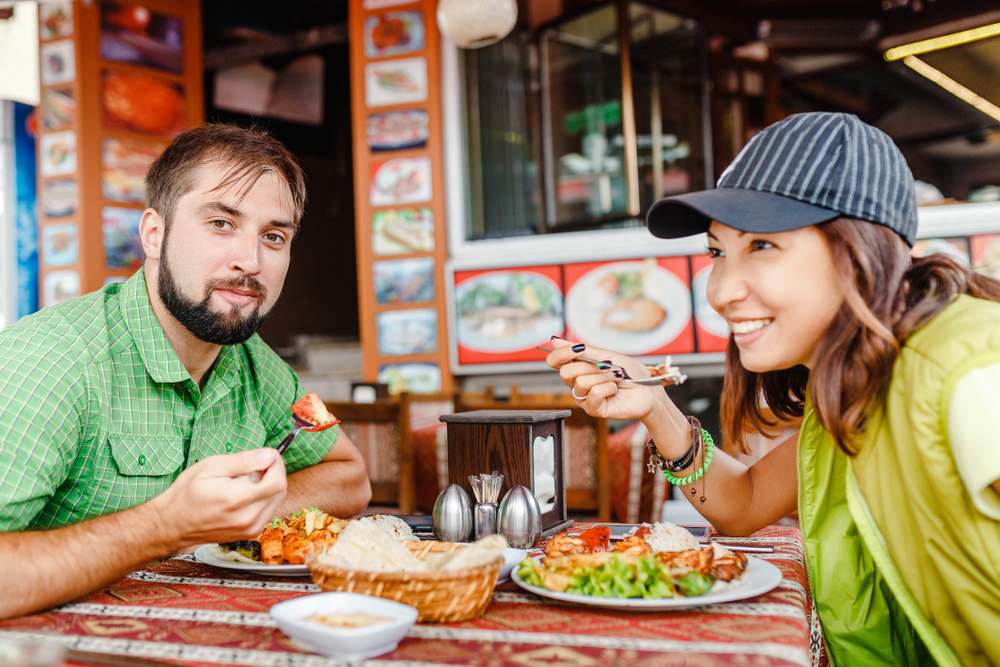
Food tourists are a special type of gourmand holidaymakers. Food tourist travels their country and other countries to eat diverse foods. This type of tourism is flourishing in the conditions in which foods become more standardized in developed nations and since certain meals can only be experienced among the locals who make them often.
Among food tourists, there are plenty of sub-divisions such as vegan food tourists or Asian food tourists. All of them are interested in very specific aspects of food. But most food tourists have an open mind to all types of foods and countries.
Cultures influence food considerably. This is why learning about culture often means tasting the food it makes and seeing what characterizes its delicious taste.
Food tours are now offered constantly by travel agents. Some of the best food travel destinations are those in South East Asia. Thailand is one of the specific destinations for good affordable food. Italy is also known for its rich culinary history and people from all over the world make it here to eat unique pizza and pasta.
But food tourists can also travel by themselves. To be considered a food tourist, travelers have to specifically set out to a certain destination for its food. But food tourists can also be found inside the country. Seattle and New York are cities with a rich culinary history.
Texas is known as the state to be in when it comes to stakes. People travel to these locations to eat the best foods as made by those with cooking experience.
Food tourists are also responsible for making various restaurants famous. For example, some of the best Michelin-star restaurants in Spain and the world are located in often isolated locations in small towns and even in villages.
Food tourists travel long distances to reach these restaurants. Once there, they get to eat the food made by famous chefs and they often taste delicious meals made with entirely local ingredients. These tourists are generally known for a culinary passion.
9. Generalists
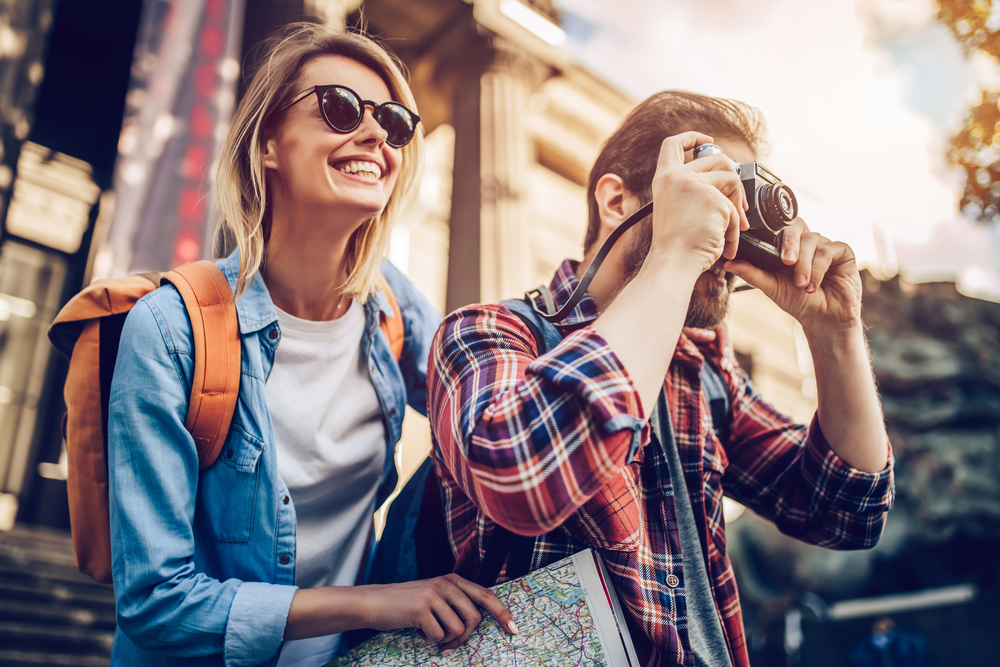
Generalist tourists are a combination of all types of tourists. These travelers set out to a certain destination with an open mind to experience as much as it has to offer. A generalist tourist can look at a certain style of architecture one day and be interested in the food of a city the next day.
All generalist tourists are typically looking into a holiday experience. This means accommodation and even traveling to multiple places within the region is of interest.
Most holidaymakers are generalists. They travel to different locations with a plan to see its tourist attractions, check out its museums, and even get immersed in unique experiences.
Generalist tourism isn’t characterized by traveling to certain destinations or in a given timeframe. It is characterized by the general will to travel. This is why it can look very different from one tourist to another.
Those who like to travel often describe themselves as tourists, but this generally involves being a generalist tourist.
10. Holiday tourists
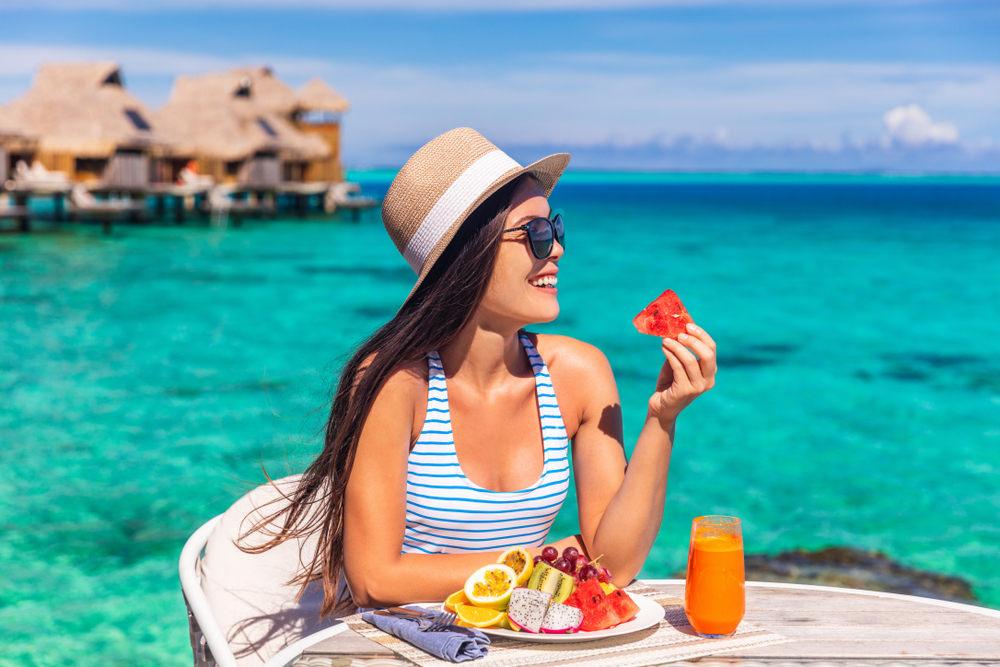
Holiday tourists are those travelers that mainly go on holidays when traveling. A holiday is typically a period of at least a few days to relax away from home. Holiday tourists are the most popular type of travelers, especially among families.
Holidays are planned once or multiple times per year and this means taking time away from work and typical chores to travel.
You can see holiday tourists especially around resorts, beaches, camps, and all other locations typically associated as touristy. Florida is a good example of a holiday tourist state. It attracts people from all around the world who say the visit to the sunny state is a ‘holiday’.
The English expression ‘I holiday in’ refers to taking a yearly vacation in a certain location. This is why holiday tourists are those travelers who are typically on a longer vacation, typically the summer vacation which is the longest for most.
Holiday tourists can travel both by themselves and in groups. A holiday can be taken as a way to relax for health purposes. A doctor can recommend going on a holiday for patients under constant stress. Going on holiday is seen as taking a few days up to a few weeks off to relax completely and to have the occasion to reduce stress by worrying less.
Those on holiday are typically using the term in different situations. But their expressions can sometimes be confusing. ‘Holiday food’ is the food made at home, typically during religious celebrations such as Christmas or Easter. Holiday food is rarely used to refer to the meals consumed while away on a summer holiday.
11. International tourists
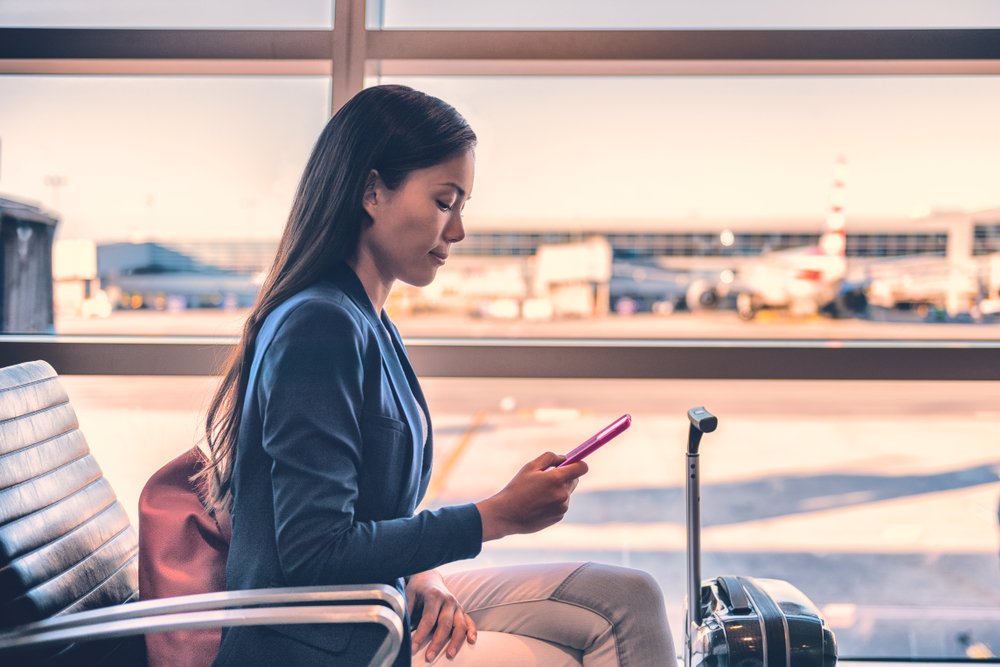
Most tourists are willing to travel to almost any location. But among general travelers, there’s a distinct category only willing to travel abroad. Many reasons make international tourists only consider holidaying abroad.
Among them is the experience of visiting most tourist attractions in their own countries. Another reason can be the appeal of a certain destination, particularly for its popularity.
International travel is at an all-time high in recent years. With the advent of low-cost air travel companies, the opportunities and the cost of international travel are in the favor of travelers. A large percentage of international tourists are planning their holidays accordingly as this is the type of travel that mostly rewards those who plan.
The perks of proper planning for international tourists include finding the lowest airplane ticket fares and the best accommodation prices. International travel can also be subject to extensive paperwork such as visa applications, proof of income, proof of residency, etc. While highly rewarding, international tourism can also require a bit more preparation than domestic tourism.
International tourists are also some of the most open when it comes to travel destinations. From the classic locations such as France and Spain to the most remote international travel locations such as Iceland, these travelers are typically willing to make an effort to reach the destination.
One of the perks of international travel is getting immersed in different cultures. This can be a bit more difficult to achieve with domestic travel. Major travel channels now recommend remote international travel due to the current pandemic. This is why Antarctica is one of the most remote international travel locations that gets recommended today.
12. Leisure tourists
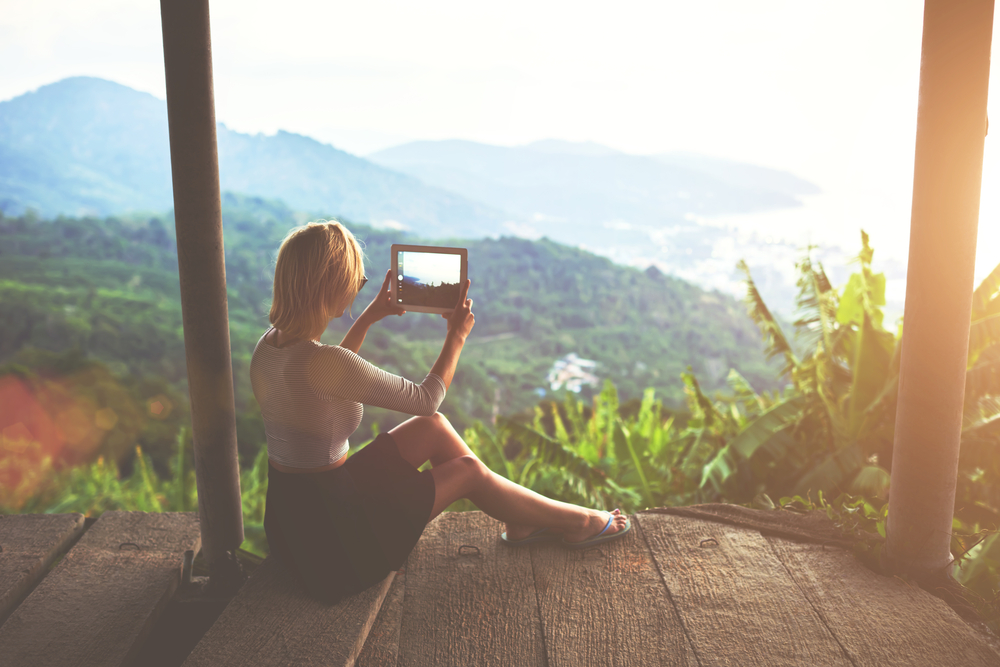
Leisure tourists are a type of generalist travelers. These tourists are interested in taking a break from reality, seeing new places, eating new foods, experiencing new adventures, but without sacrificing rest and comfort.
Unlike backpackers or adventure tourists, leisure tourists also feel the need to relax while traveling. This is what makes them even more interested in locations with good accommodation options.
Leisure tourists are generally characterized by a slower pace of travel compared to adventure tourists. They like visiting the most popular touristic areas in their destination. Cultural experiences can’t be overlooked by these tourists as well.
Apart from visiting landmarks, leisure tourists also appreciate good diverse food options. All in all, these types of tourists are among the most proficient when it comes to making the most of a trip and coming back come reinvigorated.
13. Medical tourists
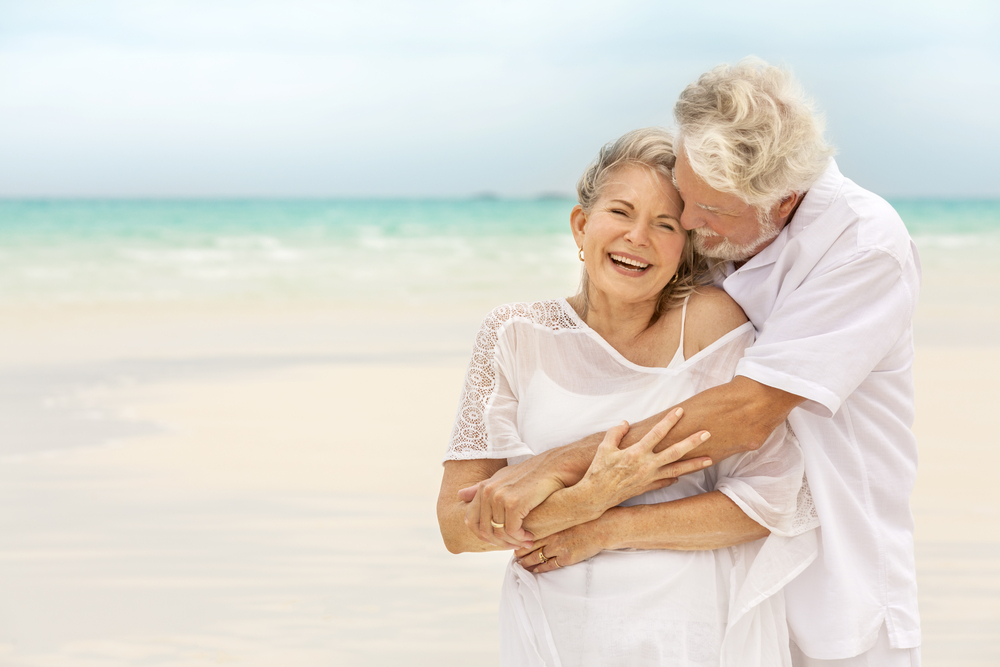
Medical tourists are known as patients who travel for healthcare purposes. Both incoming and outgoing patients have been increasing in the US. There are a few factors that influence these two trends.
Incoming patients to the US are typically those coming for a very specific medical intervention. The high number of specialized doctors in the US makes it an attractive country for those coming from smaller countries where there isn’t a great selection of doctors or where there are no proven interventions for a certain condition.
Outgoing US patients are leaving for other smaller countries to get cheaper and often free medical healthcare. Medical insurance costs are constantly rising in the US and this makes it the country almost impossible to get medical treatment for those with a certain condition that isn’t covered by insurance.
US citizens prefer to travel as little as possible to get medical healthcare. Most don’t head to Europe but rather to Central and South America. Costa Rica is the main destination for US medical tourists. Patients head to the country for a few weeks and even for a few months. They might be recommended a rest period under supervision for a certain medical intervention.
The number one reason for US medical tourists outside of the country is dentistry work. All dentistry interventions in the US are considered among the most expensive in the world. It’s a routine to see US citizens traveling abroad only for a few days to get work done on teeth and for other oral care interventions.
Mexico is another popular destination for US citizens seeking to travel to get better healthcare. The proximity of the country, its low prices, and high numbers of doctors and clinics make it a viable option for medical tourists.
While further away from the US, India is also a top destination for medical tourists. Doctors here are some of the best-trained in the world. Since most also speak English, their medical services become tempting to US citizens. Singapore also gets a high influx of US medical tourists. Some of the world’s largest hospitals and some of the top-level doctors here make the small country highly attractive for patients who need complex medical treatment from around the world.
14. Reflective tourists
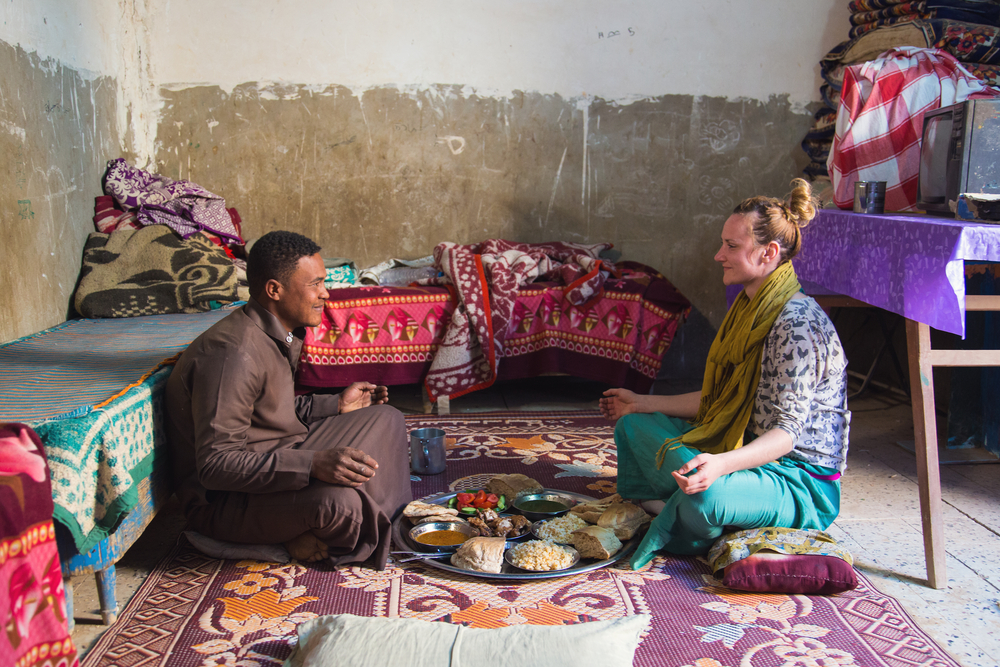
Reflective tourists are characterized by the wish to travel and learn. It can be said learning has multiple faces in the case of these travelers. Tourists can travel to learn more about a place but they mostly travel to learn more about their heritage, where they come from, and the culture of their genealogy.
Europe is the main destination for reflective tourism. The continent has been known for waves of mass-level migration, especially to North and South America. This is why a rising number of reflective tourists make their way to Europe each year.
But what do these tourists do that others don’t? Reflective tourists are normally interested in culture hotspots. They visit museums, churches, theatres, exhibitions, stadiums, etc. These are all part of a wider spectrum of cultural attractions.
But reflective tourists can also dig a bit deeper into their family’s history. They might even visit local administration to get a trace of their lost relatives and get in contact to learn more about their family’s genealogy.
Reflective tourists are increasing in places such as Spain and Italy. Largely impacted by mass migration over a century ago and even today, these countries have been the main attraction for reflective tourists from the US, Canada, and Argentina.
Many of these countries even have tourism agencies specialized in offering services for reflective tourists on discovery or rediscovery trips.
15. Religious tourists

Religious tourists are one of the largest groups of travelers. These types of tourists are normally interested in heritage historic places of worship tied to their religion. Religious tourism is growing year by year but it isn’t new. Old pilgrimages were made thousands of years ago such as the Camino de Santiago in Spain.
Religious tourists can be split according to specific religions and branches within a religion. Jews are normally interested in traveling to Israel. Even Jews who aren’t into tourism are typically interested in visiting Israel at least once.
Jews also travel to other Jewish communities around the world frequently. They can even pitch in to build new Synagogues around the world or to restore historic places of worship.
Christians travel to Israel as well. They visit Jerusalem and Bethlehem mostly, without any particular interest in larger cities such as Tel Aviv. Christians also visit cathedrals, churches, and monasteries around the world.
Christian tour operators organized different circuit visits to specific countries where tourists get to see some of the most important Christian landmarks of the area.
Furthermore, Christians also organized mass pilgrimage events around the world. Other popular Christian destinations include The Vatican, especially for Catholic Christians.
Millions of Muslims visit Mecca each year. The celebrations here are normally held throughout the year. Located in Saudi Arabia, Mecca is a place of worship with strict rules. Pilgrims here aren’t allowed to drink alcohol, according to Muslim tradition.
16. Rural tourists
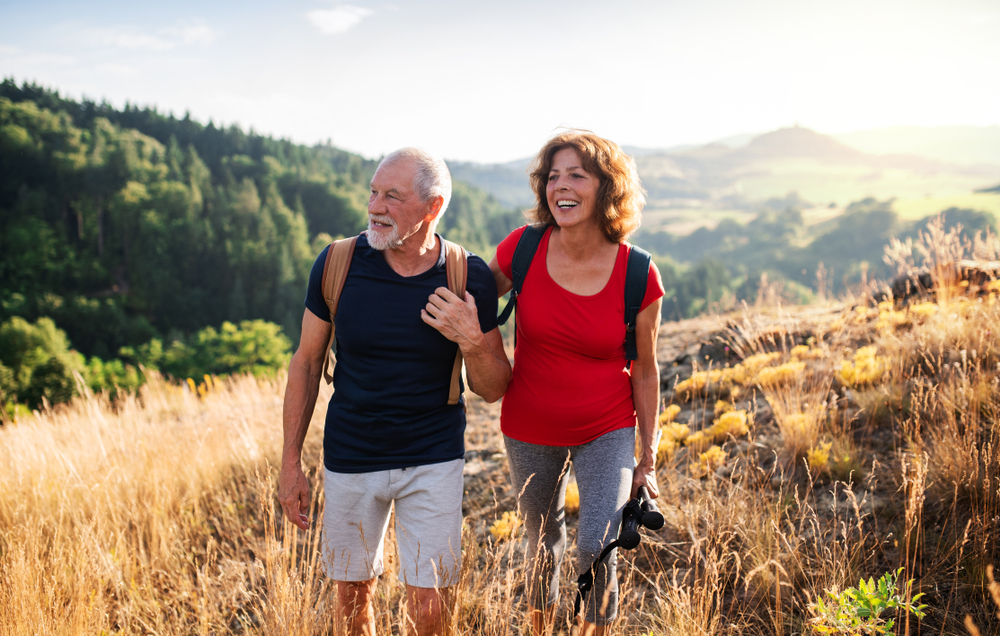
Rural tourists are normally interested in traditional villages. These types of tourists exist around the world. Rural tourism is completely dead in some areas around the world but it is also very popular in other areas.
Locronan in the Frances Britany region is the country’s main rural hotspot. It enjoys easy access from mainland Europe. Broad Campden in England’s Gloucestershire region is one of the most visited classic villages in the country and the world.
Its small streets, traditional homes, and relaxed way of life make it a high attraction for many of those interested in traveling away from large cities.
The perks of rural tourism include a slower way of traveling. It also allows tourists to meet the locals and improve socializing opportunities. Staying in rural areas also means enjoying different hotels. Far away from cities, the rural hotel often offers more wide-open spaces which encourage walks and time spent outdoors.
Rural tourists also have a few drawbacks to face. For example, there are not many great public transport links to some small villages around the world. This is why renting a car is often a must when it comes to making it to some of these remote towns and villages.
Rural tourism depends on your means of transport but this is what also protects it from becoming overly popular to a dangerous extent.
17. Romantic tourists
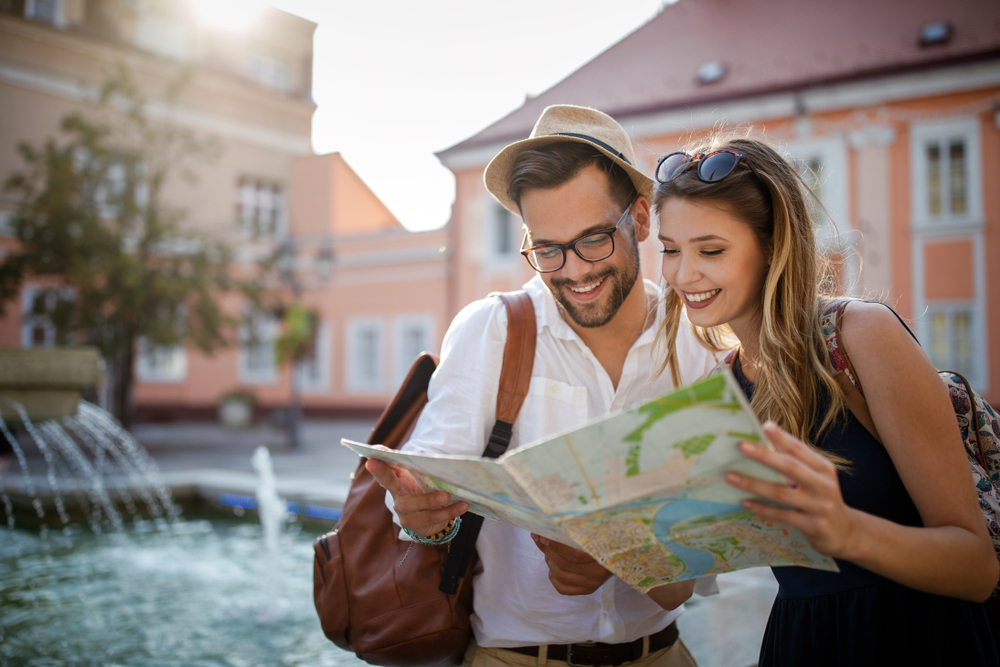
Romantic tourists are some of the most relaxed when it comes to traveling. It’s often as much about the journey as it is about the destination with these tourists. Most couples into romantic tourism love gateways.
This is why those into this type of travel typically love to get out more, to explore, and not to be rushed as being away on holiday is all that matters.
Paris is the capital of romantic tourism. Walking the streets of this city is almost an experience worth the trip on its own. With plenty of romantic sights and great street-side cafes, couples can get to spend more time together in a relaxed atmosphere here.
Venice is another popular hotspot for couples. This is where tourists come to experience romantic gondola rides. Almost all of the couples here come to see the canals of the city. But there are plenty of other attractions for these tourists here.
Romantic tourists typically holiday through the year. According to tradition, the honeymoon is the most sought after the period for romantic gateways. Newlywed couples typically go away for a few weeks on the honeymoon, typically to one or multiple romantic destinations.
The specifics of this type of tourism are tied to accommodation requirements, good food, possible shopping opportunities, and the ability to go on long walks. Since romantic tourists like long walks, the most important aspect when choosing a destination is safety, especially for evening time walks.
18. Senior tourists
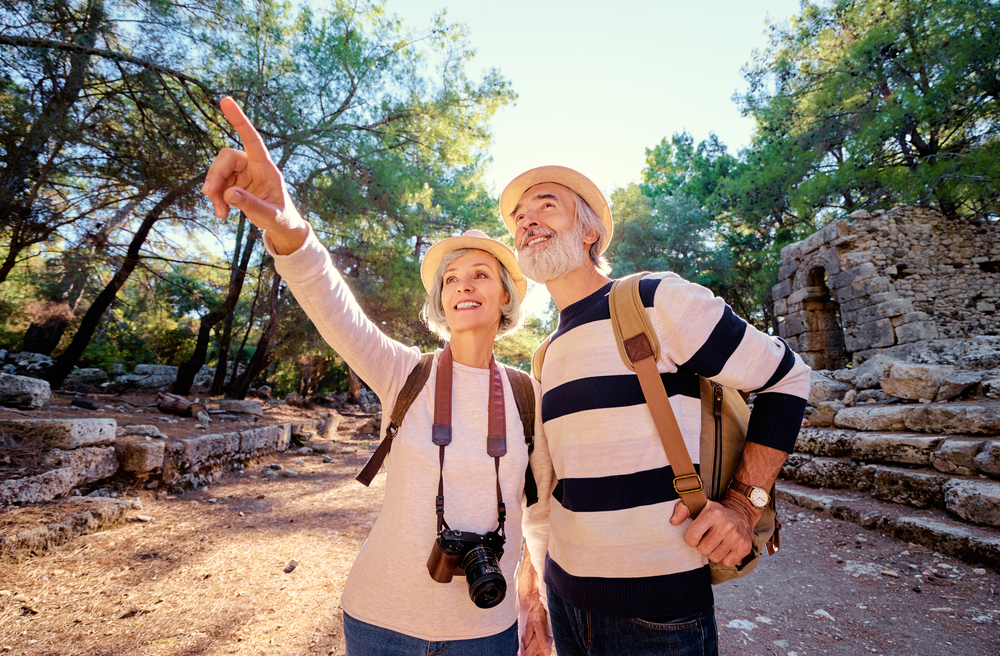
Seniors love to travel. Since they’ve reached an age when they don’t have to take care of the children or when they don’t have to go to work, seniors can often go on longer holidays further away from home.
Tourism for seniors is increasing in popularity. Two separate types of tourists can be found among them. Couples and group senior tourists are the two main types of travelers seen among the elderly.
Senior couples prefer romantic relaxing locations. Being out in nature or even visiting some of the most important tourist cities around the world are attractive proposals to senior tourists.
Group senior tourists are also popular. Seen in every large city around the world, these groups travel together, they eat in the same places, and they visit the same attractions.
The benefits of traveling in groups as seniors include better safety, the opportunity to socialize, a pre-planned trip, and plenty of opportunities to have fun.
19. Slow-paced tourists
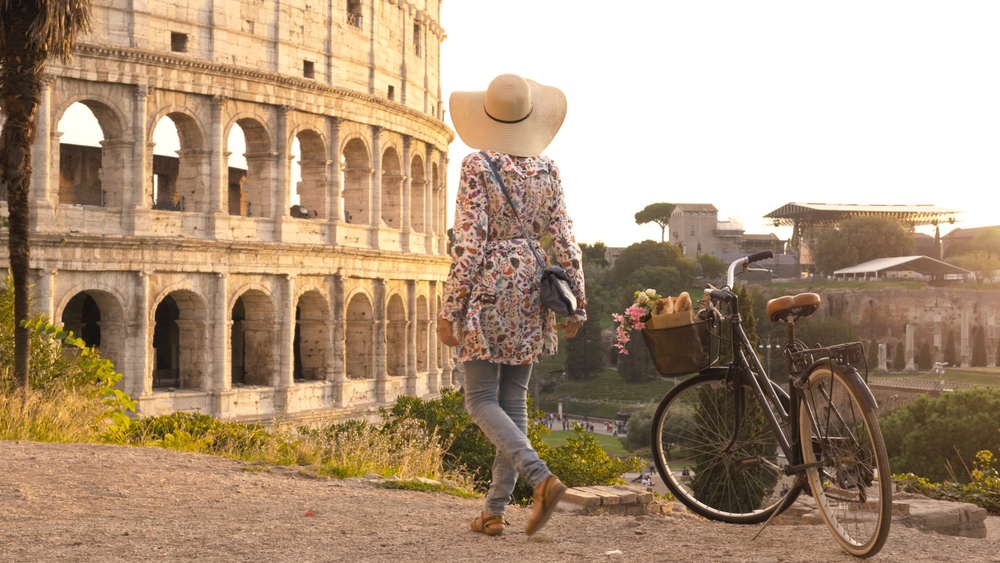
Slow-paced tourists are travelers who like to stay more in a certain location. Instead of spending two days in a city or village, these tourists can spend up to a week in a location. Slow-paced tourism can expand to holidays that take up to a month or even two months.
The benefits of slow-paced tourism are that it allows further discovery opportunities and more socializing opportunities. Slow-paced tourism is ideal for those interested in a cultural or discovery type of experience.
Villages in Germany are known for slow-paced tourism. People come here to see various traditions. They see livestock and farming that typically requires a slower pace of travel.
The benefits of slow travel are that it allows a deeper understanding of a certain culture. But even these types of travelers can be split into multiple sub-categories.
For example, slow-paced tourists can be interested in only visiting a country in appreciation for a certain personality. Slow-paced tourism developed the sub-niche of Shakespeare fans tourism in England.
20. Special interest tourists
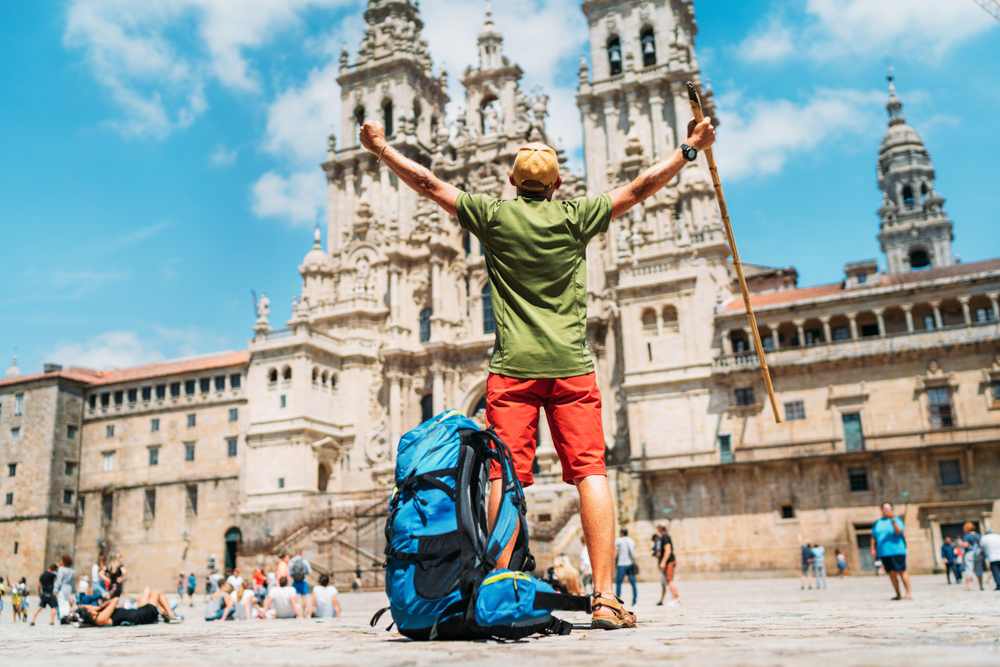
Special interest tourists generally visit a location for one thing only. This can be anything from a sports adventure opportunity or to visit a famous landmark. Examples of special interest tourists are seen all across the world.
Most special interests are tied to a historic location, a sports occasion, an individual, or a religious significance place. For example, tourists only go to Santiago de Compostela to visit the city’s cathedral. The same one-attraction or one-activity type of tourism is seen all around the world.
21. Sports tourists
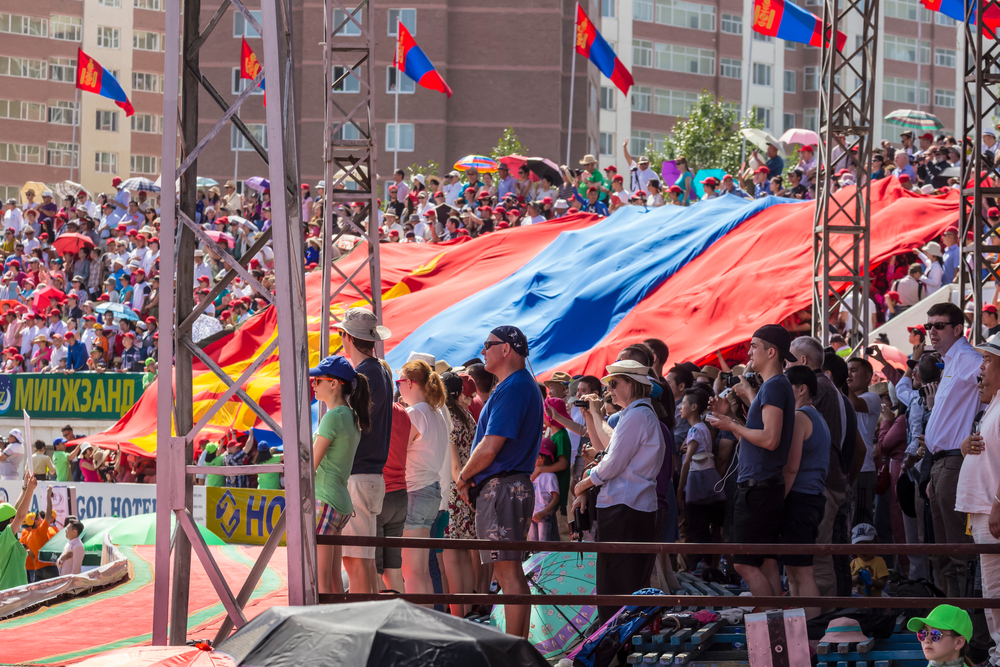
Sports tourism is at an all-time high. This type of tourism isn’t new, but the rise of sports and sports personalities makes people travel. Sports tourists often travel with their teams. Baseball fans and football fans often travel to support their teams.
But these tourists can also travel without a specific sporting event in mind. They can travel to see stadiums or they can travel to see important places in sports.
One of the most visited stadiums in the world is Camp Nou in Barcelona. This is the home of the most popular sports team in the world, FC Barcelona. The stadium sees millions of tourists per year. A large number of them only come here to see the stadium and the place where their favorite football players play.
Sports tourism has plenty to offer all around the world. The second most popular football team in the world is FC Liverpool. Its stadium is normally visited by thousands of tourists and football fans from around the world even when it’s not a match day. Groups are split into hourly visits and they get to visit the stadium in a 1-hour tour.
But the most important type of sports tourists is the traveler going to a certain event. In the US, sports tourists are best represented by Superbowl fans. This is where travelers from all around the country try to reach the finals, an event which is often quite expensive and difficult to get into.
A similar event is seen in Europe with the final Champions League game where sports fans from around the continent fight to get tickets to the event and to fly to the destination stadium for the big game.
The drawbacks of sports tourism are the lack of diversity outside stadiums, sports museums, and sporting events. Most of the tourists interested in a particular part of sports are normally reserved when it comes to traveling for other sports attractions such as small private sports memorabilia collections.
Unlike other tourists, sports tourists are known to spend a lot on events. Most sports events worth traveling for are known for their high ticket prices.
This is why sports fans typically have to start saving sooner compared to other tourists, especially since accommodation prices are higher in the period of a large nearby sporting event.
Saving up is mandatory for these tourists who need to spend more than others to reach a destination.
Related posts:
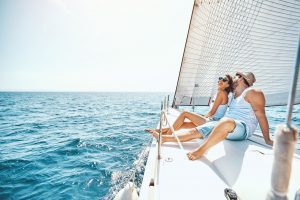

- Previous Chapter
- Next Chapter
The Encyclopedia of Tourism Management and Marketing is, quite simply, the definitive reference work in the field. Carefully curated by leading tourism scholar Dimitrios Buhalis, this is the largest tourism management and marketing ontology that has ever been put together and offers a holistic examination of this interdisciplinary field.
Use the Search within Book (below right) or browse the list of entries alphabetically to navigate over 1200 entries from leading international scholars.
An invaluable resource for academics, students and practitioners providing an ideal starting point for any research journey. The concise entries present an accessible and condensed overview of each topic and the selected references that follow each entry suggest directions for further detailed exploration.
You are not authenticated to view the full text of this chapter or article.
Access options
Get access to the full article by using one of the access options below.
Other access options
Institutional Login
Log in with Open Athens, Shibboleth, or your institutional credentials
Table of Contents
- Tourism Management
- Development Studies

- [66.249.64.20|185.66.15.189]
- 185.66.15.189
Character limit 500 /500
You are using an outdated browser. Upgrade your browser today or install Google Chrome Frame to better experience this site.

- IMF at a Glance
- Surveillance
- Capacity Development
- IMF Factsheets List
- IMF Members
- IMF Financial Statements
- IMF Senior Officials
- IMF in History
- Archives of the IMF
- Job Opportunities
- Climate Change
- Fiscal Policies
- Income Inequality
Flagship Publications
Other publications.
- World Economic Outlook
- Global Financial Stability Report
- Fiscal Monitor
- External Sector Report
- Staff Discussion Notes
- Working Papers
- IMF Research Perspectives
- Economic Review
- Global Housing Watch
- Commodity Prices
- Commodities Data Portal
- IMF Researchers
- Annual Research Conference
- Other IMF Events
IMF reports and publications by country
Regional offices.
- IMF Resident Representative Offices
- IMF Regional Reports
- IMF and Europe
- IMF Members' Quotas and Voting Power, and Board of Governors
- IMF Regional Office for Asia and the Pacific
- IMF Capacity Development Office in Thailand (CDOT)
- IMF Regional Office in Central America, Panama, and the Dominican Republic
- Eastern Caribbean Currency Union (ECCU)
- IMF Europe Office in Paris and Brussels
- IMF Office in the Pacific Islands
- How We Work
- IMF Training
- Digital Training Catalog
- Online Learning
- Our Partners
- Country Stories
- Technical Assistance Reports
- High-Level Summary Technical Assistance Reports
- Strategy and Policies
For Journalists
- Country Focus
- Chart of the Week
- Communiqués
- Mission Concluding Statements
- Press Releases
- Statements at Donor Meetings
- Transcripts
- Views & Commentaries
- Article IV Consultations
- Financial Sector Assessment Program (FSAP)
- Seminars, Conferences, & Other Events
- E-mail Notification
Press Center
The IMF Press Center is a password-protected site for working journalists.
- Login or Register
- Information of interest
- About the IMF
- Conferences
- Press briefings
- Special Features
- Middle East and Central Asia
- Economic Outlook
- Annual and spring meetings
- Most Recent
- Most Popular
- IMF Data Portal
- World Economic Outlook Databases
- AI Preparedness Index
- Climate Change Indicators Dashboard
- IMF Finances
- International Financial Statistics
- Financial Access Survey
- Government Finance Statistics
- G20 Data Gaps Initiative
- Currency Composition of Official Foreign Exchange Reserves
- Publications Advanced Search
- IMF eLibrary
- IMF Bookstore
- Publications Newsletter
- Essential Reading Guides
- Regional Economic Reports
- Country Reports
- Departmental Papers
- Policy Papers
- Selected Issues Papers
- All Staff Notes Series
- Analytical Notes
- Fintech Notes
- How-To Notes
- Staff Climate Notes
- español
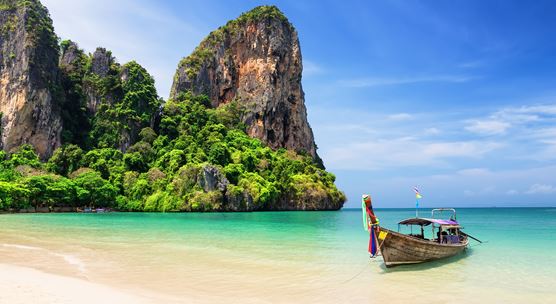
Tourist arrivals in Thailand—a leading tourist destination—have dropped dramatically. In addition to providing soft financing to tour operators, the country is promoting domestic tourism and long-term stays. (photo: Preto Perola by Getty Images)
- IMF Country Focus
Tourism in a Post-Pandemic World
February 26, 2021
Tourism continues to be one of the sectors hit hardest by the COVID-19 pandemic, particularly for countries in the Asia-Pacific region and Western Hemisphere. Governments in these regions, and elsewhere, have taken measures to ease the economic shock to households and businesses, but longer-term the industry will need to adapt to a post-pandemic “new normal.”
Related Links
- Read the paper
- Watch the seminar
- F&D article on tourism-dependent countries
If you are hesitant to hop on a plane these days, you are not alone. According to the United Nations World Tourism Organization (UNWTO), tourist arrivals are estimated to have fallen 74 percent in 2020 compared to 2019.
For many developing countries in the Asia-Pacific and Western Hemisphere—small island states in particular—the effects have been severe. Before the pandemic hit, tourism was big business, accounting for more than 10 percent of global GDP. The share was even larger in tourism-dependent countries.
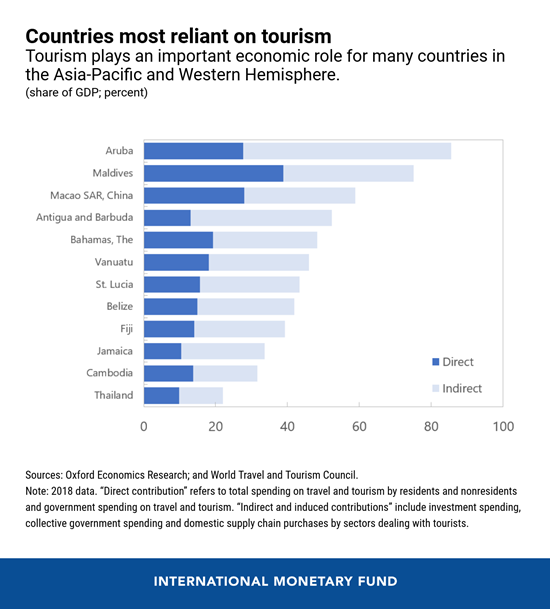
Toward recovery
To recover, vaccines will need to be widely distributed, and policy solutions implemented.
Some governments have been providing financial support, either directly or through soft loans and guarantees to the industry. Thailand allocated $700 million to spur domestic tourism, while Vanuatu offered grants to small and medium-sized enterprises. Countries have also been assisting firms to adapt their business models and retrain staff. In Jamaica, the government gave free online training certification classes to 10,000 tourism workers to help improve their skills.
However, many tourism-dependent economies are hampered by limited fiscal space. New initiatives to reignite the sector could perhaps help. In Costa Rica, for example, national holidays have temporarily been moved to Mondays to boost domestic tourism by extending weekends. Barbados introduced a ‘Welcome Stamp’ visa—a one-year residency permit that allows remote employees to live and work from the country. Similarly, Fiji launched a Blue Lanes initiative that allows yachts to berth in its marinas after meeting strict quarantine and testing requirements.
Post-pandemic, a continuing shift toward ecotourism—a fast-growing industry focused on conservation and local job creation—could give an additional boost to the industry. This is already a key element of Costa Rica’s tourism strategy. Thailand too is trying to shift to niche markets, including adventure travel and health and wellness tours.
Technology can also play an important role. With social distancing and health and hygiene protocols likely to remain in place for the foreseeable future, touchless service delivery and investments in digital technology could be a bridge to recovery.
Finally, should the reduction in travel be longer lasting, owing to changes in tourist preferences or economic scarring, some tourism-dependent countries may need to embark on a long and difficult journey to diversify their economies. Investing in non‑tourism sectors is a long-term goal but could be aided by strengthening links between tourism and locally produced agriculture, manufacturing, and entertainment. In Jamaica, for instance, an online platform was launched that allows buyers in the hotel industry to directly purchase goods from local farmers. Exports, including services, could also be expanded, using regional agreements to address the constraints imposed by limited economies of scale.
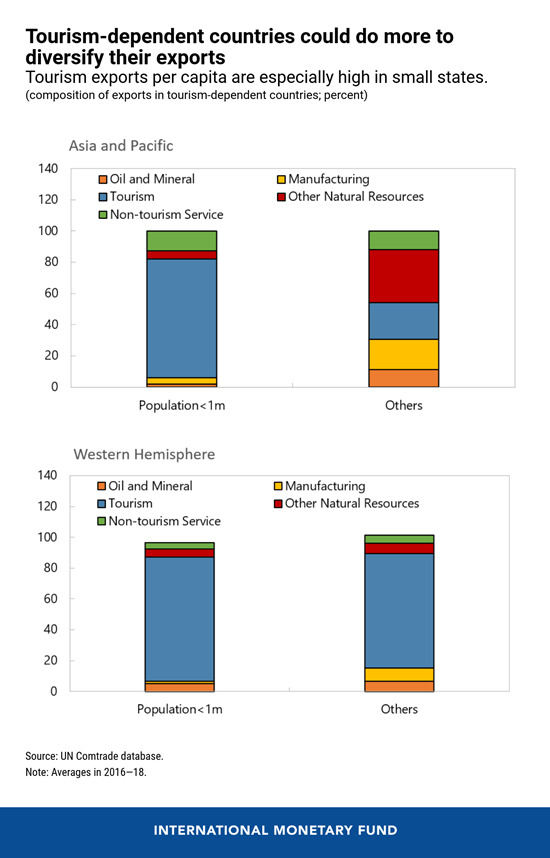
Solutions will differ from country to country, and the pace and scope of recovery will of course depend on global developments. But there is an important opportunity to be harnessed. Beyond the immediate priority of mitigating the impact of the pandemic, countries will need to create a “new normal” for the tourism industry. Diversifying, shifting to more sustainable tourism models and investing in new technologies could help to shape the recovery.

How to Write Travel Blog Posts: 13 Ideas from One Trip

Sharing is caring:

How to Write Travel Blog Posts from One Trip: 13 Ideas and Examples
Do you want to learn how to create lots of content from a single trip?
Here are 13 travel blog post ideas you can write about for every destination you visit!
As a travel blogger, it can be challenging to create content if you aren’t traveling all the time. But even if you only take a few trips per year, these ideas will help you never run out of blog posts!
How to Start a Travel Blog
If you haven’t started a travel blog yet, be sure to read this post for a step-by-step guide on how to do it: How to Start a Travel Blog for Beginners.
Or sign up for my FREE email challenge below to get your blog up and running in five days:
This will show you how to start a travel blog the right way so you can make money blogging!
Tips for Your Trip
While you’re traveling, here are some things you can do to make sure writing blog posts about your trip is an easy experience once you get home:
- Come up with blog post ideas beforehand so you know exactly what kind of content you need to gather while you’re actually traveling
- Take photos of EVERYTHING (you never know when a photo will be useful for a blog post)
- Document your trip thoroughly, whether you write in a travel journal each day or just jot down helpful notes on your phone as you go
The more prepared you are, the easier it will be to write blog posts when you get home!
1. Itinerary
The first blog post you can write about your trip is an itinerary guide!
Whether it’s a short weekend guide or a full one-week itinerary to your destination, write about what to do, where to stay, etc. in order to have the perfect trip.
You can actually get even more blog posts out of this one if you write itineraries of different lengths… or you can combine several itinerary ideas all into one blog post.
Travel Blog Examples:
- The Perfect Two Week Costa Rica Itinerary
- The Perfect One Week Italy Itinerary
2. Ultimate Guide
Another idea is writing an ultimate guide to a destination.
This is exactly what it sounds like: a detailed blog post covering every aspect of a destination, including how to get there, where to stay, the best things to do, where to eat, what to pack, specific tips you picked up while you were there, and so on.
- The Complete Guide to Castle Combe, England
- Ultimate Guide to El Paredon, Guatemala
- The Complete Guide to Cinque Terre
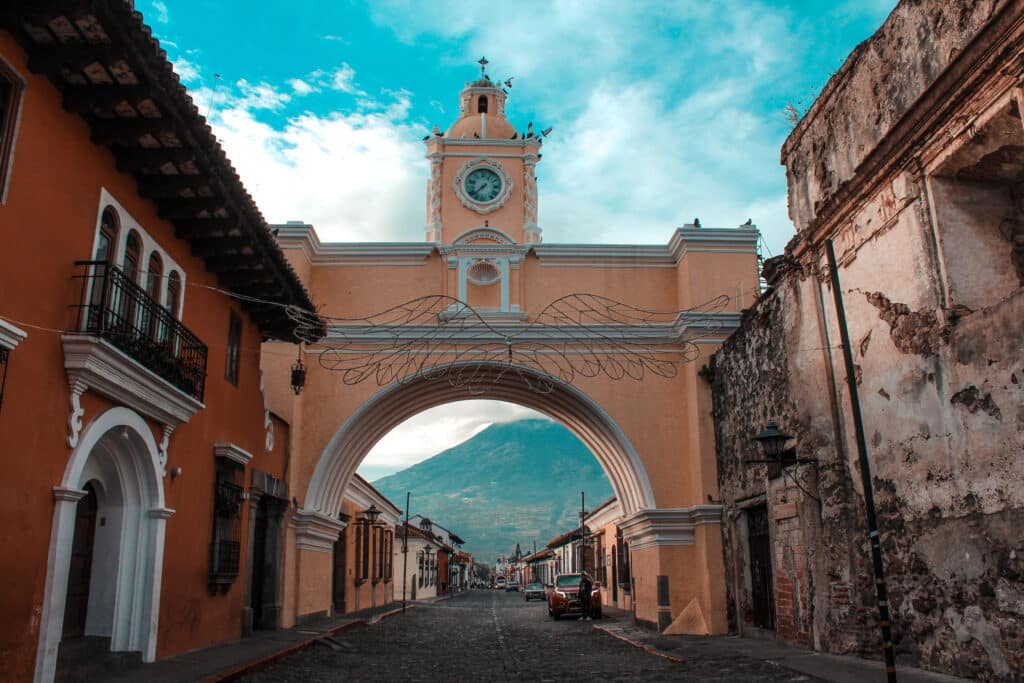
3. Things to Do
What are the best activities and can’t-miss sights in your destination?
Write a “listicle” style blog post about all the best things to do when visiting a destination.
- 9 Awesome Things to Do in Antigua, Guatemala
- 11 Amazing Things to Do in Venice, Italy
- Top 10 Things to Do in Copenhagen, Denmark
4. Where to Eat
People are always looking for the best places to eat in a destination. If you tried a bunch of great restaurants and cafes on your trip, write about them!
You can also put a spin on this, like best vegetarian restaurants or a gluten-free dining guide.
- 10 Places for the Best Brunch in Paris
- Where to Eat in Antigua, Guatemala
5. Where to Stay
Another idea is writing a guide to the best places to stay in a destination.
You can actually get multiple blog posts out of this (for example, writing a guide to boutique hotels and then a guide to budget-friendly accommodations) or combine them all into one big guide for a destination. This is a great way to work in hotel affiliate links.
- Where to Stay in Cartagena, Colombia
- 18 Best Boutique Hotels in New York City
- Where to Stay in Copenhagen, Denmark
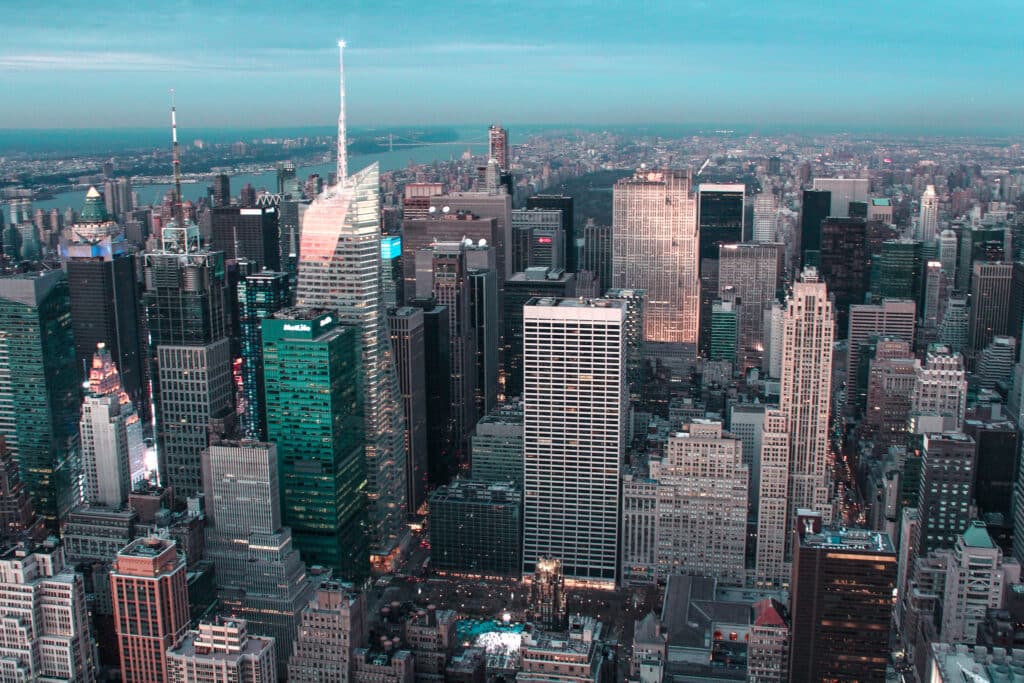
6. Packing Guide
Packing guides for a destination are super useful to travelers!
Especially if you choose an angle like focusing on commonly-forgotten items to pack, or what to pack for a specific season. This is another blog post idea where you can easily work in affiliate links from Amazon or other retailers to the travel gear you recommend to pack.
- What to Pack for Italy: 10 Essential Items
- The Essential New York Winter Packing List
- Disney Packing List: Don’t Forget These Items!
7. Travel Tips
I have picked up so many useful tips before visiting a destination by reading blog posts beforehand. Sometimes those tips are extremely useful and help me have a unique experience while traveling, or avoid making a common mistake in a destination!
You can compile all your best travel tips for a destination into one blog post.
- 10 Tips for Surviving Disney World in the Summer
- 40 Essential Guatemala Travel Tips
- 5 Essential Tips for New York at Christmas
8. What Not to Do
Along the same lines as above, you can write a blog post sharing specific tips about what NOT to do in a destination, or common travel mistakes to avoid.
These types of posts are always popular because people don’t want to make mistakes on their trip!
- What Not to Do in Italy: 10 Common Tourist Mistakes
- 9 Disney World Mistakes to Avoid
- 10 Common New York Tourist Mistakes to Avoid
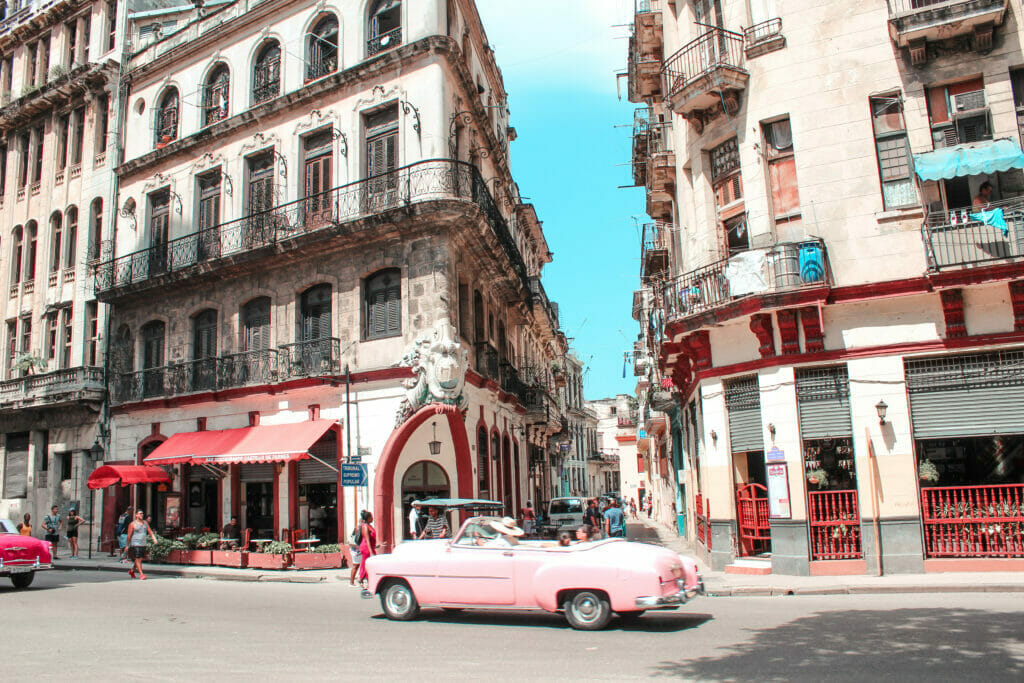
9. Inspirational
Inspirational blog posts are a great way to influence other people to visit a destination!
This can be anything from a “listicle” type blog post about the best reasons to visit a destination, or a collection of stunning photos that show off the beauty of a destination.
- 9 Reasons You Need to Visit Cartagena, Colombia
- 10 Photos That Will Inspire You to Visit Havana, Cuba
10. How to Guide
Did you figure out how to do something on your trip that other travelers would be interested in?
This can be anything from how to get from one destination to another, how to take a day trip to a certain place, how to have a unique experience, etc.
- How to Take a Day Trip from Barcelona to Montserrat
- How to Visit the White House
- How to Take a Gondola Ride in Venice for Two Euros
11. Specific Places
Another ideas is writing a guide to specific places in a destination.
This could be literally anything such as museums, bookstores, street art, prettiest viewpoints, coffeeshops, and so on. Lots of options for this one!
- 8 Best Bookstores in NYC You Need to Visit
- The Best Winter Rooftop Bars in NYC
- 7 Best Cotswolds Villages You Need to Visit

12. Hotel Review
I don’t often write hotel reviews on my blog, but some bloggers find them to be lucrative (you can use a hotel affiliate link in your blog post.)
So if you loved where you stayed, write about it!
- The Graham Georgetown Review
- Caribbean Luxury at The Ritz-Carlton, Grand Cayman
13. Experiences
People are always looking for real, personal reviews from other travelers.
Is there a specific activity or experience you did on your trip? Write a detailed review of it! This can include pros and cons, helpful information, costs, etc. to help other travelers.
- Visiting a Cranberry Bog in Massachusetts
- What’s It Like to Study Spanish in Antigua, Guatemala?
- Disney After Hours Review: Is It Worth the Money?
More Travel Blogging Tips
These are 13 blog posts you can create from a single trip!
For more tips and ideas about travel blogging, check out the following blog posts…
- How to Start a Travel Blog for Beginners
- 50 Awesome Travel Blog Post Ideas
- 6 Best WordPress Themes for Travel Blogs
- How to Make Money with a Travel Blog
Good luck and happy blogging!
Save it to Pinterest:
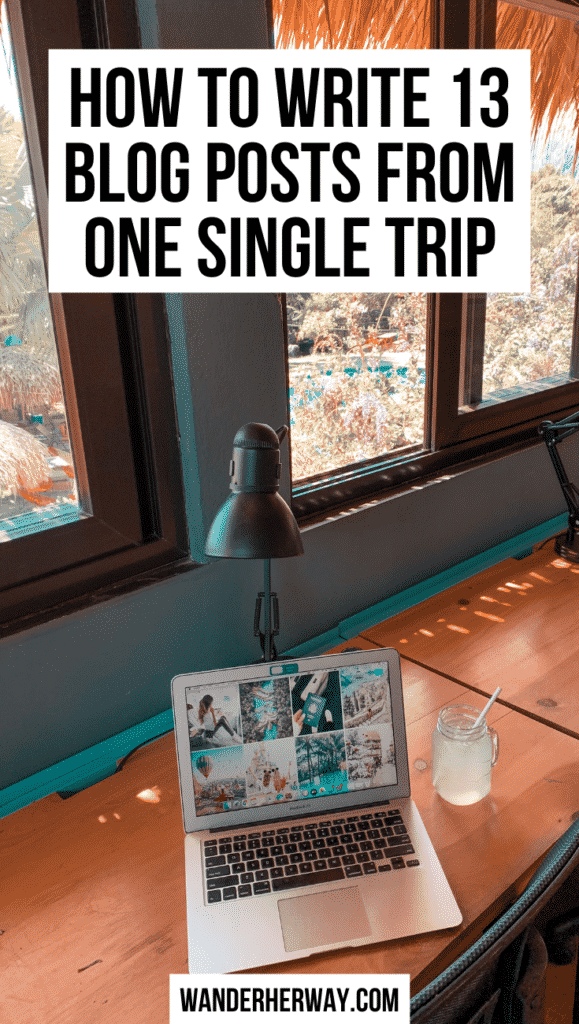
About Denise Cruz
Denise is a marketing executive who escaped corporate to travel the world… twice. A Brazilian native living in the U.S., she’s lived in 4 countries and visited 35+ others. After side-hustling her way to financial independence, she curates solo destination guides, slow travel tips, and travel blogging advice on Wander Her Way. When she’s not on the road, you can find her in Miami with her dog Finnegan.
An official website of the United States government
The .gov means it’s official. Federal government websites often end in .gov or .mil. Before sharing sensitive information, make sure you’re on a federal government site.
The site is secure. The https:// ensures that you are connecting to the official website and that any information you provide is encrypted and transmitted securely.
- Publications
- Account settings
Preview improvements coming to the PMC website in October 2024. Learn More or Try it out now .
- Advanced Search
- Journal List
- Elsevier - PMC COVID-19 Collection

Post-pandemic and post-traumatic tourism behavior
a Department of Integrated Resort and Tourism Management, Faculty of Business Administration, University of Macau, China
Jinyoung Im
b School of Hospitality and Tourism Management, Spears School of Business, Oklahoma State University, United States
Kevin Kam Fung So
Associated data, introduction.
The COVID-19 pandemic, a multi-faceted crisis and a potentially traumatic event, is both a personally impactful event and a globally shared experience (e.g., Williamson et al., 2021 ). However, exposure to highly stressful events can also be a precursor to post-traumatic growth, the positive personal growth people experience when emerging from adversity ( Tedeschi & Calhoun, 2004 ). In this perspective article, we aim to examine post-pandemic tourism behavior through the theoretical lens of post-traumatic growth. Casting COVID-19 as a catalyst for personal growth, we explore how post-pandemic travel and tourism activities manifest as the consequences of post-traumatic growth as well as the means for it. More importantly, we attempt to understand how post-traumatic growth and post-pandemic restructured assumptions about travel and tourism jointly influence the post-pandemic and post-traumatic tourism behavior.
Prior literature recognizes five major domains of post-traumatic growth: changed priorities and a deeper appreciation of life; development of closer social relationships; resilience; openness to new life possibilities; and greater existential or spiritual growth ( Tedeschi & Calhoun, 2004 ). Post-traumatic growth entails a process of shattering the old “assumptive world,”—one's general understanding of the world—and restructuring the fundamental components of a new one in its place. The COVID-19 pandemic has been a seismic force of disruption to the act of travel. Restrictions in movements, border closures, cancellations of flights and other transportation means, and closures of tourist destinations have drastically shattered the pre-pandemic assumptions people held for travel and tourism. The pandemic also accelerated some geopolitical trends such as de-globalization, isolationism, and regionalism. In this research, we present a set of seemingly opposing behavioral tendencies in an attempt to capture the imprints of post-traumatic growth and restructured assumptions about travel on post-pandemic tourism behaviors. Namely, rebound and retreat, connectedness and estrangement, and self-transcendence and self-diminishment in post-pandemic and post-traumatic tourism behavior.
Rebound and retreat
Post-traumatic growth reflects coping with the lingering distress of the trauma and attempts at psychological survival ( Tedeschi & Calhoun, 2004 ). In the post-pandemic era, travel and tourism patterns are likely to mirror post-traumatic growth's initial stage of return to baseline, recovery, and reset. As the pandemic abates and travel restrictions start to ease, a sudden surge in travel and tourism activities in the initial post-COVID period is expected. For example, on June 11, 2021, more than two million people screened through U.S. airport security checkpoints in a single day, which more than doubled the number in April 2020 and was close to 75% of the volume recorded on the same day in 2019 ( Koenig, 2021 June ). The predicted sudden and dramatic rebound in travel demand is vividly described as “revenge travel” in the media ( Bologna, 2021 April ). Such burning urge to travel also has psychological roots, signifying travelers' need for retribution against COVID-19 and a regained sense of control to return to normalcy.
As tourism rebounds, retreat behavior in tourism is also likely to be salient. With a heightened sense of vulnerability induced by the pandemic, retreat behavior of the “6 foot-tourism world,” or the disconnection between tourism spaces and reframing tourism activities on a local scale ( Lapointe, 2020, p. 636 ), manifests in behaviors such as maintaining social distancing from other travelers, avoiding overly popular tourism destinations, choosing less-known tourism destinations, and preferring regional travels. Solitary travel experiences such as camping in remote areas ( Bhalla et al., 2021 ) and travel centered on retreat experience ( Wang et al., 2021 ) are likely to continue to gain popularity after the pandemic. Solo travels that are unconstrained by interpersonal decision making and motivated by solitary experience are on the rise as well ( Shin et al., 2022 ).
Connectedness and estrangement
One of the most noticeable domains of post-traumatic growth is developing closer relationships with others ( Tedeschi & Calhoun, 2004 ). The relationship domain of post-traumatic growth will be particularly salient in the post-COVID era. The COVID-related movement restriction measures, such as suspension of social gatherings and travel bans, have resulted in a sense of social disconnectedness ( Kato et al., 2020 ). Visiting immediate family and friends is likely to be a strong travel motivation that drives the first wave of travel in the immediate wake of the pandemic. Increasing demand in multi-generational travel may also be expected.
While the tourism industry will benefit from post-traumatic growth in building stronger interpersonal relationships, of particular significance is the simultaneous social estrangement induced by the pandemic at interpersonal, community, national, and international levels. At the interpersonal level, moments of subtle hostility and belligerence are found in various leisure situations. For example, a visitor without a mask assaulted a native elderly person in Hawaii ( Bourlin, 2021 March ). At the destination level, residents' “us versus them” mentality has been reignited. Many countries have banned cruise ship arrivals at their ports ( Fox, 2021 February ). At the national and international levels, deglobalization, isolationism, and the regionalism of tourism ( Brouder et al., 2020 ) will have opposing effects on tourism development. Tourists may also display xenophobia that leads to reduced international travel, hesitation to try foreign food, and greater preference for using a travel agency and group travel ( Kock et al., 2019 ). The localized and regionalized travel trends due to nationalistic thoughts, distrust, anxiety, and even hostility have intensified during the pandemic ( Brouder et al., 2020 ) and may have a long-term adverse effect on post-pandemic travel and tourism.
Self-transcendence and self-diminishment
Catastrophic events drastically alter people's outlooks in life as people make sense of events, search for meaning and purpose, and seek spiritual growth ( Tedeschi & Calhoun, 2004 ). Given its severity, the COVID-19 pandemic could be considered as existential hapax, a crucial moment of life and an intense experience that led to significant physical, emotional, and spiritual transformation ( Matteucci, 2021 ). In the post-pandemic era, travel for purpose and morality may become more prevalent as people engage in a deeper introspective reflection in searching for purpose and constructing a revised life narrative. The COVID-19 pandemic has exacerbated many social issues such as unequal access to health care, poverty, food insecurity, racial injustice, and more. A notable phenomenon during the pandemic is the occurrence of large-scale protests despite the risk of spreading the virus ( Berger, 2020 October ). New forms of activism-based tourism are emerging, such as justice tourism and protest tourism ( Guia, 2021 ). For example, in August 2020, Portland, Oregon in the United States saw an increase in the number of tourists who came to visit the sites of the Black Lives Matter protests ( Gallivan, 2020 August ). The focus of alternative tourism is social eudaimonia that highlights compassion, ethics, and collective well-being ( Matteucci et al., 2021 ).
The Covid-19 pandemic induces direct health threats as well as secondary stressful events stemming from pandemic-related circumstances such as financial distress, separation from one's social support system, and a prolonged pandemic without an end in sight ( Williamson et al., 2021 ). Such wide-spread stressors can lead to negative psychological responses such as depersonalization (a sense of detachment from self, others, and the world) and a sense of self worthlessness ( Williamson et al., 2021 ). Such self-diminishment tendencies may manifest in tourism behaviors such as lack of interest in travel and reduced enjoyment when they do.
This research offers a post-traumatic growth theoretical perspective of post-pandemic tourism behavior ( Fig. 1 ). While the post-pandemic and post-traumatic tourism behaviors are presented as outcomes of both pandemic induced and post-traumatic induced changes, it is important to recognize that the two forces are often intertwined. For example, pandemic-induced risk reduction (retreat) behaviors are conceptually related to post-traumatic growth. While current literature predominately approaches post-traumatic growth as a general measure (e.g., the post-traumatic growth inventory, Tedeschi & Calhoun, 1996 ; the traumatic life events questionnaire, Kubany, 2004 ), this research demonstrates that trauma-specific restructured assumptions might interact with the generic domains of post-traumatic growth to bear on domain-specific (i.e., travel and tourism) post-traumatic growth.

A conceptual framework of post-pandemic post-traumatic tourism behavior.
This research may offer implications for other crises that threaten tourism such as natural disasters, terrorism, and military conflicts. Miao et al. (2021) provided a terror management perspective of COVID-19 travel and tourism behavior. The post-traumatic growth perspective offered by this research extends the literature by portraying post-pandemic travel and tourism behavior as conscious efforts against mortality. Different degrees of such traumatic events experienced by individuals may manifest in different tourism behaviors. For example, people with a lower degree of risk perception toward COVID-19 intend to travel longer and more frequently ( Kim et al., 2021 ).
Future research can build on the theoretical foundations laid out by this study to test the relationships between post-pandemic tourism behavior and post-traumatic growth. Another fruitful inquiry is to what extent post-pandemic travels trigger feelings of traumatic growth and which forms of travel are most effective in inducing such effects. In addition, future researchers can take a qualitative approach through in-depth interviews and personal narratives to explore the connections between post-pandemic tourism activities and post-traumatic growth.
Declaration of competing interest
Biographies.
Li Miao is a professor at University of Macau, focusing on travel and tourism behavior.
Jinyoung Im is an assistant professor at Oklahoma State University, interested in consumer
Kevin Kam Fung So is an associate professor at Oklahoma State University, interested in
services marketing.
Yan Cao is a doctoral candidate at Oklahoma State University, interested in consumer behavior.
Associate editor: Jeroen Nawijn
Appendix A Supplementary data to this article can be found online at https://doi.org/10.1016/j.annals.2022.103410 .
Appendix A. Supplementary data
The following is the supplementary data related to this article.
Post-pandemic and post-traumatic tourism behavior.
- Berger M. The Washington Post; 2020, October 2. The pandemic is an ear of protests—And protest restrictions. https://www.washingtonpost.com/world/2020/10/02/coronavirus-pandemic-demonstrations-protest-restrictions/
- Bhalla R., Chowdhary N., Ranjan A. Spiritual tourism for psychotherapeutic healing post COVID-19. Journal of Travel & Tourism Marketing. 2021:1–13. [ Google Scholar ]
- Bologna C. Huffpost; 2021, April 6. ‘Revenge travel’ will be all the rage over the next few years. https://www.huffpost.com/entry/revenge-travel-future_l_6052b724c5b638881d29a416
- Bourlin N. Sfgate; 2021, March 27. ‘Your vacation is my home’: Hawaii's residents are speaking out against tourists behaving badly. https://www.sfgate.com/hawaii/article/hawaii-residents-locals-tourists-behaving-badly-16056414.php
- Brouder P., Teoh S., Salazar N., Mostafanezhad M., Pung J., Lapointe D., Desbiolles F., Haywood M., Hall C.M., Clausen H. Reflections and discussions: tourism matters in the new normal post COVID-19. Tourism Geographies. 2020; 22 (3):735–746. [ Google Scholar ]
- Fox A. Travel + Leisure; 2021, February 28. Canada extends ban on cruise ships until at least 2022. https://www.travelandleisure.com/cruises/canada-bans-cruise-ships-until-2022
- Gallivan J. Portland Tribune; 2020, August. Wish you were here: Portland sees surge in protest tourism. https://pamplinmedia.com/pt/9-news/475933-384307-wish-you-were-here-portland-sees-surge-in-protest-tourism
- Guia J. Conceptualizing justice tourism and the promise of posthumanism. Journal of Sustainable Tourism. 2021; 29 (2–3):502–519. [ Google Scholar ]
- Kato T.A., Sartorius N., Shinfuku N. Forced social isolation due to COVID-19 and consequent mental health problems: Lessons from hikikomori. Psychiatry and Clinical Neurosciences. 2020; 74 (9):506–507. [ PMC free article ] [ PubMed ] [ Google Scholar ]
- Kim E.E.K., Seo K., Choi Y. Compensatory travel post COVID-19: Cognitive and emotional effects of risk perception. Journal of Travel Research. 2021:1–15. [ Google Scholar ]
- Kock F., Josiassen A., Assaf A.G. The xenophobic tourist. Annals of Tourism Research. 2019; 74 :155–166. [ Google Scholar ]
- Koenig D. AP News; 2021, June. Travel rebound: 2 million people go through US airports. https://apnews.com/article/coronavirus-pandemic-technology-health-lifestyle-travel-a2b3260a8633c2404dab44507b5de811
- Kubany E. Western Psychological Services; Los Angeles, CA: 2004. Traumatic life events questionnaire and PTSD screening and diagnostic scale. [ Google Scholar ]
- Lapointe D. Reconnecting tourism after COVID-19: The paradox of alterity in tourism areas. Tourism Geographies. 2020; 22 (3):633–638. [ Google Scholar ]
- Matteucci X. Tourism Recreation Research; 2021. Existential hapax as tourist embodied transformation; pp. 1–5. [ Google Scholar ]
- Matteucci X., Nawijn J., von Zumbusch J. A new materialist governance paradigm for tourism destinations. Journal of Sustainable Tourism. 2021:1–16. [ Google Scholar ]
- Miao L., Im J., Fu X., Kim H., Zhang Y.E. Proximal and distal post-COVID travel behavior. Annals of Tourism Research. 2021; 88 [ Google Scholar ]
- Shin H., Nicolau J.L., Kang J., Sharma A., Lee H. Travel decision determinants during and after COVID-19: The role of tourist trust, travel constraints, and attitudinal factors. Tourism Management. 2022; 88 [ PMC free article ] [ PubMed ] [ Google Scholar ]
- Tedeschi R.G., Calhoun L.G. The posttraumatic growth inventory: Measuring the positive legacy of trauma. Journal of Traumatic Stress. 1996; 9 (3):455–471. [ PubMed ] [ Google Scholar ]
- Tedeschi R.G., Calhoun L.G. Posttraumatic growth: Conceptual foundations and empirical evidence. Psychological Inquiry. 2004; 15 (1):1–18. [ Google Scholar ]
- Wang Y.C., Chen P.J., Shi H., Shi W. Travel for mindfulness through Zen retreat experience: A case study at Donghua Zen Temple. Tourism Management. 2021; 83 [ PMC free article ] [ PubMed ] [ Google Scholar ]
- Williamson R., Hoeboer C., Primasari I., Qing Y., Coimbra B., Hovnanyan A., Grace E., Olff M. Symptom networks of COVID-19 related versus other potentially traumatic events in global sample. Journal of Anxiety Disorders. 2021; 84 [ PMC free article ] [ PubMed ] [ Google Scholar ]
Security Alert May 17, 2024
Worldwide caution.
- Travel Advisories |
- Contact Us |
- MyTravelGov |
Find U.S. Embassies & Consulates
Travel.state.gov, congressional liaison, special issuance agency, u.s. passports, international travel, intercountry adoption, international parental child abduction, records and authentications, popular links, travel advisories, mytravelgov, stay connected, legal resources, legal information, info for u.s. law enforcement, replace or certify documents.
Get a Passport
Renew or Replace a Passport
Get My Passport Fast
Prepare to Apply
Passport Help
Legal Matters
Renew or Replace a Passport Homepage
Share this page:
Renew by Mail
Renew Online
Change or Correct a Passport
Report my Passport Lost or Stolen
Replace a Limited Validity Passport
Get Copies of Passport Records
Eligible U.S. citizens can now renew their passports online. We're conducting a beta release of an online passport renewal system.
If you are unable to start your application because we have reached the daily limit, try again another day. If you do not want to wait or do not qualify to renew online, you may also renew by mail .
This beta release during which we are limiting the daily applications is an important and standard part of the software development process. We appreciate your patience while we test our system and prepare for a full launch of the updated online passport renewal system.
Follow these steps to renew your passport online and track your status:
Confirm you meet the requirements
- Create your account
Start your application
- Enter your most recent passport info
Enter travel plans
- Upload digital photo
Sign and pay
Enroll in email updates.
You can renew online if you meet all these requirements:
- The passport you are renewing is or was valid for 10 years, and you are age 25 or older.
- We issued the passport you are renewing between 2009 and 2015, or over 9 years but less than 15 years from the date you plan to submit your application.
- You are not changing your name, gender, date of birth, or place of birth.
- You are not traveling for at least 8 weeks from the date you will submit your application. We will only offer routine service during this beta release, and the time it takes to get a passport will be the same as renewing by mail.
- You are applying for a regular (tourist) passport. You cannot renew a special issuance (diplomatic, official, service) passport online.
- You live in the United States (either state or territory). You do not qualify to renew online if you live in a foreign country or have an Army Post Office (APO) or Fleet Post Office (FPO) address.
- You have your passport with you, and it is not damaged or mutilated, and you have not reported it as lost or stolen. Keep your most recent passport and do not mail it to us.
- You can pay for your passport using a credit or debit card.
- You can upload a digital passport photo.
- You are aware that we will cancel the passport you are renewing after you submit your application. You cannot use it for international travel.
If you do not qualify to renew online, you may be able to renew by mail or in person at a passport agency or center .
Create your account
Click the Sign In button on the MyTravelGov homepage. Clicking the button will take you to Login.gov where you can sign in as an existing customer or create a new account.
Watch a video explaining how to create an account.
Find answers to frequently asked questions about the process of creating an account.
After creating your account, click on the "Renew Your Passport" button on the home page to start your application.
You can save your application and finish it at a later date. You have 30 days to complete your application after you start it. If you do not complete your application in 30 days, you will need to start over.
Enter info about your most recent passport
At this stage, we check the passport(s) you are renewing against our records to see if you can renew online.
- Enter your information as we printed it on the passport you are renewing.
- Try again if you believe you should be eligible to renew online. We may be experiencing temporary, technical issues with our system.
- If you are not eligible to renew online, the application will give you a list of reasons. Double check your information before re-entering it.
Validity of Most Recent Passport : Make sure your most recent passport is or was valid for 10 years. The passport must be expiring within one year or have been expired less than five years.
Your Name : Check the spelling, capitalization, hyphens, and spacing between letters in your name and compare them to your most recent passport.
- If your last name is spelled "McDonald" but printed as "Mc Donald," (with a space), make sure you enter your name as "Mc Donald"(with the space included) on the application.
- If your last name is spelled “Smith-Jenkins“ (with a hyphen) and printed in your most recent passport with the hyphen, try entering your name as “Smith Jenkins” (without a hyphen) or "SmithJenkins" (with no space). We will add the hyphen to your name when we review your application.
Passport Book, Passport Card, or Both Documents : You can renew passport books and passport cards online. If you want to renew a passport book but not a passport card, leave the card section blank on the application. If you want to renew a passport card but not a passport book, leave the book section blank.
The following chart explains what documents you can renew online:
Watch this video to learn how to enter info about your passport
If you are traveling in less than 8 weeks, you cannot renew online. We are only offering routine service .
- Routine times do not include mailing times.
- Routine times are the same for customers who renew online and by mail.
Need your passport in 3-8 weeks? Get expedited service and renew by mail .
Need your passport in less than 3 weeks? Make an appointment to renew in person at a passport agency or center.
Upload a digital photo
You will need to upload an original, digital photo in .JPEG file format.
- Go to our Uploading a Digital Photo page to see photo examples and requirements.
- Have someone else take your photo. No selfies.
- Do not scan a photo, or take a photo of an already printed photo.
Watch this video to learn how to upload a digital photo
Paying for your Passport
To complete your application, you must pay all passport fees . Click the “Sign and Pay” button which will take you to pay.gov where you will pay your passport fees.
Use your credit or debit card so we can process your payment fast. You can also use an ACH, or Automated Clearing House payment, to transfer funds from your bank account. Processing an ACH payment may take longer than a credit or debit card.
Confirming Payment
We will send you emails about the status of your payment.
The first email will notify you that your payment is pending. The second email will confirm we processed your payment, which may take up to 3 days. If we are unable to process your payment, you will receive an email asking you to login to your account and pay again.
Check your spam or junk folder if you do not see the emails in your inbox.
Keep Your Most Recent Passport
When you complete your application, you will need the passport you are renewing on hand. Keep your most recent passport. Do not mail it to us, or try to use it to travel since we will cancel it.
Watch this video to learn how to pay online
One week after you apply, go to our Online Passport Status System to enroll in more emails about the status of your application. We will notify you when your application is in process, approved, and when we send your passport. We will also notify you if we need more information to process your application.
Our Application Status page includes details about what each status message means.
Watch this video to learn what to do after you apply
How to get support
Request faster service or change your mailing address.
If your travel plans change, you may request expedite service for an extra $60, or 1-2 delivery of your completed passport book for an extra $21.36. One-to-two day delivery is not available for passport cards. We only send cards via First Class Mail.
If you are changing your mailing address, please note your new address must be in the United States (either state or territory). You cannot use an Army Post Office (APO) or Fleet Post Office (FPO) address.
Call the National Passport Information Center at 1-877-487-2778 . Provide your application number, or your last name and date of birth.
After you contact us, you won’t see any changes to your application in your MyTravelGov account.
Respond to a request for more information
Follow the instructions in the letter or email. You must respond within 90 days of the date on the letter or email. Our Respond to a Letter or Email webpage has tips and reminders on how to respond.
Contacting us if you need help
There are two different paths for support:
Technical Support for your Account : Contact the Login.gov team if you need help changing your password, verifying your account, or changing your account information.
Customer Support for your Passport Application : Contact us at 1-877-487-2778 if you have an issue completing your passport application, or you want to upgrade to expedited service, 1-2 day delivery, or change your mailing address.
Processing Times for Renewing Online
Routine: 6-8 weeks*
Expedited: We do not offer this service if you are renewing online. Mail us your application and supporting documents.
Urgent Travel: We do not offer this service if you are renewing online. Make an appointment at a passport agency or center.
*Mailing times are not included in processing times . Processing times only include the time your application is at one of our passport agencies or centers. The total time to get your passport includes both processing and mailing times.
External Link
You are about to leave travel.state.gov for an external website that is not maintained by the U.S. Department of State.
Links to external websites are provided as a convenience and should not be construed as an endorsement by the U.S. Department of State of the views or products contained therein. If you wish to remain on travel.state.gov, click the "cancel" message.
You are about to visit:
TheJakartaPost
Please Update your browser
Your browser is out of date, and may not be compatible with our website. A list of the most popular web browsers can be found below. Just click on the icons to get to the download page.
- Destinations
- Jakpost Guide to
- Newsletter New
- Mobile Apps
- Tenggara Strategics
- B/NDL Studios
- Archipelago
- Election 2024
- Regulations
- Asia & Pacific
- Middle East & Africa
- Entertainment
- Arts & Culture
- Environment
- Work it Right
- Quick Dispatch
- Longform Biz
No inbound cancellations over mpox yet, says travel association
The IINTOA says the current mpox outbreak has not led to any canceled travel plans to Indonesia, but also noted that many travelers and tour operators seemed unaware of government curbs to prevent the disease's spread.
Share this article
Change text size, gift premium articles to anyone.
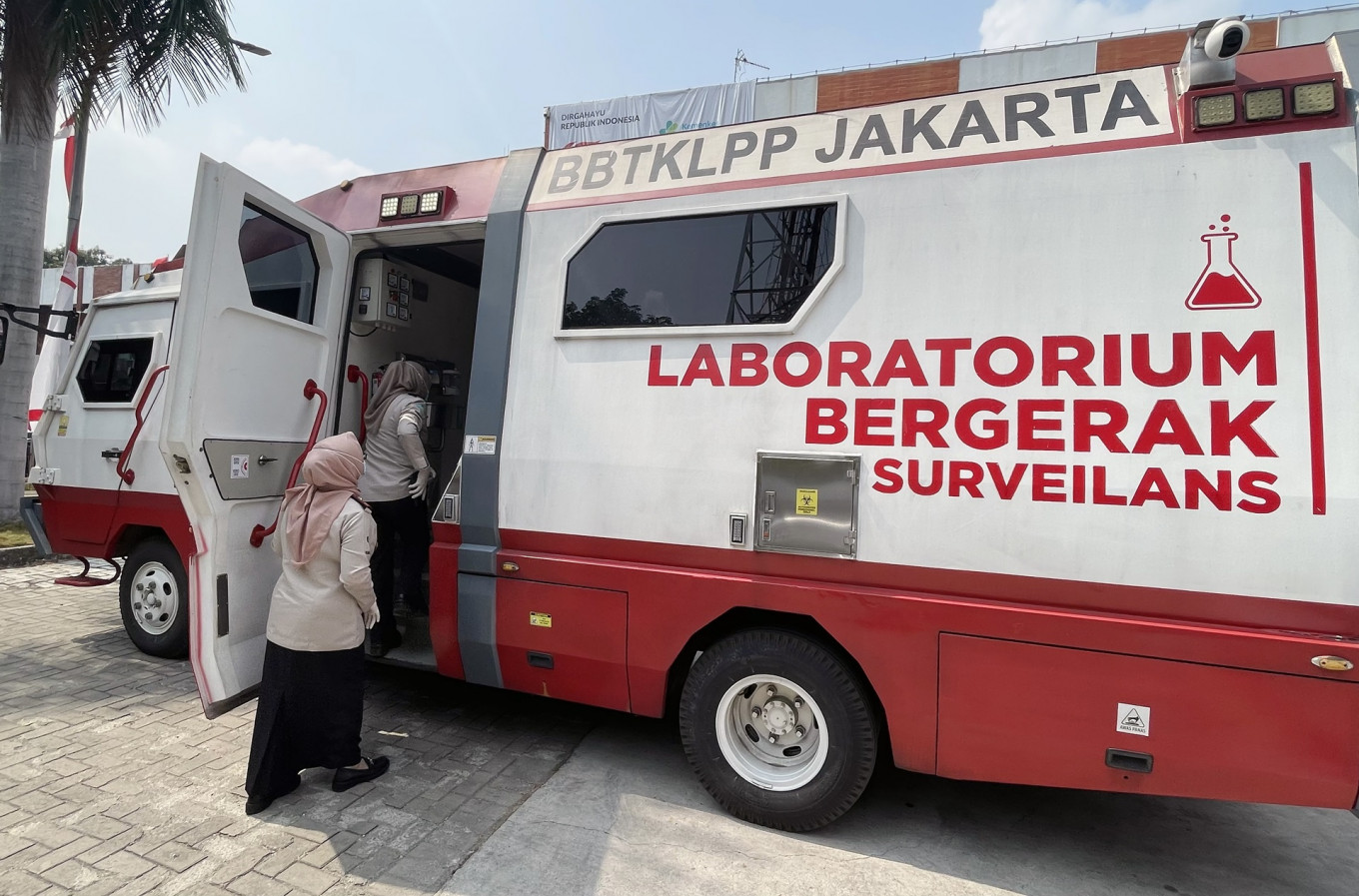
national tourism group says the latest global outbreak of mpox has not prompted foreign travelers to cancel their plans to visit Indonesia, at least for now.
Paul Edmundus, cofounder of the Indonesia Inbound Tour Operators Association (IINTOA), said on Monday that he could not say for sure whether operators were aware of the current outbreak.
“But what’s certain is that up until today, no one has canceled their travel [plans] to Indonesia,” Paul told a weekly press briefing of the Tourism and Creative Economy Ministry.
Speaking before him, the Health Ministry’s Surveillance and Quarantine Director Achmad Farchanny Tri Adriyanto said one individual infected with mpox had arrived in the country in 2022. In subsequent years, the ministry had recorded a tally of 73 cases in 2023 and 14 new cases to date in 2024.
“The latest case we detected this year was in May,” said Achmad, adding that all suspected cases reported afterward were checked and returned negative test results.
The tourism ministry’s lead expert Nia Niscaya said the news was “somewhat relieving, but we must not be complacent”.

Every Monday
With exclusive interviews and in-depth coverage of the region's most pressing business issues, "Prospects" is the go-to source for staying ahead of the curve in Indonesia's rapidly evolving business landscape.
By registering, you agree with The Jakarta Post 's Privacy Policy
for signing up our newsletter!
Please check your email for your newsletter subscription.
Continuing, Achmad said the government had implemented surveillance measures by installing thermal scanners at all international airports and seaports, as well as visual monitoring. Starting on Saturday, the Health Ministry had mandated all inbound travelers to complete the SatuSehat self-declaration form online prior to departing for Indonesia.

'Emergency Warning' trending on social media following House, MK standoff
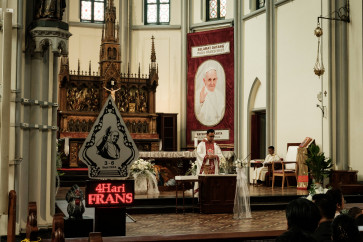
Indonesian Catholics’ joy and hopes for Pope Francis’ visit
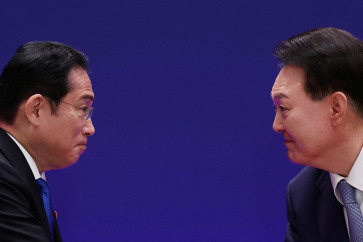
Japan's Kishida to visit South Korea for summit with Yoon
Related articles, soekarno-hatta airport tightens mpox surveillance, govt revives health tracking system for mpox ahead of iaf 2024, europe warned to prepare for mpox as pakistan reports first case, catholic pilgrimage travel pattern in labuan bajo released, tourism minister backs proposal to eliminate tax on flight tickets, related article, more in business.
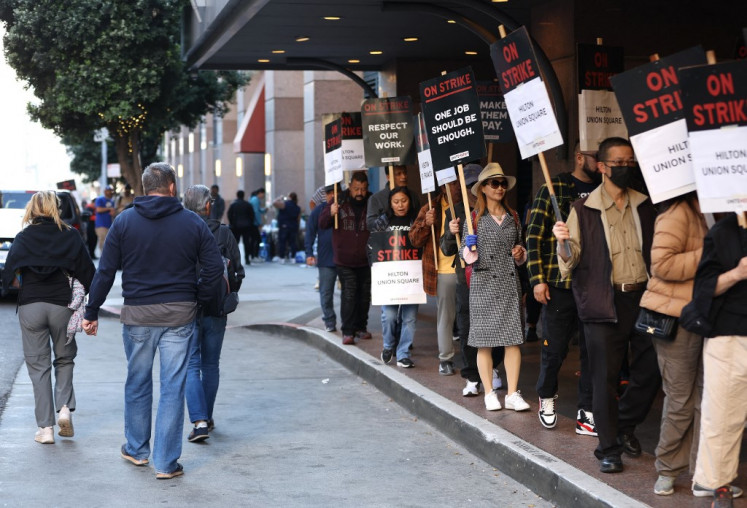
Workers see dramatic fall in share of global income: UN
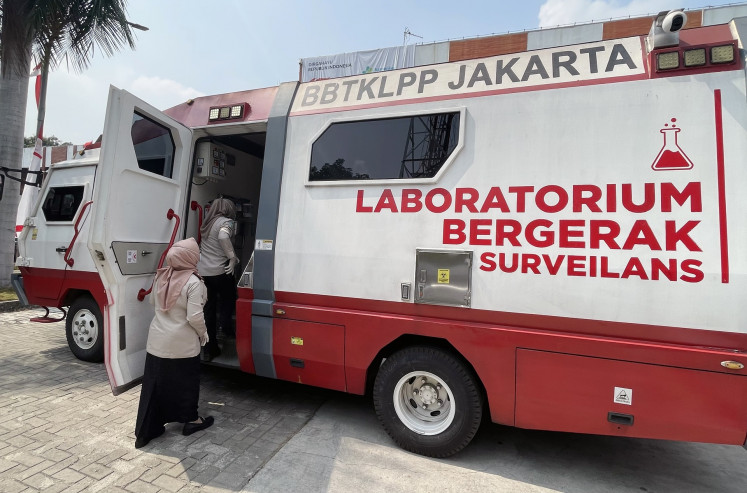
RI offers Kayan, Mamberamo hydropower plant investment opportunities to China

Pope calls for stronger interfaith ties to counter extremism, intolerance
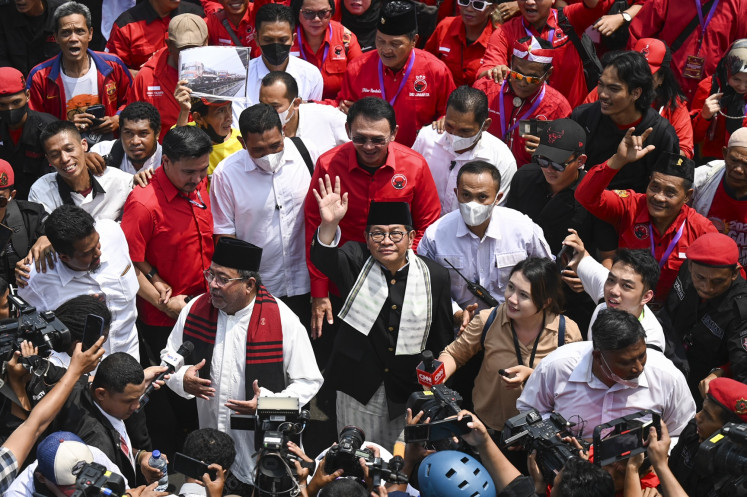
At least it’s competitive

Indonesia-Africa Forum concludes with 32 business deals
Ministry advises tv stations to show 'adzan' in text during papal mass broadcasts, government delays relocation of civil servants to nusantara, greater-jakarta commuters wary of govt’s plan of income-based fares, ai & us: navigating tomorrow’s workplace, changed 'forever': morocco slowly rebuilds a year after quake, your opinion matters.
Share your experiences, suggestions, and any issues you've encountered on The Jakarta Post. We're here to listen.
Thank you for sharing your thoughts. We appreciate your feedback.
- Jakpost Guide To
- Art & Culture
- Today's Paper
- Southeast Asia
- Cyber Media Guidelines
- Paper Subscription
- Privacy Policy
- Discussion Guideline
- Term of Use
© 2016 - 2024 PT. Bina Media Tenggara
to Read Full Story
Subscribe now.
- Unlimited access to our web and app content
- e-Post daily digital newspaper
- No advertisements, no interruptions
- Privileged access to our events and programs
- Subscription to our newsletters
Purchase access to this article for

Redirecting you to payment page
Pay per article.
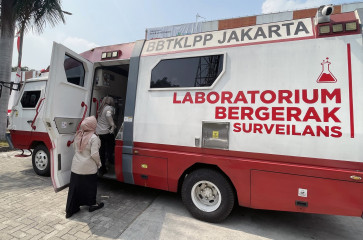
Rp 29,000 / article
Or continue login with
- Palmerat Barat No. 142-143
- Central Jakarta
- DKI Jakarta
- +6283816779933

Share options
Quickly share this news with your network—keep everyone informed with just a single click!
Change text size options
Customize your reading experience by adjusting the text size to small, medium, or large—find what’s most comfortable for you.
Share the best of The Jakarta Post with friends, family, or colleagues. As a subscriber, you can gift 3 to 5 articles each month that anyone can read—no subscription needed!
We’re sorry, but Freepik doesn’t work properly without JavaScript enabled. FAQ Contact
AI-generated image
From your imagination to a tangible image in just a few words
From social media posts or prints to any other layouts, and everything in between
See your designs in action on apparel, packaging or prints
- Notifications
- Go back Remove
- No notifications to show yet You’ll see useful information here soon. Stay tuned!
- Downloads 0/60 What is this?
- My collections
- My subscription
- Travel post
- Travel social media post
- Travel social media
- Travel post template
- Travel instagram post
- Travel social media design
- Travel social media template
- Travel post design
- Traveling post
Tourism Post Images

- Add to collection
- Save to Pinterest
- instagram set
- instagram pack
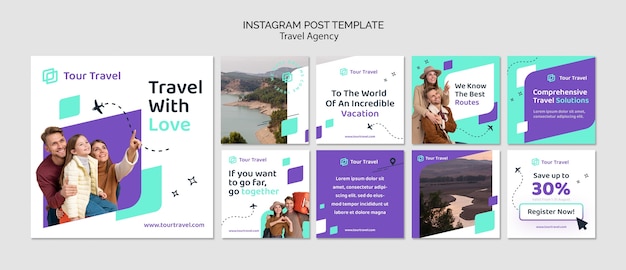
- travel world
- tourism traveling
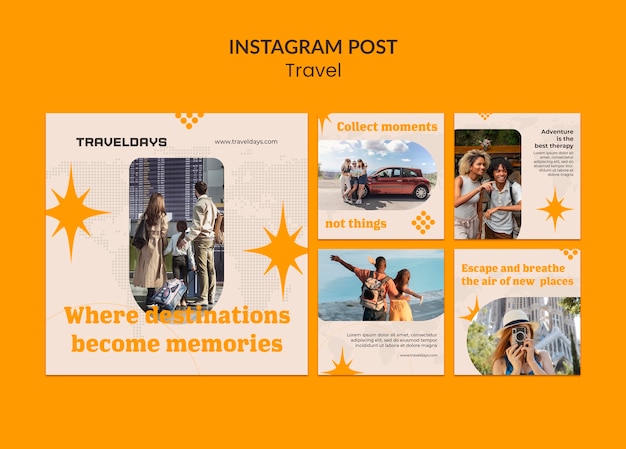
- post travel
- template travel

- design template
- banner instagram

- airplane poster
- airplane background

- banner post
- banner square
- business post

- gradient post
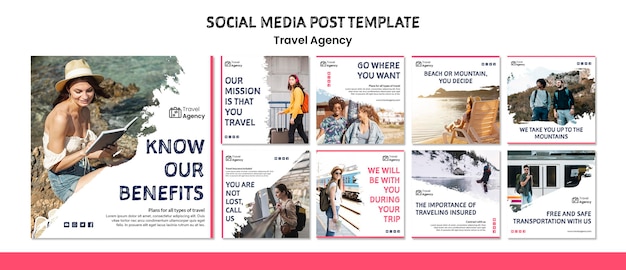
- ad template
- advertising design
- creative layout

- minimal template
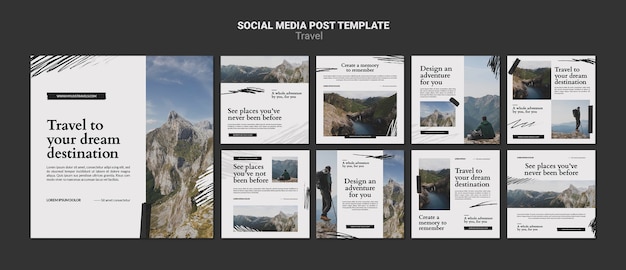

IMAGES
COMMENTS
The term 'post-tourist' is commonly used to refer to a new breed of travellers, those who eschew common 'hotspots', immersing themselves in "local culture" for an extended period of time.
Abstract. Tourism has typically emphasized spatiotemporal movement from usual environments. Post-tourism has, however, become a generalized social condition entailing fragmentation of tourism practices and de-differentiation between tourism and other social realms. Some forms of post-tourism even begin in one's hometown.
So, for us, Post-Tourism simply refers to all those types of travel that encourage the overcoming of tourism, in all its forms. That may mean a complete rejection ( Anti-Tourism ), the choice to break the boundaries between everyday, ordinary life and travel ( Global Nomadism ), and the virtualization of the whole tourist experience ( Virtual ...
The term "post-tourist" is commonly used to refer to a new breed of travellers, those who eschew common tourist "hotspots" and opt for a more unconventional experience, immersing themselves in "local culture" for an extended period of time. The concept of the post-tourist has developed in response to consumer attitudes and ...
The change created by postmodernism in tourism practices has been further advanced by Feifer's. (1985) use of the concept of post-tourist. Although the con cept of post-tourist has been used in ...
Welcome to the age of the "post-tourist". A tourist photographs art on the Berlin Wall. Berlin is considered a 'post-tourism' hot spot. The term "post-tourist" is commonly used to refer to a new breed of travellers, those who eschew common tourist "hotspots" and opt for a more unconventional experience, immersing themselves in ...
The Post Travel Evaluation in CDC Yellow Book; Long-Term Travelers & Expatriates in CDC Yellow Book; Screening Asymptomatic Returned Travelers in CDC Yellow Book . Page last reviewed: October 06, 2022. Content source: National Center for Emerging and Zoonotic Infectious Diseases (NCEZID) Division of Global Migration Health (DGMH) ...
Provides a revised theoretical view of post-tourism in the age of social media. Investigates empirically how urban explorers handle spreadability. Analyses the role of social media as a means of distinction in post-tourism. Introduces and develops three registers of "reflexive hesitation". Shows how spreadability sustains differentiation ...
Post-tourism beginning in everyday routines could be understood anthropologically as the liminal practices of tourists in their quotidian spaces and this marks a deviation from tourism studies assuming that liminal spaces of tourists occur predominantly in tourism destinations. Therefore, it is necessary to refine the liminality theory to ...
At the same time, the "post-tourist" (Feifer 1985) ironically challenges the notion of postmodernity; the post-tourist is cognizant of the frivolity and shallowness of contemporary tourism (and contemporary culture), understands that tourism is an "as if" game, and delights in making choices, rational or not, based on knowledge and ...
The post-tourist approaches tourism as a game, where the world becomes a stage - from the local shopping mall to theme parks and exotic destinations (see also Ritzer & Liska, 1997). This means that the post-tourist is actually playing the role of a tourist, gazing at other tourists and anticipating their gazes, rather than identifying
Post-COVID tourism Although significant restrictions are still in place, travel agency adverts have become more frequent recently. According to reports , holiday bookings have once again begun to ...
The first is predictable, yet safe, second one is uncertain and certainly very exciting. Surely, the former is valid - see what makes the city what it is, see history and find art, but more and more travelers opt for the latter, changing from tourism to post-tourism, from being just a visitor to becoming a part of the city for a little while.
Postmodern Tourism and The Concept of Post-Tourist Although postmodernism began to be effective in the social sphere since the 1960s, the 1980s were the period when postmodernism was booming (Callinicos, 2001, p.13). In addition, this period was the period when postmodernism started to affect the tourism area.
Scotland's formerly secluded Fairy Pools have become marred by apocalyptic congestion with tourists waiting in four-hour traffic jams to visit them, according to local tour companies.
"Post-tourism" is an ambiguous term, certainly, but it invariably suggests something of a departure from everyday "boring" tourism. The rise of the post tourist - as an offshoot of the ...
The World Economic Forum has published its inaugural Travel and Tourism Development Index. It focuses on the growing role of sustainability and resilience in travel and tourism growth. Recovery for the sector is uneven and tourist arrivals in January 2022 were still 67% below 2019 levels, according to the World Tourism Organization.
9. Generalists. Generalist tourists are a combination of all types of tourists. These travelers set out to a certain destination with an open mind to experience as much as it has to offer. A generalist tourist can look at a certain style of architecture one day and be interested in the food of a city the next day.
The Encyclopedia of Tourism Management and Marketing is, quite simply, the definitive reference work in the field. Carefully curated by leading tourism scholar Dimitrios Buhalis, this is the largest tourism management and marketing ontology that has ever been put together and offers a holistic examination of this interdisciplinary field. Use the Search within Book (below right) or browse the ...
Tourism continues to be one of the sectors hit hardest by the COVID-19 pandemic, particularly for countries in the Asia-Pacific region and Western Hemisphere. Governments in these regions, and elsewhere, have taken measures to ease the economic shock to households and businesses, but longer-term the industry will need to adapt to a post-pandemic “new normal.”
1. Itinerary. The first blog post you can write about your trip is an itinerary guide! Whether it's a short weekend guide or a full one-week itinerary to your destination, write about what to do, where to stay, etc. in order to have the perfect trip. You can actually get even more blog posts out of this one if you write itineraries of ...
Fukui, Japan. If the past few months are any indication, tourism in Japan could surpass pre-pandemic levels in 2024. To escape the urban sprawl and see one of the most spiritual parts of the ...
equilibrium at which tourism will possibly settle (Kock et al. 2020) will be able to position themselves well in a post-COVID-19 era, thereby paving the way for competitiveness and further growth. Given the unprecedented impact of the pandemic on tourism, new and disruptive adaptations and innovations may find a very fertile ground in this crisis.
Section snippets Post-tourism as a generalized social condition. The term post-tourism originally appeared in Maxine Feifer's (1985) book Going Places.Her analysis addresses the growing awareness among tourists, especially within the middle classes, that there cannot be any "authentic" tourist experience since tourism by definition constitutes an organized and largely staged practice ...
Post-pandemic and post-traumatic tourism behavior. Prior literature recognizes five major domains of post-traumatic growth: changed priorities and a deeper appreciation of life; development of closer social relationships; resilience; openness to new life possibilities; and greater existential or spiritual growth (Tedeschi & Calhoun, 2004).Post-traumatic growth entails a process of shattering ...
'Disaster tourism' is usually conflated with 'dark tourism' and also is often linked with disaster recovery. This article contributes to discussion on these relationships by examining the post-disaster narratives which have played out through tourism in the central Canterbury city of Christchurch, New Zealand, following the major earthquakes of September 2010 and February 2011.
Detours with locals. Travel tips you can trust.
If you are changing your mailing address, please note your new address must be in the United States (either state or territory). You cannot use an Army Post Office (APO) or Fleet Post Office (FPO) address. Call the National Passport Information Center at 1-877-487-2778 . Provide your application number, or your last name and date of birth.
Share the best of The Jakarta Post with friends, family, or colleagues. As a subscriber, you can gift 3 to 5 articles each month that anyone can read—no subscription needed! national tourism ...
Find & Download Free Graphic Resources for Tourism Post. 79,000+ Vectors, Stock Photos & PSD files. Free for commercial use High Quality Images